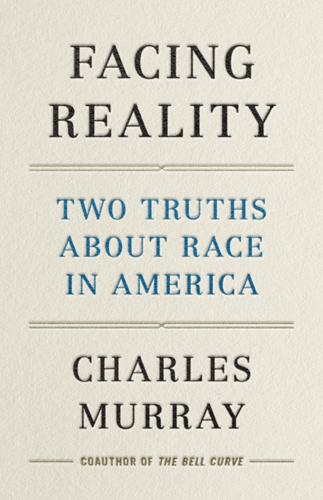
Facing Reality: Two Truths About Race in America
by
Charles Murray
Published 14 Jun 2021
For a review of the state of knowledge as of the early 1990s, see Chapter 17 of Richard Herrnstein and Charles Murray, The Bell Curve: Intelligence and Class Structure in American Life (1994). For an update through the first half of the 2000s, see Chapter 2 of Charles Murray, Real Education: Four Simple Rules for Bringing American Education Back to Reality (2008). For a discussion that incorporates recent developments in the understanding of heritability and the nonshared environment as they relate to early interventions, see Chapter 13 of Charles Murray, Human Diversity: The Biology of Gender, Race, and Class (2020).
…
“I suggest that when we give such parents vouchers, we will observe substantial convergence of black and white test scores in a single generation,” I wrote, confident that I was right. During the 1980s, a number of new studies gave reason to think that things were getting better even without a school voucher program. When Richard Herrnstein and I were writing The Bell Curve in the early 1990s, we included encouraging signs that the European–African test-score difference was diminishing, though we were worried about signs that the narrowing had stalled. By the time George W. Bush came to office in 2001, the stalling had continued for more than a decade.
…
A close examination of changes in the nature of the Latin immigrant pool over that period might give some clues. The mean difference in the eleven test results during the 2010s is 0.62 SDs, and that will serve as my estimate of the current European–Latin difference. The European–Asian Difference When Richard Herrnstein and I were writing The Bell Curve in the early 1990s, our assessment was that Asians had a higher mean IQ than Europeans, but the fragmentary data then available made that conclusion quite tentative. By now the evidence has piled up and is conclusive. On average, Asians outscore Europeans, Africans, and Latins.
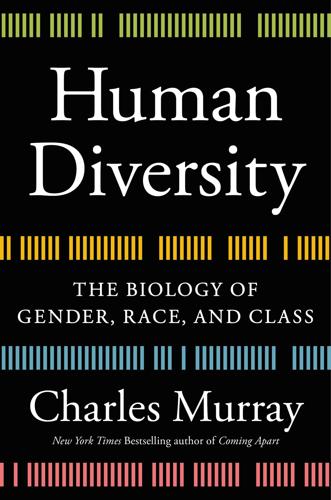
Human Diversity: The Biology of Gender, Race, and Class
by
Charles Murray
Published 28 Jan 2020
The mathematical procedures will yield coefficients for each of them, indicating again how much of a change in income can be anticipated for a given change in any particular variable, with all the others held constant. Adapted from The Bell Curve: Intelligence and Class Structure in American Life by Richard J. Herrnstein and Charles Murray. Copyright © 1994 by Richard J. Herrnstein and Charles Murray. Reprinted with permission of The Free Press, a Division of Simon & Schuster Trade Publishing Group. I have made a few minor changes to the original text, eliminating some material specific to issues in The Bell Curve and rewording a few sentences to fit the context of Human Diversity. Appendix 2 Sexual Dimorphism in Humans Homo sapiens is a normally dimorphic species consisting overwhelmingly of heterosexual males and females with a small proportion of exceptions.
…
Contrary to rumor, the Skinner box was not used to experiment with operant conditioning on Skinner’s infant daughter, though Skinner did invent an “air crib” that was intended to reduce the tasks of caring for an infant. 12. On a personal note, my coauthor on The Bell Curve, Richard Herrnstein, was a behavioral psychologist who succeeded B. F. Skinner as the Edgar Pierce Professor of Psychology at Harvard. As you will find if you read The Bell Curve or Crime and Human Nature, coauthored with James Q. Wilson, Herrnstein was a behaviorist who did not go off the deep end. 13. Murray (1984). 14. Pinker (2002): viii. 15. Hamilton (1964); Trivers (1972). 16.
…
The list of eminent scholars who have shared that view began with Cyril Burt and Lewis Terman in the early part of the twentieth century and continued through the rest of the century and into the twenty-first century with figures such as Raymond Cattell, Nathan Brody, Hans Eysenck, John Loehlin, David Geary, Diane Halpern, Thomas Bouchard, David Lubinski, and Camilla Benbow. I should add that Richard Herrnstein and I took the same position in The Bell Curve. This does not mean that everyone accepts that the question has been settled. A lively and sometimes acrimonious debate has been ongoing in recent years that you may follow by checking the sources in the note.[61] It is still technically unsettled. My own sense—and it’s no more than that, from someone who is knowledgeable about IQ but not expert in the abstruse technical issues that are being disputed—is that the possibility of a trivial sex difference in g is still in play but the demonstration of a meaningful one is not.
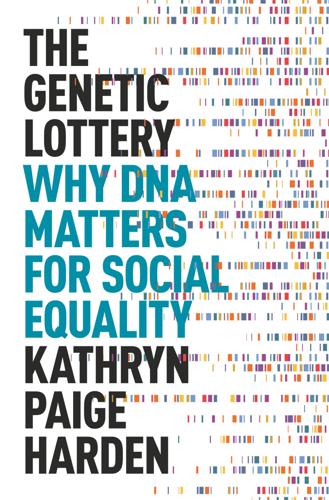
The Genetic Lottery: Why DNA Matters for Social Equality
by
Kathryn Paige Harden
Published 20 Sep 2021
And can this new synthesis broaden our understanding of what equality looks like and how to achieve it? To begin to convey how we can reimagine the relationship between genetics and egalitarianism, it will help here to describe where I diverge from a book in the Galtonian tradition—The Bell Curve, by Richard Herrnstein and Charles Murray.45 The title of The Bell Curve is a nod to Galton’s statistical preoccupation, the observation that plotting the population frequency of different values of human traits results in a bell-shaped “normal” distribution with particular mathematical properties. The subtitle (Intelligence and Class Structure in American Life) is a nod to Galton’s social preoccupation, the question of how class differences reflected genetic inheritance.
…
Hawes Spencer and Sheryl Gay Stolberg, “White Nationalists March on University of Virginia,” The New York Times, A12, August 11, 2017, https://www.nytimes.com/2017/08/11/us/white-nationalists-rally-charlottesville-virginia.html. 45. Richard J. Herrnstein and Charles Murray, The Bell Curve: Intelligence and Class Structure in American Life (New York: Free Press, 1994). 46. Richard J. Herrnstein, I.Q. in the Meritocracy (Boston: Little, Brown, 1973). 47. Elizabeth S. Anderson, “What Is the Point of Equality?,” Ethics 109, no. 2 (January 1999): 287–337, https://doi.org/10.1086/233897. 48. “Remarks by the President … on the Completion of the First Survey of the Entire Human Genome Project,” White House press release, June 26, 2000, https://clintonwhitehouse3.archives.gov/WH/New/html/genome-20000626.html. 49.
…
Robinson, “Ecological Correlations and the Behavior of Individuals,” American Sociological Review 15, no. 3 (June 1950): 351–57. 29. Arthur Jensen, “How Much Can We Boost IQ and Scholastic Achievement?,” Harvard Educational Review 39, no. 1 (Winter 1969): 1–123, https://doi.org/10.17763/haer.39.1.l3u15956627424k7. 30. . Richard J. Herrnstein and Charles Murray, The Bell Curve: Intelligence and Class Structure in American Life (New York: Free Press, 1994). 31. John Novembre and Nicholas H. Barton, “Tread Lightly Interpreting Polygenic Tests of Selection,” Genetics 208, no. 4 (April 1, 2018): 1351–55, https://doi.org/10.1534/genetics.118.300786. 32.
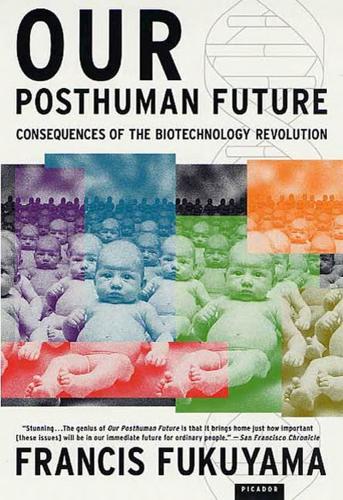
Our Posthuman Future: Consequences of the Biotechnology Revolution
by
Francis Fukuyama
Published 1 Jan 2002
Bohman, et al., “Inheritance of Alcohol Abuse: Crossfostering Analysis of Alcoholic Men,” Archives of General Psychiatry 38 (1981): 861–868. 15 Charles Murray and Richard J. Herrnstein, The Bell Curve: Intelligence and Class Structure in American Life (New York: Free Press, 1995). 16 Charles Murray, “IQ and Economic Success,” Public Interest 128 (1997): 21–35. 17 Arthur R. Jensen, “How Much Can We Boost IQ and Scholastic Achievement?,” Harvard Educational Review 39 (1969): 1–123. 18 See, passim, Claude S. Fischer et al., Inequality by Design: Cracking the Bell Curve Myth (Princeton, N.J.: Princeton University Press, 1996). 19 Robert G. Newby and Diane E. Newby, “The Bell Curve: Another Chapter in the Continuing Political Economy of Racism,” American Behavioral Scientist 39 (1995): 12–25. 20 Stephen J.
…
This kind of scientific knowledge, even in the absence of a technology that makes use of it, has important political implications. We have already seen this happen in the case of three higher-level behaviors with genetic roots—intelligence, crime, and sexuality—and there is much more to come.14 The Heritability of Intelligence In 1994, Charles Murray and Richard Herrnstein sparked a firestorm with the publication of their book, The Bell Curve.15 Crammed with statistics and based heavily on a large data set, the National Longitudinal Survey of Youth, the book made two extremely controversial assertions. The first was that intelligence was largely inherited. In the language of statistics, Murray and Herrnstein argued that 60 to 70 percent of the variance in intelligence was due to genes, the rest to environmental factors such as nutrition, education, family structure, and the like.
…
New York: Harcourt Brace Jovanovich, 1993. Munro, Neil. “Brain Politics.” National Journal 33 (2001): 335–339. Murray, Charles. “Deeper into the Brain.” National Review 52 (2000): 46–49. ———. “IQ and Economic Success.” Public Interest 128 (1997): 21–35. Murray, Charles, and Richard J. Herrnstein. The Bell Curve: Intelligence and Class Structure in American Life. New York: Free Press, 1995. Muthulakshmi, R. Female Infanticide: Its Causes and Solutions. New Delhi: Discovery Publishing House, 1997. National Bioethics Advisory Commission. Cloning Human Beings. Rockville, Md.: National Bioethics Advisory Commission, 1997. ———.

Stories Are Weapons: Psychological Warfare and the American Mind
by
Annalee Newitz
Published 3 Jun 2024
This weaponized rhetorical strategy undermined Black people’s status in the eyes of their fellow Americans, while taking aim at Black people’s views of their own mental capabilities. As we’ll see, the ’90s version of this culture war was also fueled by a science fiction story about how stupidity would destroy America. Eugenics rebooted In 1994, Charles Murray was starting a promotional tour for what became one of the most widely discussed books of the 1990s: The Bell Curve: Intelligence and Class Structure in American Life. His co-author, Richard Herrnstein, had recently died, and that meant Murray had to promote the book on his own. The hype around its publication was unusually intense, especially for an 845-page social science book packed with charts and graphs.
…
Inside the UC Struggle for Diversity,” Los Angeles Times, October 31, 2022. 14. Siegel, Eric, “The Real Problem with Charles Murray and ‘The Bell Curve,’ ” Voices (blog), Scientific American Blog Network, April 12, 2017. 15. See, for example, the Bell Curve debunker video from filmmaker Shaun, which has nearly three million views: https://www.youtube.com/watch?v=UBc7qBS1Ujo. 16. Herrnstein, Richard J., and Charles Murray, The Bell Curve (Free Press, 1994), 100. 17. This is quoted in DeParle, Jason, “Daring Research or ‘Social Science Pornography’? Charles Murray,” New York Times Magazine, October 9, 1994. 18. Interestingly, Idiocracy is a riff on a satirical short story called “The Marching Morons,” published by Cyril M.
…
Poor people were breeding in enormous numbers, they wrote, thanks to unwed mothers. Soon, The Bell Curve warned, the nation would be dragged down by a “dysgenic trend” of increasingly unintelligent people. Though the book was roundly criticized by experts, receiving a sharp rejoinder from the American Psychological Association7 and countless debunkings from political scientists,8 it nevertheless resonated with Americans. The Bell Curve sold two hundred thousand copies in its first month of publication.9 Charles Murray made the rounds on national TV and radio programs to discuss his ideas. Debates over the book were so feverish that even President Bill Clinton weighed in to say that he disagreed with its premise about Black IQs,10 though he would eventually sign a welfare-reform bill that was influenced by Murray’s research.

Head, Hand, Heart: Why Intelligence Is Over-Rewarded, Manual Workers Matter, and Caregivers Deserve More Respect
by
David Goodhart
Published 7 Sep 2020
The top of today are breeding the top of tomorrow to a greater extent than at any time in the past. The élite is on the way to becoming hereditary; the principles of heredity and merit are coming together.”23 This is in fact what psychologist Richard Herrnstein and political scientist Charles Murray did argue about the American experience in their controversial book The Bell Curve: Intelligence and Class Structure in American Life (1994). They said that the correlation between intelligence and socioeconomic status has become stronger in America since the 1950s as access to higher education has become broader and more competitive and the economy has become more knowledge based, and that this was particularly the case at each end of the IQ distribution curve.
…
Goldthorpe, Social Mobility and Education in Britain: Research, Politics and Policy (Cambridge, UK: Cambridge University Press, 2018). 20 Alice Sullivan, “The Path from Social Origins to Top Jobs: Social Reproduction via Education,” British Journal of Sociology 69, no. 3 (2018), 782–84. 21 Jo Blanden, Paul Gregg, and Stephen Machin, Intergenerational Mobility in Europe and North America: A Report Supported by the Sutton Trust, Centre for Economic Performance, London School of Economics/Sutton Trust (2005). 22 Peter Saunders, Social Mobility Myths (London: Civitas, 2010), 69. 23 Michael Young, The Rise of the Meritocracy, 1870–2033 (London: Thames & Hudson, 1958). 24 Charles Murray, “The Bell Curve Explained: Part 1, the Emergence of a Cognitive Elite,”, American Enterprise Institute, May 12, 2017, https://www.aei.org/society-and-culture/the-bell-curve-explained-part-1-the-emergence-of-a-cognitive-elite/. 25 For summary, see Toby Young, “The Fall of the Meritocracy,” Quadrant Online, September 7, 2015, https://quadrant.org.au/magazine/2015/09/fall-meritocracy/. 26 “The Rise and Rise of the Cognitive Elite: Brains Bring Ever Larger Rewards,” Economist, January 22, 2011. 27 “Modern Women Marrying Men of the Same or Lower Social Class,” IPPR May 4, 2012, https://www.ippr.org/news-and-media/press-releases/modern-women-marrying-men-of-the-same-or-lower-social-class. 28 David Willets, The Pinch: How the Baby Boomers Took Their Children’s Future—and Why They Should Give it Back (London: Atlantic, 2011). 29 Charles Murray, Coming Apart: The State of White America, 1960–2010 (New York: Crown Forum, 2012), 59. 30 Richard Reeves, Dream Hoarders: How the American Upper Middle Class Is Leaving Everyone Else in the Dust, Why That Is a Problem, and What to Do About It (Washington, DC: Brookings Institution, 2017). 31 Daniel Markovits, The Meritocracy Trap: How America’s Foundational Myth Feeds Inequality, Dismantles the Middle Class, and Devours the Elite (London: Allen Lane, 2019). 32 James Bloodworth, The Myth of Meritocracy, 67. 33 Richard Breen, Social Mobility in Europe (Oxford, UK: Oxford University Press, 2004). 34 Andrew Hacker, “The White Plight,” The New York Review of Books, 10 May 2012. 35 David Robson, The Intelligence Trap. 36 Dalton Conley and Jason Fletcher, The Genome Factor: What the Social Genomics Revolution Reveals About Ourselves, Our History, and the Future (Princeton, NJ: Princeton University Press, 2017). 37 Kwame Anthony Appiah, “The Myth of Meritocracy: Who Really Gets What They Deserve?
…
Then in 1963 an article in Science reviewed twin and adoption studies and concluded that genetic influence was important in IQ scores, tentatively restoring some respectability to genetic research into behavior.16 But this new respect for genetics was reversed in 1969 when the intelligence researcher Arthur Jensen published a paper that was skeptical about the impact of early-years education—something that had widespread bipartisan support in the US to reduce race and class inequality—and he went further and suggested that IQ differences between races might come down to genetic factors. A few years later the late American psychologist Richard Herrnstein argued that IQ differences between classes might be genetic in origin too. These publications caused outrage and entrenched the hard environmentalist position for two decades or more. One beneficial side effect of the decades-long pariah status of behavioral genetic research is that it raised the quality threshold for research in the field.

When Work Disappears: The World of the New Urban Poor
by
William Julius Wilson
Published 1 Jan 1996
Since the publication of The Bell Curve in late 1994, a genetic argument has resurfaced in public discussions about the plight of inner-city residents. This controversial book by Richard Herrnstein and Charles Murray argues that regardless of social, economic, or ethnic background, low intelligence is the root cause of many of our social problems. Herrnstein and Murray attempt to demonstrate that “cognitive ability,” as measured by intelligence tests, powerfully predicts not only earnings but a range of other outcomes from parental competence to criminal behavior. The Bell Curve questions the extent to which the environment influences group social outcomes and whether intervention programs can compensate for the handicaps of genetic endowment.
…
Appendix C Tables on Urban Poverty and Family Life Study Research TABLE 1 MARRIED-COUPLE FAMILIES WITH CHILDREN UNDER 18 YEARS BY EDUCATIONAL ATTAINMENT OF HOUSEHOLDER FOR BLACK FAMILIES, 1990 % of All Families with Kids Level of Attainment Number of Families at Level of Attainment Not High School Graduate 410,185 37.9 High School Graduate (or GED) 589,183 45.8 Some College/Associate Degree 580,467 49.0 Bachelor’s Degree 188,126 65.1 Graduate/Professional Degree 97,610 69.3 All Levels 1,865,571 46.8 Source: Characteristics of the Black Population, 1990 Census of Population NOTES INTRODUCTION 1 quotations from Richard Herrnstein and Charles Murray: Herrnstein and Murray (1994), p. 403. 2 The children of the inner-city ghetto have to contend with public schools: Kenneth B. Clark was one of the first to draw attention to this problem. See Clark (1965). 3 It reflects the cumulative weight of poverty and racial experiences: Heckman (1995) and Patterson (1995). 4 Recent research reveals that additional years of schooling: Neal and Johnson (1995). 5 However, as the economist James Heckman points out: Heckman (1995). 6 the Moynihan report: For the full text of the Moynihan report and a discussion of the critical reaction, see Rainwater and Yancey (1967). 7 revisionist arguments by African-American scholars on the black experience: See, for example, Ladner (1973), Hill (1972), Hare (1969), Alkalimat (1969), and Staples (1970 and 1971). 8 Mitchell Duneier: Duneier (1992). 9 The Truly Disadvantaged: Wilson (1987). 10 The tendency of some liberals to deny the very existence of culturally destructive behavior: For two discussions regarding the importance of considering the influence of both culture and social structure on certain kinds of behavior, see Patterson (1995) and West (1993).
…
Education and Training Policy: A Re-evaluation of the Underlying Assumptions Behind the New Consensus.” In Labor Markets, Employment Policy, and Job Creation, edited by Lewis C. Solmon and Alec R. Levenson, pp. 83–121. Boulder Colo.: Westview Press. Henderson, Vivian. 1975. “Race, Economics, and Public Policy,” Crisis 83 (Fall): 50–55. Herrnstein, Richard J., and Charles Murray. 1994. The Bell Curve: Intelligence and Class in American Life. New York: Free Press. Hicks-Bartlett, Sharon. 1991. “A Suburb in Name Only: The Case of Meadow View.” Paper presented at the Chicago Urban Poverty and Family Life Conference, October 10–12, Chicago. Hill, Robert B. 1972. The Strength of Black Families.

The Aristocracy of Talent: How Meritocracy Made the Modern World
by
Adrian Wooldridge
Published 2 Jun 2021
Connelly et al., ‘Balancing Treatment and Control Groups in Quasi-Experiments: An Introduction to Propensity Scoring’, Personnel Psychology 66 (2) (2013), pp. 407–42 24 Thomas Jefferson, ‘Notes on Virginia’, in Adrienne Koch and William Peden (eds.), The Life and Selected Writings of Thomas Jefferson (New York, The Modern Library, 1944), esp. pp. 263, 265 25 Richard J. Herrnstein and Charles Murray, The Bell Curve: Intelligence and Class Structure in American Life (New York, The Free Press, 1994). See also Richard Herrnstein, ‘IQ’, Atlantic 228 (3) (September 1971); Richard Herrnstein, IQ in the Meritocracy (London, Allen Lane, 1973) 26 Adrian Wooldridge, ‘Bell Curve Liberals: How the Left Betrayed IQ’, New Republic, 27 February 1995 27 R. A. Fisher, ‘The Correlation between Relatives on the Supposition of Mendelian Inheritance’, Transactions of the Royal Society of Edinburgh 52 (1918), pp. 399–433 28 Robert Plomin, Blueprint: How DNA Makes Us Who We Are (London, Allen Lane, 2018).
…
Wouldn’t this testing regime mean a return of Mr Gradgrind weighing every ounce of child intelligence? Before making the case for more political meritocracy to go along with more educational meritocracy, I want to address these two questions. THE THIN END OF THE BELL CURVE In 1994, Richard Herrnstein and Charles Murray published a highly controversial book called The Bell Curve: Intelligence and Class Structure in American Life.25 The book did a disservice to the meritocratic idea in all sorts of ways, but two stand out: it argued that a truly meritocratic society would inevitably calcify into a caste society and it posited that the average IQ of black people is about ten to fifteen points lower than the average IQ of white people (which is in turn lower than the average IQ of Asian people).
…
F., Lectures on the Philosophy of History 142 Heine, Heinrich 96 Helvétius, Claude Adrien 120–21 Henderson, Arthur 340 Henderson, Bruce 254 Henry II, king of England 43, 102 Henry IV, emperor 43, 93 Henry VI, king of England, and Eton 103 Henry VII, king of England 40 Henry VIII, king of England 41, 54 Herder, Johann 84, 141 Herrnstein, Richard and Charles Murray, The Bell Curve 380–81 Herzl, Theodor, The Jewish State 96 Hess, Moses 96 hierarchy 25–6 in America 176 and classification of race 207 and deference 30, 31 and dislike of change 31 early modern challenges 29 of honour 27 of legal rights 26–7 in modern society 138 and notion of chain of being 28, 123 as ordained by God 26, 28 in Plato’s Republic 62–3 pre-modern 26–9, 30–32 of status 26 see also class; dynastic principle; inequality; social order Higgins, Matthew, Letter on Administrative Reform (1855) 151 Higham Ferrers, Henry Chichele School 103 Hightower, Jim 319 Hippocrates, on kings 35–6 Hitchens, Christopher 313 Hobbes, Thomas 114, 122, 145 Hoffman, Reid 308 Hogben, Lancelot, criticism of IQ testing 280 Hogg, Quintin 394 The Case for Conservatism (1947) 235–6 Hoggart, Richard, The Uses of Literacy 248 Hohenzollern dynasty, Prussia 126–7, 230 Holland, mass school system 112 Holland, William 188 Hollande, François 312 Holmes, Henry, Harvard Graduate School of Education 214–15 Holmes, Oliver Wendell 215, 283 The Autocrat of the Breakfast Table 195 Holocaust 86 Home, Alec Douglas-Home, Earl of 247 Hong Houxiu 84 Hong Kong 364 honours, for merit 109 Hopwood v State of Texas 303 Houghton Mifflin 214 housing reforms 389 Howe, Irving, World of Our Fathers 370 Hu Jintao 359, 360 Hudson, Liam, on IQ tests 227 Huffman, Felicity 315 Hugo, Victor, on Napoleon 142 human nature Enlightenment debate on 118–24 nature–nurture debate 120–21, 130–31 humanism, and aristocratic ideal 106–111 Humboldt, Wilhelm and Alexander 127, 140 Hume, David, on Charles V 45 Humphreys, John 333 Hungary, rise of nationalism 329 Hunt, Freeman 191 Hussein, Saddam 336 Huxley, Aldous 59 Brave New World 67, 70 Huxley family 152 Ibn Khaldun, on dynasties 36 ideas, new rich and 307–8 identity politics 347–8 immigration see migration Inaudi, Jacques 208 Independent Educational Consultants Association, US 314 India caste system 25 examinations 364 Hindu nationalism 393 Macaulay’s plans for education and civil service reforms 153–4 Parsis as businesspeople 97–8 individualism 11–12, 114 America and 188 Christianity and 101 and equality 117 and talent 141 ‘Industrial Heroes’ 163 Industrial Revolution 11 in America 192 and liberalism 145–51 and rise of talent 142–3 inequality and assortative mating 312 global levels 374–5 Labour Party and 174 natural 139 social 276 theory of 26–9 see also class; hierarchy influence-peddling 12 information, imperfect 55 information revolution 271–2 Ingraham, Laura, Shut Up and Sing 342 inheritance American antipathy to 177–8 Mendelian 219 Napoleon and 132 and talent 147, 211, 381 INSEAD business school 322 Institute of Community Studies 247, 296 institutions independence of 369–70 meritocratic 109, 385–7 rights and privileges 27–8 intellectual aristocracy Britain 151–62 and women 267–9 intelligence general ability (g) 205, 212, 217–18 heritability 381 measurement of 20, 205–16 and meritocracy 13 modern elite and 307–8 and social mobility 218 and virtue 185 see also ability; IQ; talent internet, and news 386 IQ 3, 4 as fixed quality 220–21 and group difference 381 IQ tests and testing 20, 21 commercial 214 criticisms of 21, 205–6, 227–8, 229, 280 development of 205–7 general (g) and specific (s) factors 212 Jews and 88 politics of 227–33 radicalism of 229 and social readjustment 220 standardized tests 377–8 support for 228–9, 239 Iraq War (2003), and revolt against elites 336–7 Israeli Defense Force 389–90 Italy city states 104–5 dynastic families 36 economy 368, 369 education 248 Jews in Lucca 93 rise of populism 329 Ivy League universities (US) 70, 194, 196–8 admission of women 274–5 affirmative action for children of rich 316, 376 anti-intellectual prejudices 232–3 competition for places 308 dynastic interests in 196–7, 224, 232, 241 exclusive clubs 194–5, 232 Jews at 86 League dating service 311 and meritocratic changes 241–2 wealthy students 8, 21, 224 see also Harvard; Princeton; Yale Jackson, Andrew 188–90 and natural abilities 190 and open competition 189–90 Jacobs, Joseph 87 Jagger, Mick 246 Jains, as wandering people 98 James, Eric 236 James, Graham, Brexit: The Uncivil War 339 James II, king of Great Britain 52 James VI and I, king of Scotland 42, 43, 266 James, William 195 Japan examinations 364, 365 modernization (from 1853) 85 social hierarchy 25 Yamato royal dynasty 36 Jaubert, Pierre, Éloge de la roture 119 Jay, Douglas, The Socialist Case 172 Jefferson, Thomas 19, 179 and education 181–2, 379 and ‘natural aristocracy’ 180–82, 250 Jenkins, Roy 288 Jerusalem, destruction of Second Temple (AD 70) 94 Jesuits and education 112–13 Ratio Studiorum 113 Jews 15, 86–98 in America 93, 202 in American universities 226, 233 The Chosen Few 94–5 commitment to family 91–2 in Communist Russia 86–7 emancipation of 95–6 in Europe 95 identity and ethnicity 87, 93 intellectual creativity 92, 96 and intellectual success 19, 86, 89–93 and liberalism 96 and meritocracy 87–8 in Middle East 95 mobility of 88 and money-lending 93 and national cultures 96 Orthodox 89 persecution of 92, 93, 95 religious orthodoxy 95–6 specialist skills 92, 94, 95, 96 see also anti-semitism; Judaism Jin Li, Cultural Foundations of Learning: East and West 366 Joan of England, marriage 44 Johnson, Boris 2, 3, 384 and Covid-19 crisis 345–6 as populist leader 334, 335, 339 Johnson, Charles 285 Johnson, Dr Samuel 12, 56 Johnson, Frank 333 Johnson, Lyndon 241, 290 Great Society programme 301, 387 Johnson, Paul 90 Jones, Garett 384 Joseph II, emperor 41, 127–8 journalists, all-graduate profession 333 Jowett, Benjamin 69, 158, 164 Juana the Mad, of Castile 46 Judaism 88–93 Hebrew Bible 89 intellectual demands of 88–90 Jewish law 89 and mass literacy 90, 94–5 rituals 89, 90, 93, 94–5 Torah 89, 90, 94 justice distributive 292 and equality of opportunity 290–92 Kamin, Leon 227 Kant, Immanuel 122, 140 Kaplan, Stanley 239 Keats, John 259 Keller, Suzanne 202, 395 Kelley, Florence 263 Kelly, T.
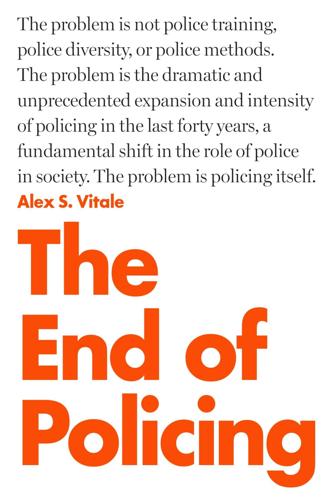
The End of Policing
by
Alex S. Vitale
Published 9 Oct 2017
Since the root of the problem was either an essentially moral and cultural failure or a lack of external controls to regulate inherently destructive human urges, the solution had to take the form of punitive social control mechanisms to restore order and neighborhood stability.15 Wilson’s views were informed by a borderline racism that emerged as a mix of biological and cultural explanations for the “inferiority” of poor blacks. Wilson co-authored the book Crime and Human Nature with Richard Herrnstein, which argued that there were important biological determinants of criminality.16 While race was not one of the core determinants, language about IQ and body type opened the door to a kind of sociobiology that led Herrnstein to coauthor the openly racist The Bell Curve with Charles Murray, who was also a close associate of Wilson.17 What was needed to stem this tide of declining civility, they argued, was to empower the police to not just fight crime but to become agents of moral authority on the streets.
…
Wilson and George Kelling, “Broken Windows: The police and neighborhood safety,” Atlantic, March 1982. 13Edward Banfield, The Unheavenly City: The Nature and the Future of Our Urban Crisis (Boston: Little Brown and Co, 1970). 14Frederick Siegel, The Future Once Happened Here: New York, D.C., L.A., and the Fate of America’s Big Cities (New York: Free Press, 1997). 15James Q. Wilson and Richard Herrnstein, Crime and Human Nature: The Definitive Study of the Causes of Crime (New York: Simon & Schuster, 1985). 16Ibid. 17Richard Herrnstein and Charles Murray, The Bell Curve: Intelligence and Class Structure in American Life (New York: Simon & Schuster, 2010). 18“Fair and Impartial Policing,” www.fairimpartialpolicing.com. 19Joaquin Sapien, “Racist Posts on NY Cop Blog Raise Ire at Time of Tension,” ProPublica, April 16, 2015, http://www.propublica.org/article/racist-posts-on-ny-cop-blog-raise-ire-at-time-of-tension. 20Melissa Crowe and Bianca Montes, “Victoria police officer investigated for tasing driver, 76,” Victoria Advocate, December 13, 2014. 21Peter Moskos, Cop in the Hood: My Year Policing Baltimore’s Eastern District (Princeton, NJ: Princeton University Press, 2008).

Coming Apart: The State of White America, 1960-2010
by
Charles Murray
Published 1 Jan 2012
In Reich’s formulation, the new class of symbolic analysts consisted of managers, engineers, attorneys, scientists, professors, executives, journalists, consultants, and other “mind workers” whose work consists of processing information. He observed that the new economy was ideally suited to their talents and rewarded them accordingly. In 1994, in The Bell Curve, the late Richard J. Herrnstein and I discussed the driving forces behind this phenomenon, the increasing segregation of the American university system by cognitive ability and the increasing value of brainpower in the marketplace.2 We labeled the new class “the cognitive elite.” In 2000, David Brooks brought an anthropologist’s eye and a wickedly funny pen to his description of the new upper class in Bobos in Paradise.
…
More and more of the best students want to go to the elite schools, and the elite schools, eager to maintain their status, search ever more assiduously to fill their incoming class with the best of the best. The competition on both sides to achieve the same end has proved to be irresistible. In the early 1990s, when Richard Herrnstein and I were writing The Bell Curve, he sat on the Harvard undergraduate admissions committee. One day when we were on the phone discussing the latest draft, he told me happily that Harvard had snagged more exceptionally qualified students for the next entering class than ever before. “But Dick,” I said, “we’re writing about all the problems that causes.”
…
I will give away a few important examples here. The prologue of Coming Apart uses the same literary device that opened Losing Ground, and a few of its sentences echo sentences in Losing Ground. The discussion of the foundations of the new upper class in chapter 2 draws heavily on the analysis I wrote with Richard J. Herrnstein in The Bell Curve. I came across Toynbee’s “Schism in the Soul” because of work I was doing for Human Accomplishment, and my discussion of it in chapter 17 draws directly from an article I wrote about it for the Wall Street Journal. The Europe Syndrome was first described in In Our Hands. The conclusion of chapter 17 draws from the Irving Kristol lecture “The Happiness of the People,” which I delivered while writing Coming Apart.
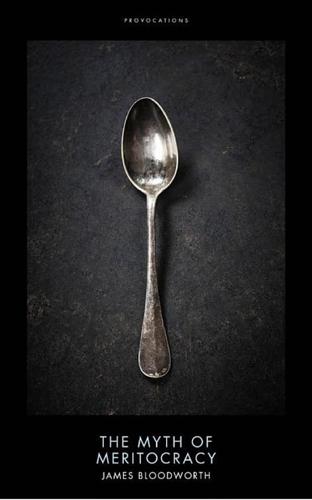
The Myth of Meritocracy: Why Working-Class Kids Still Get Working-Class Jobs (Provocations Series)
by
James Bloodworth
Published 18 May 2016
Experiments with identical and fraternal twins (the former share the same DNA and the latter don’t) consistently show that the IQs of identical twins are far more similar in their scores than fraternal twins.97 As Stuart Richie, the author of Intelligence: All That Matters, puts it, ‘The only possible reason for this is genetic: after all, the only thing that differs between the two types of twins that would make them more similar – so long as each pair is raised in the same family – is the percentage of genes they share.’98 Ritchie goes on to say that, on average, around 50 per cent of the reason people vary on intelligence scores is genetic. At the controversial end of debates like this is the 1994 American book The Bell Curve by the political scientists Richard Herrnstein and Charles Murray. The central thesis of the book is that intelligence is responsible for the trajectory of a person’s life, and that a deficient IQ is typically the best explanation for poverty. The book proved controversial when it came out, not only because of its reiteration of discredited eugenicist arguments from the nineteenth century – that the ‘cognitive elite’ was being out-bred by a multitude of halfwits – but also because it argued that different ethnic groups possessed varying levels of intelligence.
…
Blacks were poor not because of historic racism and class oppression, but because they were stupid. While the whiff of racism discredited those sections of the book that dwelt on the supposed innate difference in intelligence of different ethnic groups, in conservative circles The Bell Curve remains influential. And, from the political perspective of the largely white elite, one can see why: a thesis that purports to justify economic and racial privileges as neatly as The Bell Curve contains some obvious attractions for those who are doing well out of existing inequalities. Of course, few would argue that human beings are born equal in every respect. Most of us, however much we might practise at kicking a football around a field, will never obtain a fraction of the skill possessed by a player like Argentina’s Lionel Messi.
…
But now the meritocracy has made them high and lowly, and ordered their estate. 95 ‘Some 95% of 2009–2012 Income Gains Went to Wealthiest 1%’, Brenda Cronin, Wall Street Journal, 10 September 2013. 96 ‘Boris Johnson: some people are too stupid to get on in life’, Peter Dominiczak and James Kirkup, Daily Telegraph, 27 November 2013. 97 Intelligence: All That Matters, Stuart Richie, Hodder & Stoughton, 1st edition (2015). 98 Ibid. 99 Ibid. 100 ‘After the Bell Curve’, David L. Kirp, New York Times Magazine, 23 July 2006. 101 Ibid. Part VIII AN UNGENEROUS INTERPRETATION of left-wing history might argue that an ungrateful British working class, seduced by Thatcherism and New Labour, failed to live up to socialist expectations and so the left moved on like a bored lover to those deemed more deserving of its support.

The Gene: An Intimate History
by
Siddhartha Mukherjee
Published 16 May 2016
In 1994, the very year that Luigi Cavalli-Sforza published his comprehensive review of race and genetics, Americans were convulsing with anxiety around a very different kind of book about race and genes. Written by Richard Herrnstein, the behavioral psychologist, and Charles Murray, a political scientist, The Bell Curve was, as the Times described it, “a flame-throwing treatise on class, race and intelligence.” The Bell Curve offered a glimpse of how easily the language of genes and race can be distorted, and how potently those distortions can reverberate through a culture that is obsessed with heredity and race. As public flame-throwers go, Herrnstein was an old hand: his 1985 book, Crime and Human Nature, had ignited its own firestorm of controversy by claiming that ingrained characteristics, such as personality and temperament, were linked to criminal behavior.
…
Cavalli-Sforza, Paola Menozzi, and Alberto Piazza, The History and Geography of Human Genes (Princeton, NJ: Princeton University Press, 1994), 19. “So, we’s the same”: Stockett, Help. In 1994, the very year: Cavalli-Sforza, Menozzi, and Piazza, The History and Geography. a very different kind of book about: Richard Herrnstein and Charles Murray, The Bell Curve (New York: Simon & Schuster, 1994). “a flame-throwing treatise on class”: “The ‘Bell Curve’ agenda,” New York Times, October 24, 1994. his 1985 book, Crime and Human Nature: Wilson and Herrnstein. Crime and Human Nature. In 1904, Charles Spearman, a British statistician: Charles Spearman, “ ‘General Intelligence,’ objectively determined and measured,” American Journal of Psychology 15, no. 2 (1904): 201–92.
…
Berlin: Springer Science & Business Media, 2013. Henig, Robin Marantz. The Monk in the Garden: The Lost and Found Genius of Gregor Mendel, the Father of Genetics. Boston: Houghton Mifflin, 2000. Herring, Mark Youngblood. Genetic Engineering. Westport, CT: Greenwood, 2006. Herrnstein, Richard, and Charles Murray. The Bell Curve. New York: Simon & Schuster, 1994. Herschel, John F. W. A Preliminary Discourse on the Study of Natural Philosophy. A Facsim. of the 1830 Ed. New York: Johnson Reprint, 1966. Hodge, Russ. The Future of Genetics: Beyond the Human Genome Project. New York: Facts on File, 2010. Hughes, Sally Smith.

Hothouse Kids: The Dilemma of the Gifted Child
by
Alissa Quart
Published 16 Aug 2006
Gardner argued that while some children are what we have come to understand as conventionally gifted, linguistically or logically, there are those who are gifted in other domains—gifted physically or gifted socially, to name two. Ten years after “multiple intelligences,” there was a return to the most Jurassic notion of intelligence in the form of Richard J. Herrnstein and Charles Murray’s incendiary 1994 book The Bell Curve. The book quickly made its way out of the scientific community and into public debate and popular culture, as well as onto the best-seller lists. The Bell Curve purported to describe what Murray called a “cognitive elite”—and its opposite, a kind of cognitive underclass—who lay at either end of a bell curve of intelligence. Herrnstein and Murray analyzed more than a decade’s worth of findings of the National Longitudinal Survey of Labor Market Experience of Youth, which looked at 12,500 teens and young adults from 1979 onward.
…
Metcalf, sees NCLB as a victory for Bush’s “corporate allies” in the test and textbook industry. 120“memory, language comprehension”: Gould, Mismeasure of Man. 120as developed by Lewis Terman: Shurkin, Terman’s Kids. 121critiqued the IQ and SAT tests’ limited notion: Gardner, Multiple Intelligences. 121incendiary 1994 book: Richard J. Herrnstein and Charles Murray, The Bell Curve: Intelligence and Class Structure in American Life (New York: Free Press, 1996). 122“sanctioned by nature itself”: Russell Jacoby and Naomi Glauberman, The Bell Curve Debate (New York: Three Rivers Press, 1995). 123for individual testing at all: Giftedness matriarch Annemarie Roeper’s Qualitative Adaptation (QA) Scale, for instance, is entirely dependent on a one-on-one testing situation.
…
Kaiser Family Foundation, 2005. Herrnstein, Richard J., and Charles Murray. The Bell Curve: Intelligence and Class Structure in American Life. New York: Free Press, 1996. Heywood, Colin. A History of Childhood: Children and Childhood in the West from Medieval to Modern Times. New York: Polity Press, 2001. Hofferth, Sandra L., and John F. Sandberg. “Changes in American Children’s Times, 1981–1997.” Advances in Life Course Research 6 (2001). Huxley, Aldous. Brave New World. New York: Harper Perennial, 1998. Jacoby, Russell, and Naomi Glauberman. The Bell Curve Debate. New York: Nation Books, 1995. Jarrett, Olga.
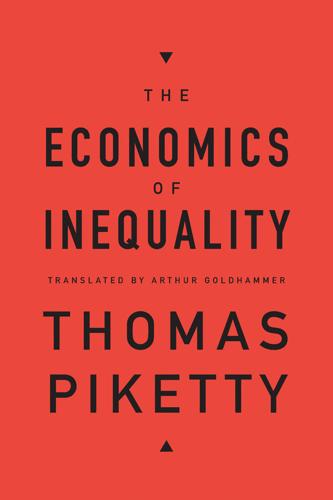
The Economics of Inequality
by
Thomas Piketty
and
Arthur Goldhammer
Published 7 Jan 2015
The Coleman Report and other work in the same vein concluded that simply spending more money on education in disadvantaged communities will not improve outcomes because it is within the family unit and the immediate social environment that inequality inevitably originates. Of course, everyone agrees that the factors influencing the transmission of inequality are far more “environmental” than genetic. Or almost everyone: the psychologist Richard Herrnstein and the sociologist Charles Murray made front-page news in 1994 when they published The Bell Curve, which many critics accused of defending the idea that intelligence is to a large extent genetically determined. In fact, Herrnstein and Murray also recognized that adoption studies showed that children from disadvantaged sociocultural backgrounds placed at birth in more highly educated families were just as successful as the biological offspring of those families (Herrnstein and Murray, 1994, pp. 410–413).
…
Kane. 1994. “Financing apprenticeship training: Evidence from Germany.” NBER Working Paper 4557. Henriet, D. and J.-C. Rochet. 1988. “Équilibres et optima sur les marchés d’assurance.” In Mélanges économiques en l’honneur d’Edmond Malinvaud. Paris: Economica. Herrnstein, R. and C. Murray. 1994. The Bell Curve: Intelligence and Class Structure in American Life. New York: The Free Press. IMF. 1996. World Economic Outlook. INSEE. 1994. “Un siècle de données macroéconomiques.” INSEE Résultats, nos. 303–304. ______ 1995. “Revenus et patrimoine des ménages, édition 1995.” INSEE Synthèses, no. 1. ______ 1996a.
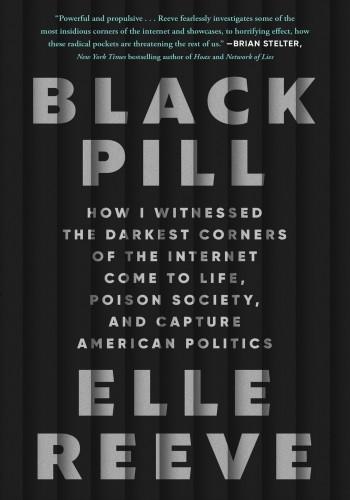
Black Pill: How I Witnessed the Darkest Corners of the Internet Come to Life, Poison Society, and Capture American Politics
by
Elle Reeve
Published 9 Jul 2024
Dylann Roof, 2016. What he found was the controversy: Richard J. Herrnstein and Charles Murray, The Bell Curve: Intelligence and Class Structure in American Life (Free Press, 1996). The authors claim: Evans, Gavin. “The Unwelcome Revival of ‘Race Science.’ ” The Guardian, March 2, 2018. https://www.theguardian.com/news/2018/mar/02/the-unwelcome-revival-of-race-science. What is telling: Yglesias, Matthew. “The Bell Curve Isn’t about Science, It’s about Policy. And It’s Wrong.” Vox, April 10, 2018. https://www.vox.com/2018/4/10/17182692/bell-curve-charles-murray-policy-wrong. At Towson University: Joe Heim, “This White Nationalist Who Shoved a Trump Protester May Be the Next David Duke,” Washington Post, April 12, 2016. https://www.washingtonpost.com/local/this-white-nationalist-who-shoved-a-trump-protester-may-be-the-next-david-duke/2016/04/12/7e71f750-f2cf-11e5-89c3-a647fcce95e0_story.html He led night patrols: Carrie Wells, “Towson White Student Union to Patrol Campus Looking for Crime,” Baltimore Sun, March 25, 2013. https://www.baltimoresun.com/maryland/baltimore-county/bs-xpm-2013-03-25-bs-md-towson-white-student-union-20130325-story.html Who’d advocated for “exterminationism toward the Jews”: Buchanan, Susy.
…
Parrott took it home. Now he could spend all the time he wanted online. What he found was the controversy over a new book called The Bell Curve. It was 1994, and the book had just been published. His impression of the conversation was something like This is too scandalous. But my god, it’s so well sourced. It can’t be true. And it can’t be not true. What are we gonna do? It’s gonna ruin everything. He thought, I have to get this book. The Bell Curve, by Charles Murray and Richard Herrnstein, argues that IQ is mostly hereditary, and immutable, and that many social ills are caused by low IQ. The authors claim Europeans and Asians evolved higher IQs than people from Latin America and Africa, and this has been the subject of controversy for thirty years now, because we don’t know that much about how the brain works, or the some one thousand genes that affect intelligence, or what we’re actually measuring with IQ tests.
…
While the book was being edited, Kistler invited Spencer to Seattle for the Foundation for the Future’s annual “Kistler Prize,” a $100,000 award for people who contributed “to the understanding of the connection between human heredity and human society.” In 2011, the honoree was Charles Murray, coauthor of The Bell Curve. He would be the last one. Spencer brought Kouprianova. She knew her husband wasn’t there to celebrate Murray. He’d talked about other old men, she said, and the possibility they would leave him large donations in their wills. Kistler was a prime example: “This guy is in his nineties, so God knows about his state of mind at this stage.”
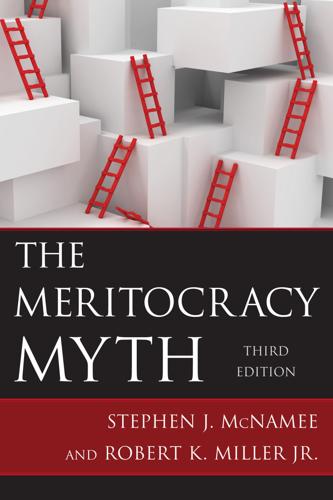
The Meritocracy Myth
by
Stephen J. McNamee
Published 17 Jul 2013
Those tested, of course, were mostly illiterate peasants who were at an extreme disadvantage taking IQ tests designed for English-speaking people. Subsequent test results of these immigrants’ children showed that they were not “idiots” at all: the means and distributions were “normal.” The intelligence controversy was reignited with the 1994 publication of Richard Herrnstein and Charles Murray’s The Bell Curve: Intelligence and Class Structure in American Life. Herrnstein and Murray assert that intelligence is largely genetically inherited and that it largely determines socioeconomic success. Herrnstein and Murray point out that the distribution of intelligence in the general population takes the form of a symmetrical bell curve, or what statisticians refer to as a normal distribution.
…
Along similar lines, Charles Murray, coauthor of The Bell Curve, has written a new book, Coming Apart: The State of White America, 1960–2010 (2012). Consciously staying away from the controversial race implications of The Bell Curve, Murray in this new book depicts a growing gap between a “new upper class” and a “new lower class” among white Americans. He suggests that the growing economic inequality between these groups can be accounted for by a combination of differences in intellectual capacity and “virtues.” The new upper class is part of the “cognitive elite” previously identified in The Bell Curve who are increasingly being sorted out by “the college sorting machine.”
…
“Race and Theory: Culture, Poverty, and Adaptation to Discrimination in Wilson and Ogbu.” Sociological Theory 17:171–200. Grammy, Abbas P. 2011. “The Underground Economy.” Economic Research Center. Premier Thoughts: The CSUB Business Blog. http://www.csub.edu/kej/documents/economic_rsch/2011-11-28.pdf (accessed January 14, 2013). Herrnstein, Richard, and Charles Murray. 1994. The Bell Curve: Intelligence and Class Structure in American Life. New York: Free Press. Hoberman, John. 1997. Darwin’s Athletes: How Sport Has Damaged and Preserved the Myth of Race. Boston: Houghton Mifflin. Huber, Richard. 1971. The American Idea of Success. New York: McGraw-Hill. Jencks, Christopher, Susan Bartlett, Mary Corcoran, James Crouse, David Eaglesfield, Gregory Jackson, Kent McClelland, et al. 1979.
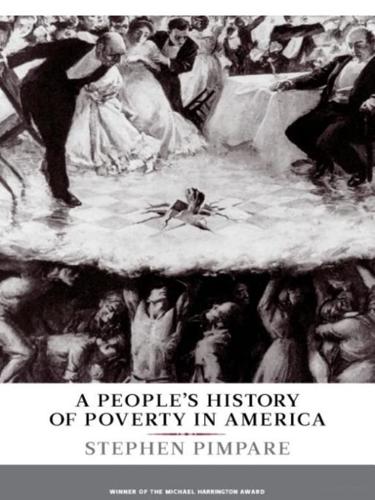
A People's History of Poverty in America
by
Stephen Pimpare
Published 11 Nov 2008
Seefeldt, and Rukmalie Jayakody, “Substance Abuse Among Welfare Recipients: Trends and Policy Responses,” Social Service Review 76, no. 2 (June 2002): 256–74. 56 Raphael, Saving Bernice, 32 57 Ibid., 66. 58 Jeff Kunerth in ibid., 36. 59 Raphael, Saving Bernice, 34. 60 Ibid., 105. 61 Stadum, Poor Women and Their Families, see esp. 116, table 14. 62 Raphael, Saving Bernice. 63 Margaret Somers and Fred Block, “From Poverty to Perversity: Ideas, Markets, and Institutions over 200 Years of Welfare Debate,” American Sociological Review 70, no. 2 (April 2005): 260–87. 64 Josephine Shaw Lowell, Public Relief and Private Charity (New York: Arno, 1971 [1884]). 65 See Stephen Pimpare, The New Victorians: Poverty, Politics, and Propaganda in Two Gilded Ages (New York: The New Press, 2004); Richard J. Herrnstein and Charles Murray, The Bell Curve: Intelligence and Class Structure in American Life (New York: Free Press, 1996). For critiques of Herrnstein and Murray, see Stephen Jay Gould, The Mismeasure of Man (New York: Norton, 1996); and Orley Ashenfelter and Cecilia Rouse, “Schooling, Intelligence, and Income in America: Cracks in the Bell Curve,” November 1998, www.irs.princeton.edu/pubs/pdfs/407.pdf. Jacqueline Jones called The Bell Curve “hate literature with footnotes.” Jones cited in Steve Macek, Urban Nightmares: The Media, the Right, and the Moral Panic over the City (Minneapolis: University of Minnesota Press, 2006). 66 Robert Rector, “Welfare: Broadening the Reform,” in Issues 2000: The Candidate’s Briefing Book, ed.
…
To prevent a constant and alarming increase of these two classes of persons, the only way is for the community to refuse to support any except those whom it can control—that is, except those who will submit themselves to discipline and coercion.64 It became common again with late-twentieth-century welfare opponents such as George Gilder and Newt Gingrich, among others, taking eugenicist and racist form with Charles Murray and Richard Herrnstein’s The Bell Curve.65 Here’s how Robert Rector expressed the need to control poor women: True charity begins by requiring responsible behavior from the beneficiary as a condition of receiving aid. True charity seeks to generate in the recipient the virtues, commitment, and self-discipline necessary for success in society, rather than passively subsidizing ever-escalating levels of social pathology.66 These too are old ideas.
…
Casey Foundation Arceneaux, Grace Palacio Arellano, Luis Arthur Capper–Carrollsburg project (Washington,D.C.) Ash, Stephen Associated Press asylums for the mentally ill poor Atkinson, Oriana attitudes toward poverty and welfare. See shame/stigma of receiving relief Backwords, Ace Baker, John Baldwin, James Ballard, Martha Banks, Ruby Baptist, Willie Barth, Eileen bedbugs begging The Bell Curve (Murray and Herrnstein) Bellevue Hospital Bellomont, Richard Coote Bellows, Barbara L. Bennett, Colleen Besharov, Douglas birth control Black Unity Party of Peekskill, New York blacks. See African Americans; slaves and slavery; women, African American Blake, Walter Bleak House (Dickens) blind persons Bly, Nellie Bolton, Charles C.
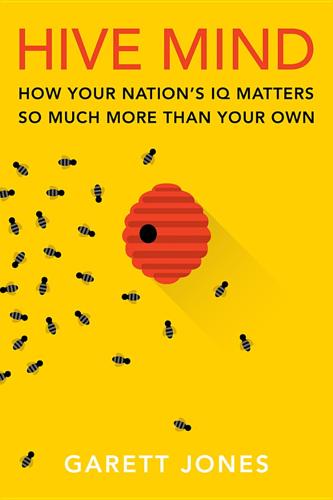
Hive Mind: How Your Nation’s IQ Matters So Much More Than Your Own
by
Garett Jones
Published 15 Feb 2015
James Flynn, a persistent critic of mainstream IQ research from the 1970s onward, took the trouble to document just what the title of his most famous paper said: “Massive IQ Gains in 14 Nations.”3 On most kinds of IQ tests—whether Raven’s or Wechsler, whether written or mostly spoken—there were big increases in average IQ scores in the long run in every country for which Flynn had data. Years later, while writing their influential book The Bell Curve, political scientist Charles Murray and psychologist Richard Herrnstein called this long-term rise in IQ scores The Flynn Effect, and the name has appropriately stuck. A few researchers prefer to call it the Lynn-Flynn effect or even the FLynn effect (sic) since, as we saw, Lynn made his own contribution on the topic. But Flynn’s systematic data collection and his decision to clearly point out that this rise in national IQs was strong evidence that the environment had a big impact on group IQ scores were the foundations for a revolution in IQ research.
…
See General Management Admissions Test Google prediction markets, 134–35 Gordon, Robert: on reputation, 115–16 Gray, Jeremy R., 66, 69–70 Greece: average cognitive ability score in, 169; average IQ score in, 47, 169; da Vinci Effect in, 47 greed, 86–87, 106 GRE scores, 100 grocery checkout clerks, 144–45 Guatemala: malnutrition and IQ in, 56 gun control and crime, 126–27 haggling skills, 3 Haltiwanger, John, 144 Hanson, Robin, 134 Hanushek, Eric, 5–7 Hawaii, 44 health and IQ scores, 1, 38, 41, 42–43, 52, 54–56, 60, 119, 167, 168; lead abatement, 49–50, 62–64. See also nutrition and IQ scores height: of identical twins, 22; relationship to gender, 23; relationship to IQ scores, 23–24, 25, 35 Heinlein, Robert, 91–92 Hendricks, Lutz, 47, 48, 174n17 Herrnstein, Richard: The Bell Curve, 51; on Flynn Effect, 51 Hobbes, Thomas, 106 Hochschild, Jennifer: on democratization, 136 Hoddinott, John, 174n12 home country bias, 79 homo economicus, 66, 67, 68 Hong Kong: average cognitive ability score in, 169; average IQ score in, 45, 169; da Vinci Effect in, 47; economic conditions in, 45; reading test scores in, 45; savings rate in, 72, 80 Hoxby, Caroline, 59 Huffman, David, 65–66 human capital, 56, 76, 118, 148, 162, 163 Hungary: average cognitive ability score in, 169; average IQ score in, 169 Hung, Juann H., on East Asian savings rates, 80 Hunt, Earl B., 25, 45–46; Human Intelligence, 173n1 Hunter, John, 28 hyperbolic discounting defined, 67 Ice Age hypothesis, 53 Iceland: average cognitive ability score in, 169; average IQ score in, 169 identical twins: body mass index (BMI) of, 22; height of, 22 imagination, 70–71 immigration, 152, 156–63, 174n17; relationship to politics, 161–63; relationship to wages, 47–48, 157–60; to United States, 47–48, 159–60, 174n17 Imperial, 81–82 impulsive behavior, 66–68 Independent Institute, 161 India: average IQ in, 72; savings rate in, 72 Indonesia: average cognitive ability score in, 169; average IQ score in, 169 indoor lighting, 62 infant birth weight and low IQ, 54–55 inflation temptation, 114 inspection time studies, 26–28 intelligence: as ability to recall difference types of information, 16; as ability to solve a variety of problems, 16; as ability to use deductive reasoning, 16; crystallized intelligence, 58, 62; fluid intelligence, 57, 58–59, 62; Machiavellian intelligence, 101–2, 118; relationship to brain size, 24–26, 27; relationship to education, 57–59; social intelligence, 32–34, 92, 148, 149, 152.
…
J., 34, 54 macroeconomics, 66, 71–72 Malaysia: average cognitive ability score in, 169; average IQ score in, 169 Malta: average cognitive ability score in, 169; average IQ score in, 169 market-oriented attitudes: and informed voters, 137; and IQ scores, 13, 83–84, 124–26, 127, 129 Marx, Karl: on alienation, 152 Mas, Alexandre, 145 maternal alcohol abuse and IQ, 54 maternal breast-feeding and IQ, 55 maternal exercise and IQ, 55 maternal nutrition and IQ, 54–55 math test scores, 1, 5–9, 10, 37, 40, 46, 117, 126–27, 167, 173n1; in East Asia, 35, 45 McCabe, Kevin, 92, 101 Meckling, William H., 83 Meisenberg, Gerhard, 170 memory, 70, 151, 152; and accountability of politicians, 129–30; relationship to IQ scores, 1, 13, 33, 44, 129, 147–48, 149 Mexico: average cognitive ability score in, 9, 169; average IQ score in, 47, 169; da Vinci Effect in, 47; GDP per person and cognitive ability in, 9 Milesi-Ferretti, Gian Maria, 79 Miller, Stephen, 125, 129 Montenegro: average IQ score in, 117 Moreale, Jennifer, 171n7 Moretti, Enrico, 144 Morocco: average cognitive ability score in, 169; average IQ score in, 47, 169; da Vinci Effect in, 47 moviemaking, 142 MRI and IQ, 24–26, 27 MSCEIT (Mayer-Salovey-Caruso Emotional Intelligence Test), 33–34 Mullainathan, Sendil: on poverty and IQ scores, 56–57; Scarcity, 56–57 multinational corporations, 75–76 multiple regression, 11, 79, 117, 124 multiplier effect, 7, 131, 148, 168 Murray, Charles: The Bell Curve, 51; on Flynn Effect, 51 national average IQ: cross-country comparisons, 38–44, 46, 48, 117–18, 169, 170; vs. individual IQ, 4–5, 6–7, 167; policies regarding, 5, 56, 58–59, 60, 62–64, 167; relationship to foreign investment, 79, 84; relationship to government corruption, 117, 162; relationship to government quality, 116–18, 129–31, 162; relationship to IQ of politicians, 118–19, 125; relationship to national prosperity and productivity, 1–2, 5, 11–12, 13–14, 34, 35–36, 39, 40, 43–44, 55, 56, 57, 105–6, 124–26, 154, 167–68, 171n7; relationship to savings, 72–73, 76, 84; scores in East Asia, 42, 43, 44–46, 50, 64, 80–81, 168 natural resources, 2, 9, 72–73, 111 negotiation: negotiation games, 100, 116; negotiation skills, 3–4, 106–10; win-win outcomes, 106–8, 109–10, 113, 151 Netherlands: average cognitive ability score in, 169; average IQ score in, 72, 169; famine during WWII, 54–55; lotteries in, 74; savings rate in, 72 New Zealand: Alliance party, 53; average cognitive ability score in, 169; average IQ score in, 169; IQ-income relationship in, 32 Nickerson, David, 132 Nisbett, Richard E., 173n1; Intelligence and How to Get It, 55 Noelle-Neumann, Elisabeth: on spiral of silence, 132 Norway: average cognitive ability score in, 9, 169; average IQ score in, 40, 169; GDP per person and cognitive ability in, 9 nutrition and IQ scores, 13, 35, 41, 42–43, 50, 52, 54–56, 59, 60–61, 119, 168.
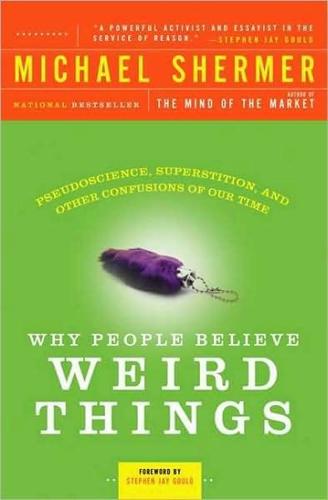
Why People Believe Weird Things: Pseudoscience, Superstition, and Other Confusions of Our Time
by
Michael Shermer
Published 1 Jan 1997
How, then, did Free Press sell over 500,000 copies of a $30 book (yes, that's $15 million) filled with graphs, charts, curves, and three hundred pages of appendices, notes, and references, all on the obscure topic of psychometrics? Because one of those curves illustrates a fifteen-point difference in IQ scores between white and black Americans. In America, nothing sells like racial controversy. The Bell Curve (1994), by Richard Herrnstein and Charles Murray, generated a furor among scientists, intellectuals, and activists throughout the country that continues to this day—the Bell Curve Wars, as one debunking book is titled. The arguments in The Bell Curve are not novel, in our time or any other. In fact, earlier that same year, the prestigious journal Intelligence published an article by another controversial scientist, Philippe Rushton, in which he claimed that not only do blacks and whites differ in intelligence but also in maturation rate (age of first intercourse, age of first pregnancy), personality (aggressiveness, cautiousness, impulsivity, sociability), social organization (marital stability, law abidingness, mental health), and reproductive effort (permissiveness, frequency of sexual intercourse, size of male genitalia).
…
In other words, I am not only interested in examining data, I am interested in exploring the motives and biases that go into data collection and interpretation. So, the question is, how can one explore this interesting and (I think) important aspect of science without being accused of the ad hominem attack? In the end, however, this chapter is about race, not IQ, nor Charles Murray and Richard Herrnstein's controversial book The Bell Curve. The subject is similar to what is known as the "demarcation problem" in discriminating between science and pseudoscience, physics and metaphysics: Where do we draw the line in the gray areas? Similarly, where does one race begin and another leave off? Any formal definition must be arbitrary in the sense that there is no "correct" answer.
…
Simpson applauding the closing statement of Marcia Clark, inasmuch as the author would probably include the Saturn-thesis, to which I subscribe, amongst the pseudosciences he revels in exposing. Yet praise it I must, for this is a damned entertaining and provocative book." Praise from Brutus indeed, yet Cochrane, along with other reviewers and numerous correspondents (some good friends), have taken me to task for my chapter on The Bell Curve (15). Some accused me of indulging in ad hominem assaults in my analysis of Wycliffe Draper, founder of the Pioneer Fund, an agency that, since 1937, has funded research into the heritability and racial differences in IQ. In this chapter I show the historical connection between racial theories of IQ (that blacks' lower IQs are largely inherited and thus immutable) and racial theories of history (the Holocaust is Jewish propaganda) through the Pioneer Fund that also has a direct connection to Willis Carto, one of the founders of the modern Holocaust denial movement.
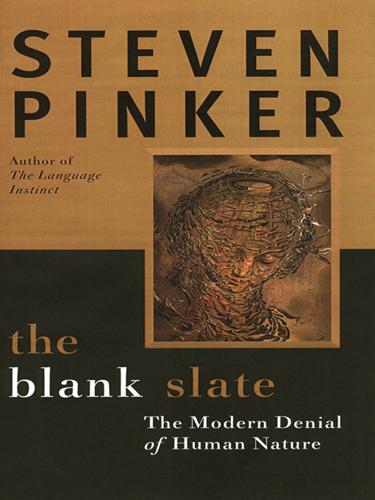
The Blank Slate: The Modern Denial of Human Nature
by
Steven Pinker
Published 1 Jan 2002
The modern understanding of how phenotypes are inherited through the replication of both genetic and environmental conditions suggests that…cultural traditions—behaviors copied by children from their parents—are likely to be crucial. If you think these are innocuous compromises that show that everyone has outgrown the nature-nurture debate, think again. The quotations come, in fact, from three of the most incendiary books of the last decade. The first is from The Bell Curve by Richard Herrnstein and Charles Murray, who argue that the difference in average IQ scores between American blacks and American whites has both genetic and environmental causes.1 The second is from The Nurture Assumption by Judith Rich Harris, who argues that children’s personalities are shaped by their genes as well as by their environments, so similarities between children and their parents may come from their shared genes and not just from the effects of parenting.2 The third is from A Natural History of Rape by Randy Thornhill and Craig Palmer, who argue that rape is not simply a product of culture but also has roots in the nature of men’s sexuality.3 For invoking nurture and nature, not nurture alone, these authors have been picketed, shouted down, subjected to searing invective in the press, even denounced in Congress.
…
Wooldridge argues that “the left can hardly afford to ignore I.Q. tests, which, for all their inadequacies, are still the best means yet devised for spotting talent wherever it occurs, in the inner cities as well as the plush housing estates, and ensuring that talent is matched to the appropriate educational streams and job opportunities.” For their part, Richard Herrnstein and Charles Murray (the authors of The Bell Curve) argued that the heritability of intelligence ought to galvanize the left into a greater commitment to Rawlsian social justice.53 If intelligence were entirely acquired, then policies for equal opportunity would suffice to guarantee an equitable distribution of wealth and power.
…
The critics announced they were part of a “radical science movement,” giving us a convenient label for the group.2 Weizenbaum was repelled by the attempt within artificial intelligence and cognitive science to unify mind and mechanism, but the other sciences of human nature evoked acrimony as well. In 1971 the psychologist Richard Herrnstein published an article called “IQ” in the Atlantic Monthly.3 Herrnstein’s argument, he was the first to point out, should have been banal. He wrote that as social status becomes less strongly determined by arbitrary legacies such as race, parentage, and inherited wealth, it will become more strongly determined by talent, especially (in a modern economy) intelligence.

Slouching Towards Utopia: An Economic History of the Twentieth Century
by
J. Bradford Delong
Published 6 Apr 2020
Sheera Frenkel and Cecilia Kang, An Ugly Truth: Inside Facebook’s Battle for Domination, New York: HarperCollins, 2021. In my view, those who think that authors like Richard Herrnstein and Charles Murray are just “asking questions” and “presenting data” (see Richard Herrnstein and Charles Murray, The Bell Curve: Intelligence and Class Structure in American Life, New York: Simon and Schuster, 1994), which then lead them to assert that there are important and fundamental genetically driven racial differences in intelligence, should reflect. They should reflect that Charles Murray burned a cross to try to terrify the two Black families living in the Midwestern suburb where he grew up—and then has the cheek to claim that “there wouldn’t have been a racist thought in our simple-minded minds.
…
They should reflect that Charles Murray burned a cross to try to terrify the two Black families living in the Midwestern suburb where he grew up—and then has the cheek to claim that “there wouldn’t have been a racist thought in our simple-minded minds. That’s how unaware we were.” See Jason DeParle, “Daring Research or ‘Social Science Pornography’? Charles Murray,” New York Times, October 9, 1994, https://timesmachine.nytimes.com/timesmachine/1994/10/09/397547.html. They should reflect on the sources of their own gullibility, and on the sources of their need to believe that Blacks are relatively poor in America today not because of past and present discrimination but because of unchangeable elements of nature. 9. Abraham Lincoln and Stephen Douglas, “First Debate: Ottawa, Illinois,” August 21, 1858, National Park Service, www.nps.gov/liho/learn/historyculture/debate1.htm. 10.
…
Tim Naftali, “Ronald Reagan’s Long-Hidden Racist Conversation with Richard Nixon,” Atlantic, July 30, 2019, www.theatlantic.com/ideas/archive/2019/07/ronald-reagans-racist-conversation-richard-nixon/595102; George Stigler, “The Problem of the Negro,” New Guard 5 (December 1965): 11–12. 15. Dan Ziblatt, Conservative Parties and the Birth of Democracy, Cambridge: Cambridge University Press, 2017. 16. Edmund S. Morgan, American Slavery, American Freedom: The Ordeal of Colonial Virginia, New York: W. W. Norton, 1975. 17. Charles Murray, Losing Ground: American Social Policy, 1950–1980, New York: Basic Books, 1984. 18. George Gilder, Wealth and Poverty, New York: ICS Press, 1981. 19. Daniel Patrick Moynihan, The Negro Family: The Case for National Action, Office of Policy Planning and Research, US Department of Labor, March 1965, full text at US Department of Labor, www.dol.gov/general/aboutdol/history/webid-moynihan. 20.

The Color of Money: Black Banks and the Racial Wealth Gap
by
Mehrsa Baradaran
Published 14 Sep 2017
For example, lower wealth is not caused by blacks refusing to work or get an education, as some have claimed.29 In fact, it is more likely that a family’s wealth determines a family member’s ability to get an education or a high-paying job.30 Those without wealth often live in resource-poor communities with subpar schools and restricted social networks.31 More directly, a family’s assets strongly predict whether and where a child can secure higher edu-cation.32 Crime also grows where opportunities are few, and crime in turn tends to diminish opportunity. It is therefore unlikely that the education gap between blacks and whites was caused by inherent biological differences between the races, as Charles Murray and Richard Herrnstein explained in their much-discussed 1994 book, The Bell Curve. It is also unlikely that black poverty is caused by a lack of “family values” or of broken families.33 It is true that single-parent homes perpetuate the cycle of poverty and that poverty, in turn, creates more single-parent homes. But which came first, the “lack of fathers” or the lack of jobs for them?
…
Another link was John Olin, who began to funnel money toward libertarian organizations, including his own Olin Foundation and the Federalist Society, after witnessing the 1969 takeover of the Cornell campus by a black power group during alumni weekend. Olin also funded Charles Murray’s research, which produced several tracts on racial inferiority, including The Bell Curve. Jane Mayer, Dark Money: The Hidden History of the Billionaires Behind the Radical Right (New York: Penguin, 2016), 94-111, 167-196. 206. “Lee Atwater’s Infamous 1981 Interview on the Southern Strategy," Video, Nation, https://www.youtube.com/watch?
…
“To this day, I cannot differentiate between economic problems and civil rights problems—they are irrevocably saddled with each other, more so in this country than anywhere else on planet earth.” He believed that social and political rights would be achieved through business success, explaining, “black-controlled businesses could bring more and more blacks into mainstream America." Travis observed the rise and fall of Jesse Binga, Anthony Overton, and cosmetics magnate Charles Murray, and considered these men personal heroes. “My attitude toward material success would always be bound up with my feelings about the situation of blacks in America."66 Though Travis’s outlook on business success was the modern embodiment of Booker T. Washington’s vision, his source of inspiration was Marcus Garvey.

The Coddling of the American Mind: How Good Intentions and Bad Ideas Are Setting Up a Generation for Failure
by
Greg Lukianoff
and
Jonathan Haidt
Published 14 Jun 2018
The book is about one of the most important and widely discussed topics of 2017: the social and economic dysfunction of the white working class, which (according to many commentators) made voters in that group respond more enthusiastically to the anti-immigrant and protectionist messages of Donald Trump.45 But in a previous book, published in 1994 (The Bell Curve), Murray and his coauthor, Richard Herrnstein, proposed that differences in average IQ scores found across racial groups may not be caused entirely by environmental factors; genetic differences may play a role, too.46 Some Middlebury students and professors maintained that anyone who makes such a claim is a white supremacist, and they came together to demand that Murray’s talk about his later book be canceled.47 When the disinvitation effort failed, a large number of students attended Murray’s talk just to shut it down by chanting in unison and shouting over his attempts to speak.
…
See, for example, the extraordinary success of J. D. Vance’s 2016 book Hillbilly Elegy and Arlie Russell Hochschild’s 2016 book Strangers in Their Own Land, which covered some similar ground. 46. Goodnow, N., & Pethokoukis, J. (2014, October 16). “The Bell Curve” 20 years later: A Q&A with Charles Murray. American Enterprise Institute. Retrieved from http://www.aei.org/publication/bell-curve-20-years-later-qa-charles-murray 47. Stanger, A. (2017, March 13). Understanding the angry mob at Middlebury that gave me a concussion. The New York Times. Retrieved from https://www.nytimes.com/2017/03/13/opinion/understanding-the-angry-mob-that-gave-me-a-concussion.html 48.
…
The Columbia University linguist John McWhorter describes how the term “white supremacist” is now used in an “utterly athletic, recreational” way, as a “battering ram” to attack anyone who departs from the party line.41 McWhorter himself (who is African American) has been called a white supremacist for questioning received wisdom on matters related to race.42 But if some students now think it’s OK to punch a fascist or white supremacist,43 and if anyone who disagrees with them can be labeled a fascist or white supremacist, well, you can see how this rhetorical move might make people hesitant to voice dissenting views on campus.44 Violence and Intimidation After Berkeley It’s hard to know whether the events at Berkeley played a causal role in later instances of violence on campus, but the spring semester of 2017 saw an increase in politically motivated violence, vandalism, and intimidation, all of which was justified by moral arguments about violence and safety, with the goal of shutting down speakers on campus. One of the most widely covered events occurred on March 2 in Vermont, at Middlebury College. Charles Murray, a libertarian scholar affiliated with the conservative think tank the American Enterprise Institute, was invited by a student group to speak about his 2012 book, Coming Apart. The college’s Political Science Department cosponsored the talk. The book is about one of the most important and widely discussed topics of 2017: the social and economic dysfunction of the white working class, which (according to many commentators) made voters in that group respond more enthusiastically to the anti-immigrant and protectionist messages of Donald Trump.45 But in a previous book, published in 1994 (The Bell Curve), Murray and his coauthor, Richard Herrnstein, proposed that differences in average IQ scores found across racial groups may not be caused entirely by environmental factors; genetic differences may play a role, too.46 Some Middlebury students and professors maintained that anyone who makes such a claim is a white supremacist, and they came together to demand that Murray’s talk about his later book be canceled.47 When the disinvitation effort failed, a large number of students attended Murray’s talk just to shut it down by chanting in unison and shouting over his attempts to speak.

The Global Auction: The Broken Promises of Education, Jobs, and Incomes
by
Phillip Brown
,
Hugh Lauder
and
David Ashton
Published 3 Nov 2010
As individuals, we are born with the capacity for intelligence—an ability to acquire and interpret information, to solve problems, to think critically and systematically about the social and natural world, to communicate ideas to others, and to apply new skills and techniques. Developments in the social world stimulate the mind’s potential for new forms of feeling, reasoning, and understanding. 28. Richard Herrnstein and Charles Murray, The Bell Curve (New York: Free Press, 1994). 29. Phillip Brown and Hugh Lauder, Capitalism and Social Progress (New York: Palgrave, 2001). 30. Yet in the nineteenth century, the emerging concepts of culture and capital were Siamese twins. Culture was capital in its public form (libraries, museums, civic buildings, public universities, etc.), and capital was culture privatized through private property.
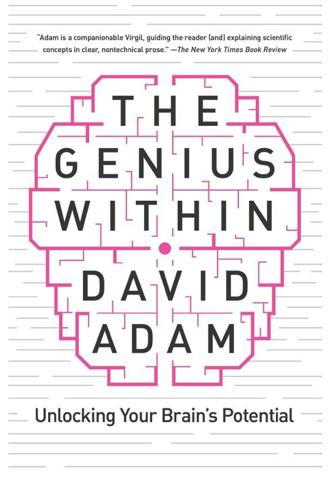
The Genius Within: Unlocking Your Brain's Potential
by
David Adam
Published 6 Feb 2018
So most neutral and objective researchers tend to sit on the fence. And commentators like Watson who leap off the fence and land firmly on one side show they aren’t neutral and objective. The controversy rumbles along and still flares from time to time, most prominently in a 1994 book called The Bell Curve, in which psychologist Richard Herrnstein and political scientist Charles Murray discussed racial differences in IQ scores and genetics, which was interpreted as arguing that little could be done to help those with the wrong genes to succeed. It’s not just mental differences between racial groups that are claimed. A small core of intelligence researchers dedicate their careers to trying to find differences in the average IQ between all sorts of people – from men and women and northern and southern Italians, to the Irish and everybody else.

Make Your Own Job: How the Entrepreneurial Work Ethic Exhausted America
by
Erik Baker
Published 13 Jan 2025
The third option was to grasp the right-wing horn of de Soto’s trilemma and conclude that it was true, after all, that the underclass just wasn’t cut out for entrepreneurship, for reasons that whether by nature or nurture were basically “racial” in character. The latter conclusion did, indeed, receive a major swell of support among the American elite in the 1990s, even in putatively liberal forums that once would have regarded such intimations as beyond the pale. The key text was The Bell Curve, Richard Herrnstein and Charles Murray’s 1994 brief for the idea that innate, immutable, and hereditable differences in intelligence explained the lion’s share of inequality in American society, including a significant proportion of racial inequality. Herrnstein and Murray argued that the strength of this effect had increased over time for reasons that the vast majority of contemporary management theorists would have affirmed: knowledge workers had displaced the manual workers of the past, and these workers’ new ideas were now ultimately the source of value in the late-twentieth-century economy.
…
On mass incarceration and surplus population, see Ruth Wilson Gilmore, Golden Gulag: Prisons, Surplus, Crisis, and Opposition in Globalizing California (Berkeley: University of California Press, 2007). 66Richard J. Herrnstein and Charles Murray, The Bell Curve: Intelligence and Class Structure in American Life (New York: Free Press, 1994), 98. 67Quoted in Quinn Slobodian, “The Unequal Mind: How Charles Murray and Neoliberal Think Tanks Revived IQ,” Capitalism: A Journal of History and Economics 4, no. 1 (2023): 73–108, at 88. Lynn’s paper on achievement motivation is Richard Lynn, “An Achievement Motivation Questionnaire,” British Journal of Psychology 60, no. 4 (1969): 529–534. 68Herrnstein and Murray, Bell Curve, 547, 526. 69Herrnstein and Murray, Bell Curve, 532, 547. 10.
…
Despite the immense amount of effort and ingenuity they put into devising new schemes for promoting “underclass” entrepreneurship, they were ultimately responsible, at least in part, for whatever degree of rhetorical plausibility attached to Herrnstein and Murray’s repugnant conclusions. As the duo observed near the end of The Bell Curve, “It is not news that the world is unfair.”69 Chapter 10 The Eternal Return of Entrepreneurship The new economy did not last long. the vertiginous economic growth of the late 1990s collapsed abruptly in the new millennium, with the dot-com crash of March 2000 and the ensuing 2001 recession.
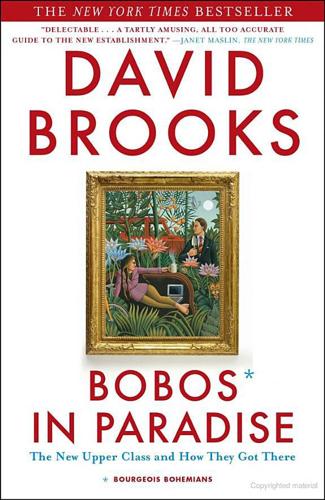
Bobos in Paradise: The New Upper Class and How They Got There
by
David Brooks
Published 1 Jan 2000
The Hinge Years But even as those Episcopal brides with early settler ancestors, cotillion memories, and upper-class husbands were staring out from the pages of the 1959 weddings page, their world had already been fatally undermined. The earth-shaking decisions had been made, as many crucial decisions are made, by a college admissions committee. Without much fuss or public discussion, the admissions officers wrecked the WASP establishment. The story at Harvard, told by Richard Herrnstein and Charles Murray in the relatively uncontroversial first chapter of The Bell Curve, epitomizes the tale. In 1952 most freshmen at Harvard were products of the same WASP bastions that popped up on the Times weddings page: the prep schools in New England (Andover and Exeter alone contributed 10 percent of the class), the East Side of Manhattan, the Main Line of Philadelphia, Shaker Heights in Ohio, the Gold Coast of Chicago, Grosse Pointe of Detroit, Nob Hill in San Francisco, and so on.

The Idea of Decline in Western History
by
Arthur Herman
Published 8 Jan 1997
Those same writers, in fact, had originally coined the term “Western” to describe a faltering European civilization that, they believed, was steadily fading away, like a brilliant sunset against the western sky. Then Charles Murray and Richard Herrnstein’s widely publicized The Bell Curve (1994) presented a picture of America’s future highly reminiscent of the writings of eugenicists and “race scientists” at the end of the nineteenth century—the fin de siècle in which the image of Western decline first took decisive shape. Charles Murray warned that America’s overly mobile society was about to split in two, based on IQ and cognitive ability. The United States was fast becoming “two nations,” a detached and culturally isolated elite holding the bulk of economic and social resources and an increasingly cretinized underclass, both black and white, incapable of taking care of itself.
…
“The great triumph of Humanity I had dreamed of took a different shape in my mind…. Instead, I saw a real aristocracy, armed with a perfected science and working to a logical conclusion the industrial system of today. Its triumph had not been simply a triumph over nature, but a triumph over nature and the fellow-man.” Like Charles Murray in The Bell Curve, Wells foresees a future divided between a permanent underclass and a “cognitive elite.” But in Wells’s version, technology and evolution have produced a double degenerative process. While the Morlocks are trapped forever in drudgery and ignorance, the Eloi elite have lost all self-motivation and creativity as a result of their reliance on technology, as well as experiencing a “general dwindling in size, strength, and intelligence.”* The Island of Doctor Moreau drives home the same point.
…
Like It Was: The Diaries of Malcolm Muggeridge . Edited by J. Bright-Holmes . William Morrow, New York, 1981. Muller, Jerry Z. Adam Smith in His Time and Ours . Basic Books, New York, 1992. -----. The Other God That Failed . Princeton University Press, Princeton, NJ, 1987. Murray, Charles , and Herrnstein, Richard . The Bell Curve . Free Press, New York, 1994. Nash, Gary . Race and Revolution . University of Wisconsin Press, Madison, 1990. -----. Red, White, and Black: The Peoples of Early North America . Prentice Hall, Englewoods Cliffs, NJ, 1992. Negri, Antimo . Nietzsche storia e cultura . Armando Armando, Rome, 1977.

Cities Under Siege: The New Military Urbanism
by
Stephen Graham
Published 30 Oct 2009
Clancey points out that the Republican party was itself crafted, as he puts it, ‘by the march across the Great Plains; an act of exodus or retreat from the urban Atlantic rim’, in Jordan Crandall, ed., Under Fire 2 The Organization And Representation of Violence, Rotterdam: Witte de Witte, 64. 34 Jeremy Adam Smith, ‘Tearing Down the Towers’. 35 David Harvey, Justice Nature and the Geography of Difference, Oxford: Blackwell, 1996, 404. 36 Guy Baeten, ‘The Uses and Deprivations of the Neoliberal City’, in BAVO, ed, Urban Politics Now: Re Imagining Democracy in the Neoliberal City, Rotterdam: NAi Publishers, 2008; Rowland Atkinson and Gesa Helms, eds., Securing an Urban Renaissance, Bristol: Policy Press, 2007. 37 David Simon, ‘The Escalating Breakdown of Urban Society across the US’, Guardian, 6 September 2008. 38 Quoted in Paul Street, ‘Republicans, Cities, and Cruise Ships’, Znet, February 2004. 39 Ibid. 40 Steve Macek, Urban Nightmares: The Media, The Right and The Moral Panic Over the City, Minneapolis, MN: University of Minnesota Press, 2006, 37–70. 41 It is striking how Christian Fundamentalists regularly espouse the pseudo-science of Social Darwinism whilst rejecting out of hand the overwhelming accumulation of hard-scientific evidence supporting Darwinian theories of Evolution. See George Monbiot, ‘How these Gibbering Numbskulls Came to Dominate Washington’, Guardian, 28 October 2008. 42 Richard Herrnstein and Charles Murray, The Bell Curve: Intelligence and Class Structures in American Life, New York: Free Press, 526. 43 In Autumn 2002, US suburbanites around Washington DC’s Beltway, still reeling under the impacts of the 9/11 attacks, were subjected to a campaign of murderous sniping. Ten were dead within three weeks.
…
This creates a vicious circle of more calls for surveillance, more imagery produced and consumed as entertainment, and more demonization of the city by sub- and ex-urban voyeurs. Right-wing renderings of the savage city as home to the losers in a fair and equal, Social Darwinian struggle41 have fed into the erection of the ‘homeland security state’ by the Bush administration. Murray and Herrnstein’s 1994 book The Bell Curve, for instance, has emerged as the bible of neoconservative urban social policy and criminology. In it, they caution that the polarization of America between ‘the cognitive elites’ and the IQ-deficient (and highly fertile) underclass would eventually require a ‘custodial state’, which, they imagine, would be ‘a high-tech and more lavish version of the Indian reservations for some substantial minority of the nation’s population, while the rest of America goes about its business.’42 Pejorative, racialized representations of urban areas abound in mainstream US media.
…
See urban warfare, training cities BBC, 224 n.136, 374 Beckert, Stephan, 141 n.185 Behnke, Andreas, 294 n.121 Beijing, Olympic games, 125 n.124 Beinin, Joel, 232 n.17, 233 n.23 Beiser, Vince, 190 n.23, 191 Bell, Jonathon, 311 n.43 Bellamy, Chris, 153 n.1 Bellflower, John W., 30 n.129, 300 The Bell Curve: Intelligence and Class Structures in American Life (Herrnstein & Murray), 45 Ben-Horin, Ro’i, 244 Bénit-Gbaffou, Claire, 107 n.67 Benjamin, Walter, 220 n.118 Berlusconi government, 113 Berman, Ilan, 233 Berman, Marshall, 10, 18 n.73, 226 Bernstein, Sam, 319 Bertozzi, Massimo, 333 n.132 Bevan, Robert, The Destruction of Memory,17 n.69 Bhabha, Homi, 136 n.172 Bhopal, 374 Bialasiewicz, Luiza, 29 n.124, 53 n.72, 234 n.30 Bible, 10 Bichlbaum, Andy, 374 Bichler, Simon, 87 n.110, 259 n.124, 307 n.25 Biersteker, Thomas, T11 e Rebordering of North America,80 n.73, 134 n.162 Bigelow, David, 181 n.101, 182 Bigo, Didier, 90–91, 132 bin Laden, Osama, 32, 41, 57, 59, 233, 262, 295 biofuels, xxiii, 308, 341–45, 353 biometrics, xi, xxi, 23, 27, 63, 75–76, 99,113, 117, 119, 126, 127–29, 131, 136–38, 140, 145, 164, 166, 198, 244, 255, 330 biopolitics, 307–9 BIRD, 257 Bishara, Azmi, 238 Bishop, Ryan, 13 n.53, 64, 65 n.15 Bisley, Sven, 75 n.55 Bismuth, Chantal, 274 n.37 Black, Jeremy, 175 Blackmore, Tim, xv n.4, 30 n.127, 31 n.131, 173 n.71, 179 Blackwater, xxvi, 73, 323–24 Blair, Tony, 82, 224 Blakeley, Ruth, 279, 280 n.56, 282 n.66 Blakely, Edward J., 24 n.104 Blanche, Ed, 248 n.76 Blandy, Sarah, 107, 109 n.71 Blech, Jörg, 170 n.54, 171 n.58, 173, 180 n.98 Bleiker, Roland, 71 n.38 Blum, H.
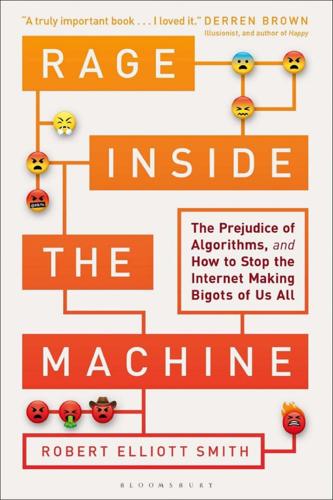
Rage Inside the Machine: The Prejudice of Algorithms, and How to Stop the Internet Making Bigots of Us All
by
Robert Elliott Smith
Published 26 Jun 2019
Through the years, the Fund has supported repatriating African-Americans to Africa, opposed the civil rights movement, opposed desegregation bussing, and supported anti-immigration efforts, as well as financing academic publishing and research in anthropology and sociology, most of which is related to the issue of race. Perhaps the best-known work based on Pioneer Fund supported research was the 1994 book The Bell Curve: Intelligence and Class Structure in American Life, a book that has received renewed endorsement with the rise of the alt-right movement, and in turn revived Spearman’s century-old ideas of the g factor. In the book, psychologist Richard J. Herrnstein and political scientist Charles Murray used meta-analysis (effectively analyses of many other analyses of populations of IQ tests) to assert that these tests categorically measure a real, underlying g factor.
…
Goddard’s work translated this quantity into atoms of a new representation of human intelligence, which we can visualize as rules: If 0 < × < 25 then idiot (with probability given by the Bell Curve) If 25 < × < 50 T then imbecile (with probability given by the Bell Curve) If 50 < × < 70 then moron (with probability given by the Bell Curve) If 70 < × < 130 then normal (with probability given by the Bell Curve) If 130 < × < infinity then gifted (with probability given by the Bell Curve) This is precisely how big data analytics solved problems of expert systems AI – the problem of how very hard it is to find the right atoms of a representation.
…
This compelled mathematicians to refine the estimation of the binomial distribution for large numbers, culminating in the provably-best-possible approximation, given by De Moivre in 1733: where the key term is the function N(z): This formula follows the smooth grey line given in Figure 4.1, sketching out a shape that, particularly to an eighteenth-century eye, looks like a bell, hence it’s more common name, the Bell Curve. The Bell Curve proved so mathematically convenient that its use spread far beyond factories and patient surveys, to the point where it began to be considered a virtual natural law, particularly once maths prodigy Carl Friederich Gauss determined that a distribution of scientific measurement errors was given by N(z), the Bell Curve. This is the reason for the distributions second common name: the Gaussian. Gauss’s proof also emerged from an astronomical context; in this case, the hunt for the dwarf planet Ceres, which had been spotted by Giuseppe Piazzi in 1801 before falling into the sun’s glare and out of sight.7 Piazzi, operating alone with only one set of equipment, recorded just twenty-four measurements of the planet’s position.
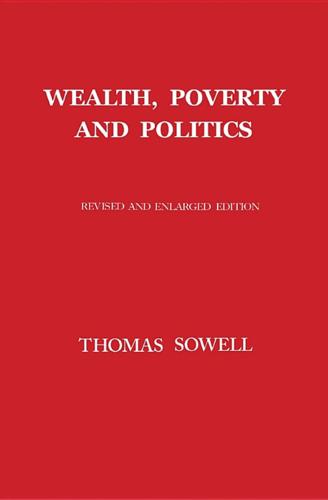
Wealth, Poverty and Politics
by
Thomas Sowell
Published 31 Aug 2015
b The lower mental test scores of Southern whites are consistent with the fact that many, if not most, white Southerners emigrated from culturally isolated regions of Britain before those regions were incorporated into the mainstream culture of the country and before the spectacular rise of Scots to the forefront of achievements, after having been what historian Henry Buckle called “poor and ignorant” people. See Grady McWhiney, Cracker Culture: Celtic Ways in the Old South (Tuscaloosa: University of Alabama Press, 1988), pp. 55–56. c “That a trait is genetically transmitted in individuals does not mean that group differences in that trait are also genetic in origin.” Richard J. Herrnstein and Charles Murray, The Bell Curve: Intelligence and Class Structure in American Life (New York: The Free Press, 1994), p. 298. This crucial statement, with all its words italicized in the original, has been almost universally ignored by critics. PART IV: POLITICAL FACTORS The worst political blunder in the history of civilization was probably the decision of the emperor of China in the year 1433 to stop exploring the oceans and to destroy the ships capable of exploration and the written records of their voyages. . .
…
Ibid., pp. 68–69. 58. Joyce Lee Malcolm, Guns and Violence: The English Experience (Cambridge, Massachusetts: Harvard University Press, 2002), p. 168. In the twelve armed robberies in 1954, eight involved weapons that were not real. 59. Ibid., p. 209. 60. Ibid., pp. 90–91, 164–167; James Q. Wilson and Richard J. Herrnstein, Crime and Human Nature (New York: Simon and Schuster, 1985), pp. 409–410. 61. Philip Johnston, “The Long Retreat of Order,” The Daily Telegraph (London), August 10, 2011, p. 19. 62. Joyce Lee Malcolm, “The Soft-on-Crime Roots of British Disorder,” Wall Street Journal, August 16, 2011, p.
…
A similar caveat appears in the 2008 study on page 105. 48. Isabel V. Sawhill, “Overview,” Julia B. Isaacs, Isabel V. Sawhill and Ron Haskins, Getting Ahead or Losing Ground, p. 6. Chapter 9: Mental Capabilities Epigraph: Charles Murray, Real Education: Four Simple Truths for Bringing America’s Schools Back to Reality (New York: Crown Publishing, 2008), p. 11. 1. “Great Expectations,” The Economist, April 4, 2015, p. 12; “Unequal Beginnings,” Ibid., pp. 57–58. 2. Charles Murray, Human Accomplishment: The Pursuit of Excellence in the Arts and Sciences, 800 B.C. to 1950 (New York: Harper Collins, 2003), pp. 355–361. 3. See, for example, Ibid., Chapter 13; David S.
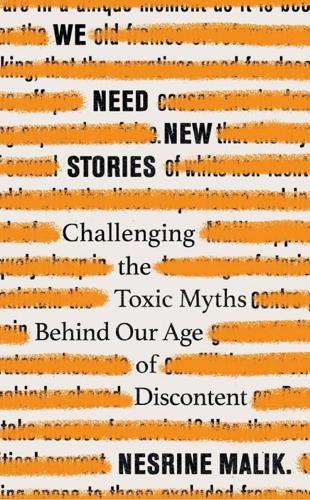
We Need New Stories: Challenging the Toxic Myths Behind Our Age of Discontent
by
Nesrine Malik
Published 4 Sep 2019
A model of this thought pattern, one which ends inevitably in the sanction and normalisation of extremely problematic views, is Sam Harris’s reanimation of IQ race wars that began with the publication of The Bell Curve in 1994. The book’s authors, political scientist Charles Murray and psychologist Richard J. Herrnstein, argue that intelligence is a mixture of social and genetic factors, making assertions about racial differences in IQ that critics say irresponsibly discount environmental factors. Harris later came to an epiphany, believing that his dismissal of Charles Murray’s views that genetic IQ difference between races was merely a fact was born out of groupthink, and decided to rectify his error by hosting Murray on his podcast.
…
New polling suggests Britain is “less PC” than Trump’s America’ (Prospect, February 16 2018), https://www.prospectmagazine.co.uk/magazine/free-speech-new-polling-suggests-britain-is-less-pc-than-trumps-america [accessed on 25 July 2019] 84 ‘I believe that everybody has a right to be in the United States’: Adam Serwer, ‘The Nationalist’s Delusion’ (Atlantic, 20 November 2017), https://www.theatlantic.com/politics/archive/2017/11/the-nationalists-delusion/546356/ [accessed on 25 July 2019] 86 ‘… the controversy over The Bell Curve’: Ezra Klein, ‘Sam Harris, Charles Murray, and the allure of race science’ (Vox, 27 March 2018), https://www.vox.com/policy-and-politics/2018/3/27/15695060/sam-harris-charles-murray-race-iq-forbidden-knowledge-podcast-bell-curve [accessed on 25 July 2019] 86 ‘… this isn’t “forbidden knowledge.”’: ibid. 87 ‘… feted in the New York Times’: Bari Weiss, ‘Meet the Renegades of the Intellectual Dark Web’ (New York Times, 8 May 2018), https://www.nytimes.com/2018/05/08/opinion/intellectual-dark-web.html [accessed on 25 July 2019] 89 ‘lit the flame’: Patrick Wintour, ‘Hillary Clinton: Europe must curb immigration to stop rightwing populists’ (Guardian, 22 November 2018), https://www.theguardian.com/world/2018/nov/22/hillary-clinton-europe-must-curb-immigration-stop-populists-trump-brexit [accessed on 25 July 2019] 89 ‘populist correctness’: Arwa Mahdawi, ‘Populist correctness: the new PC culture of Trump’s America and Brexit Britain’ (Guardian, 19 February 2017), https://www.theguardian.com/commentisfree/2017/feb/19/populist-correctness-new-pc-culture-trump-america-brexit-britain [accessed on 25 July 2019] 89 ‘Offends’: Kemp for Governor, campaign ad, https://www.youtube.com/watch?
…
In early 2019, Today, BBC radio’s most highbrow news programme hosted a debate where a student was berated for not being able to handle ‘unfashionable views’ because he refused to be taught by a professor who wrote ‘homosexuality is bestiality’ in an academic journal. The next step on from the merely ‘unfashionable’ is the downright martyred. As mentioned in Chapter 2, when Sam Harris hosted the author of The Bell Curve, Charles Murray, the episode was given the title ‘Forbidden Knowledge’. In 2018, in keeping with the fashion, a group of academics created a journal that allows for anonymous publication and called it The Journal of Controversial Ideas. On a large scale, these emissions can pollute the environment, poisoning the atmosphere for everyone, sometimes literally, where climate change deniers are invited to push ‘facts’ that are nothing but opinions, but are lent a veneer of legitimacy by being allowed on to a platform in the first place.
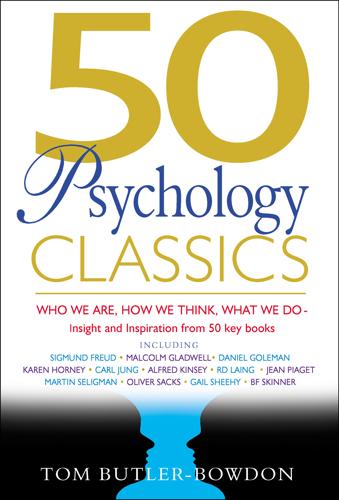
50 Psychology Classics
by
Tom Butler-Bowdon
Published 14 Oct 2007
Considered psychology to be the “science of the self.” 13 Antonio Damasio Descartes’ Error: Emotion, Reason, and the Human Brain (1994) Prominent brain researcher’s theory that debunks the separation of mind and body and shows how emotions form a vital part of rational judgment and decision making. 14 Hermann Ebbinghaus Memory: A Contribution to Experimental Psychology (1885) Account of first ever experimental lab work into learning and memory, setting a high standard for future research. 15 Leon Festinger Theory of Cognitive Dissonance (1957) Famous theory of how people try to maintain consistency in their beliefs, even when what they believe has been shown to be wrong. 16 Eric Fromm Escape from Freedom (1941) Influential study on people’s willingness to submit to fascist regimes, written before the full horror of Nazism became apparent. 17 William Glasser Reality Therapy: A New Approach to Psychiatry (1965) Alternative approach to mental illness, resting on the idea that mental health means an acceptance of responsibility for one’s life. 18 Dennis Greenberger & Christine Padesky Mind Over Mood: Change How You Feel by Changing the Way You Think (1995) Popular work of powerful cognitive therapy techniques, not just for depressives. 19 Robert D. Hare Without Conscience: The Disturbing World of the Psychopaths Among Us (1993) By the world’s foremost sociopathic researcher, showing how sociopaths are aware of the difference between right and wrong yet have no guilt or remorse. 20 Richard Herrnstein & Charles Murray The Bell Curve: Intelligence and Class Structure in American Life (1994) Caused storm of controversy in its contention that IQ differs according to race. Was wrapped within a broader theory that intelligence, rather than class background, has become the new predictor of economic success. 21 Eric Kandel In Search of Memory: The Emergence of a New Science of Mind (2006) Nobel Prize-winning neuroscientist’s compelling account of his 30 years’ work to discover how nerve cells in the brain store memories.

More Everything Forever: AI Overlords, Space Empires, and Silicon Valley's Crusade to Control the Fate of Humanity
by
Adam Becker
Published 14 Jun 2025
This started with the psychologist Cyril Burt, whose work was shown to be largely fraudulent after his death in 1971, and continued with Arthur Jensen, who spent much of his career claiming that IQ tests proved there was a persistent and inborn difference in intelligence between Black and white Americans. Jensen’s research, in turn, was cited extensively in the 1994 book The Bell Curve, by Richard Herrnstein and Charles Murray, also claiming that there was an innate difference in intelligence between different races. Reviewing The Bell Curve in the New Yorker, the paleontologist Stephen Jay Gould wrote that the book suffered from “pervasive disingenuousness. The authors omit facts, misuse statistical methods, and seem unwilling to admit the consequence of their own words.… The book’s inadequate and biased treatment of data display its primary purpose—advocacy.”131 Indeed, Burt, Jensen, Herrnstein, and Murray all had ready-made political and social policies as solutions to the nonexistent problems they were so concerned about, ranging from Burt’s eugenics proposals to Herrnstein and Murray’s arguments against affirmative action, welfare, and Head Start.

Noam Chomsky: A Life of Dissent
by
Robert F. Barsky
Published 2 Feb 1997
He published Studies on Semantics in Generative Grammar in 1972; he received honorary D.H.L.'s from Loyola University in Chicago and Swarthmore College in 1970, Bard College in 1971, Delhi University in 1972, and the University of Massachusetts in 1973. He also debated Michel Foucault on Dutch television in 1971, and criticized Richard Herrnstein's work (the early version of The Bell Curve) in the journal Cognition. On the political side, he was increasingly active, giving the Bertrand Russell Memorial Lectures in Cambridge in 1971, which were published the same year as Problems of Knowledge and Freedom. At War with Asia appeared in 1970, and For Reasons of State in 1973 (published in two volumes in Britain, For Reasons of State and The Backroom Boys).

The Rise and Fall of the Neoliberal Order: America and the World in the Free Market Era
by
Gary Gerstle
Published 14 Oct 2022
See also Peter Steinfels, The Neoconservatives: The Origins of a Movement: From Dissent to Political Power (New York: Simon and Schuster, 1979); Murray Friedman, The Neconservative Revolution: Jewish Intellectuals and the Shaping of Public Policy (Cambridge, MA: Harvard University Press, 2005); Christopher Demuth and William Kristol, eds., The Neoconservative Imagination: Essays in Honor of Irving Kristol (Washington, DC: American Enterprise Institute for Public Policy Research, 1995); and Alexander Jacobs, American Counter-Enlightenment: Social Critics and the Uses of Conservatism (Cambridge, MA: Harvard University Press, forthcoming). 53.Gertrude Himmelfarb, The De-Moralization of Society: From Victorian Virtues to Modern Values (New York: Knopf, 1995), 256. 54.Thomas Sowell, Ethnic America: A History (New York: Basic Books, 1981); Thomas Sowell, The Thomas Sowell Reader (New York: Basic Books, 2011); Gilder, Wealth and Poverty. 55.Charles Murray, Losing Ground: American Social Policy, 1950–1980 (New York: Basic Books, 1984); Richard J. Herrnstein and Charles Murray, The Bell Curve: Intelligence and Class Structure in American Life (New York: Free Press, 1994). See also Steve Fraser, ed., The Bell Curve Wars: Race, Intelligence, and the Future of America (New York: Basic Books, 1995); Quinn Slobodian and Stuart Schrader, “The White Man Unburdened: How Charles Murray Stopped Worrying and Learned to Love Racism,” The Baffler 40 (July 2018), https://thebaffler.com/salvos/the-white-man-unburdened-slobodian-schrader, accessed March 28, 2020.
…
Charles Murray, Losing Ground: American Social Policy, 1950–1980 (1984; New York: Basic Books, 2015); Steven Fraser, ed., The Bell Curve Wars: Race, Intelligence, and the Future of America (New York: Basic Books, 1995); Quinn Slobodian and Stuart Schrader, “The White Man Unburdened: How Charles Murray Stopped Worrying and Learned to Love Racism,” The Baffler 40 (July 2018), https://thebaffler.com/salvos/the-white-man-unburdened-slobodian-schrader, accessed September 8, 2021; and Quinn Slobodian, “Racial Science Against the Welfare State: Richard Lynn, Charles Murray, Thilo Sarrazin,” unpublished paper presented to Modern Europe Colloquium, Yale University, April 2018, in author’s possession. 10.The mournful tone coursing its way through Coming Apart for a lost world of white America anticipated that of Hillbilly Elegy: A Memoir of a Family and Culture in Crisis, the bestselling book published by J.
…
In 1994, Murray reinforced that skepticism and revealed his own racial biases when he, along with Richard J. Hernnstein, published The Bell Curve: Intelligence and Class Structure in American Life (New York: Free Press), which claimed to offer “scientific” proof of black inferiority. Throughout this period, Murray had maintained a largely unspoken belief in the strength of white culture and its ability to sustain the white poor. Thus, having to report in 2010 that the white poor were suffering from the same “failures” of culture as were the black poor was a bitter pill for Murray to swallow. Charles Murray, Losing Ground: American Social Policy, 1950–1980 (1984; New York: Basic Books, 2015); Steven Fraser, ed., The Bell Curve Wars: Race, Intelligence, and the Future of America (New York: Basic Books, 1995); Quinn Slobodian and Stuart Schrader, “The White Man Unburdened: How Charles Murray Stopped Worrying and Learned to Love Racism,” The Baffler 40 (July 2018), https://thebaffler.com/salvos/the-white-man-unburdened-slobodian-schrader, accessed September 8, 2021; and Quinn Slobodian, “Racial Science Against the Welfare State: Richard Lynn, Charles Murray, Thilo Sarrazin,” unpublished paper presented to Modern Europe Colloquium, Yale University, April 2018, in author’s possession. 10.The mournful tone coursing its way through Coming Apart for a lost world of white America anticipated that of Hillbilly Elegy: A Memoir of a Family and Culture in Crisis, the bestselling book published by J.

After the New Economy: The Binge . . . And the Hangover That Won't Go Away
by
Doug Henwood
Published 9 May 2005
(interview with Joseph Stiglitz), Left Business Observer 102 (September) <www.leftbusinessobserver.com/Stiglitz.html>. Herman, Edward S., and Ceceilia Zarate-Laun (1999). "Globalization & Instability:The Case of Colombia," Z Magazine, September, pp. 30-4. Herman, Tom (2000). "Tax Report," Wall Street Journal, JxAy 5,p.Al. Herrnstein, Richard J., and Charles Murray (1994). The Bell Curve: Intelligence and Class Structure in American Life (NewYork:The Free Press). Hirst, Paul, and GrahameThompson (1996). Globalization in Question (Cambridge, UK.: Polity Press). Hoogvelt, Ankie (1997). Globalization and the Postcolonial World: The New Political Economy of Development (Baltimore:Johns Hopkins University Press).
…
Those and the welfare state, which Gilder found irrationally generous, and fatal to the male authority necessary to keep social discipline, since it provided a check to women independent of husbands. Gilder never repudiated any of his early positions. There's "an actual difference between male and female brains," he revealed to a Seattle Weekly journaHst (White 1999). In a 1996 speech (quoted in Bronson 1996), using stats he must have gotten from The Bell Curve, he declared: Among people of influence in America, racism is dead. Racism has virtually nothing to do with the plight of black America. If you adjust for age and credentials, black women earn 106 percent of the wages of white women. If you adjust for age, IQ, and gender, black full-time workers earn 101 percent the wages of white workers.
…
And "sustained economic hardship leads to poorer physical, psychological, and cognitive functioning"—with consequences that last a decade or more (Lynch et al. 1997). Contrary to prevailing wisdom, it's very difficult to pull yourself up by your own bootstraps. No one can take the crackpot science of The Bell Curve (Herrnstein and Murray 1994) seriously when it attributes alleged racial differences in intelligence to genetic differences. But more reputable racialized analyses may also be seeing biological causes in place of social ones—even for purportedly measurable factors Uke birth weights (theorized to be lower in blacks than whites for genetic reasons) and hypertension (theorized to be more prevalent among blacks than whites, also for genetic reasons).
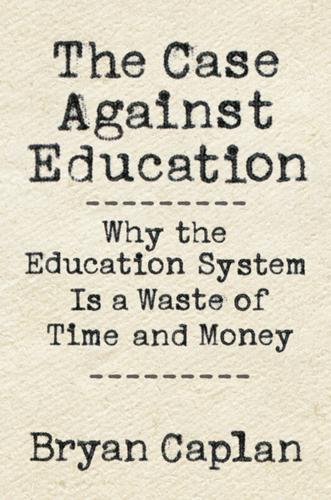
The Case Against Education: Why the Education System Is a Waste of Time and Money
by
Bryan Caplan
Published 16 Jan 2018
“The Price of Prisons: What Incarceration Costs Taxpayers.” Federal Sentencing Reporter 25 (1): 68–80. Hérault, Nicolas, and Rezida Zakirova. 2015. “Returns to Education: Accounting for Enrolment and Completion Effects.” Education Economics 23 (1): 84–100. Herrnstein, Richard, and Charles Murray. 1994. The Bell Curve: Intelligence and Class Structure in American Life. New York: Free Press. Hersch, Joni. 1991. “Equal Employment Opportunity Law and Firm Profitability.” Journal of Human Resources 26 (1): 139–53. Hjalmarsson, Randi. 2008. “Criminal Justice Involvement and High School Completion.” Journal of Urban Economics 63 (2): 613–30.
…
“Happiness in Everyday Life: The Uses of Experience Sampling.” Journal of Happiness Studies 4 (2): 185–99. Cubberley, Ellwood. 1911. “Does the Present Trend toward Vocational Education Threaten Liberal Culture?” School Review 19 (7): 455–65. Cullen, Francis, Paul Gendreau, G. Jarjoura, and John Wright. 1997. “Crime and the Bell Curve: Lessons from Intelligent Criminology.” Crime and Delinquency 43 (4): 387–411. Cutler, David, and Adriana Lleras-Muney. 2008. “Education and Health: Evaluating Theories and Evidence.” In Making Americans Healthier: Social and Economic Policy as Health Policy, edited by James House, Robert Schoeni, George Kaplan, and Harold Pollack, 29–60.
…
Riddell. 2002. “The Role of Credentials in the Canadian Labour Market.” Canadian Journal of Economics/Revue Canadienne D’économique 35 (4): 879–905. Fischer, Claude, Michael Hout, Martin Sanchez Jankowski, Samuel Lucas, Ann Swidler, Kim Voss, and Lawrence Bobo. 1996. Inequality by Design: Cracking the Bell Curve Myth. Princeton, NJ: Princeton University Press. Flores-Lagunes, Alfonso, and Audrey Light. 2010. “Interpreting Degree Effects in the Returns to Education.” Journal of Human Resources 45 (2): 439–67. Foer, Joshua. 2006. “Kaavya Syndrome: The Accused Harvard Plagiarist Doesn’t Have a Photographic Memory.
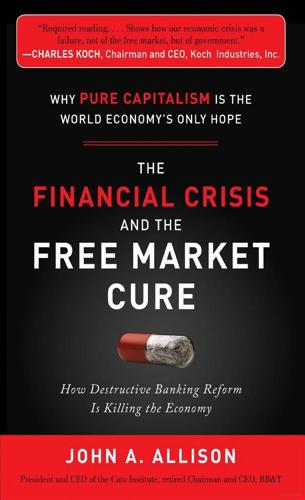
The Financial Crisis and the Free Market Cure: Why Pure Capitalism Is the World Economy's Only Hope
by
John A. Allison
Published 20 Sep 2012
See Mark Kramer, ed., The Black Book of Communism: Crimes, Terror, Repression (Cambridge, MA: Harvard University Press, 1999). 7. See Charles Murray, Real Education: Four Simple Truths for Bringing America’s Schools Back to Reality (New York: Random House, 2008). Chapter 24 1. “The BB&T Philosophy,” available from BB&t, 200 W. Second Street, Winston-Salem, NC 27101. 2. See Ayn Rand, “Reason,” in The Ayn Rand Lexicon: Objectivism from A to Z, ed. Harry Binswanger, introduction by Leonard Peikoff (New York: New American Library, 1986), http://aynrandlexicon.com/lexicon/reason.html. 3. See Richard J. Herrnstein and Charles Murray, The Bell Curve: Intelligence and Class Structure in American Life (New York: Simon & Schuster, 1994).
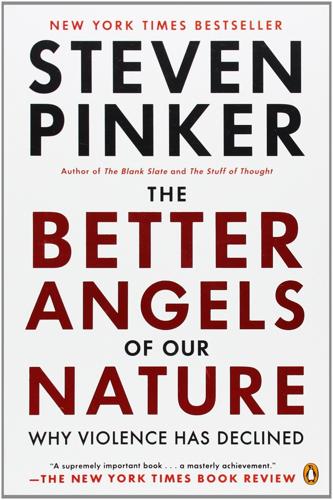
The Better Angels of Our Nature: Why Violence Has Declined
by
Steven Pinker
Published 24 Sep 2012
Since IQ tests have been administered in massive numbers all over the world for much of the 20th century, in some countries, down to the last schoolchild and draftee, one can plot a country’s change in measured intelligence over time. Flynn scoured the world for datasets in which the same IQ test was given over many years, or the scoring norms were available to keep the numbers commensurate. The result was the same in every sample: IQ scores increased over time.229 In 1994 Richard Herrnstein and the political scientist Charles Murray christened the phenomenon the Flynn Effect, and the name has stuck.230 The Flynn Effect has been found in thirty countries, including some in the developing world, and it has been going on ever since IQ tests were first given en masse around the time of World War I.231 An even older dataset from Britain suggests that the Flynn Effect may even have begun with the cohort of Britons who were born in 1877 (though of course they were tested as adults).232 The gains are not small: an average of three IQ points (a fifth of a standard deviation) per decade.
…
The people at the top of the scale were the mentally healthiest. Are people with low self-control more likely to perpetrate acts of violence? Circumstantial evidence suggests they are. Recall from chapter 3 the theory of crime (championed by Michael Gottfredson, Travis Hirschi, James Q. Wilson, and Richard Herrnstein) in which the people who commit crimes are those with the least self-control.97 They opt for small, quick, ill-gotten gains over the longer-term fruits of honest toil, among them the reward of not ending up in jail. Violent adolescents and young adults tend to have a history of misconduct at school, and they tend to get into other kinds of trouble that bespeak a lack of self-control, such as drunk driving, drug and alcohol abuse, accidents, poor school performance, risky sex, unemployment, and nonviolent crimes such as burglary, vandalism, and auto theft.
…
The ratio also underscores the difficulty of reconciling our desire for a coherent historical narrative with the statistics of deadly quarrels. In making sense of the 20th century, our desire for a good story arc is amplified by two statistical illusions. One is the tendency to see meaningful clusters in randomly spaced events. Another is the bell-curve mindset that makes extreme values seem astronomically unlikely, so when we come across an extreme event, we reason there must have been extraordinary design behind it. That mindset makes it difficult to accept that the worst two events in recent history, though unlikely, were not astronomically unlikely.

American Foundations: An Investigative History
by
Mark Dowie
Published 3 Oct 2009
Peter Schrag, "The Near Myth of Our Failing Schools," Atlantic Monthly (October 1997): 72-80. 15. William Bennett and Chester Finn, "Reforming Education in Four Easy Steps," Washington Times, December 12, 1997. 16. Quoted in ibid. 17. Bradley also funded Charles Murray's research comparing the intellectual abilities of white and nonwhite races. It led to publication of the controversial The Bell Curve: Intelligence and Class Structure in American Life, Richard J. Herrnstein and Charles Murray (New York: Free Press, 1994). 18. Chester Finn, "Giving It Away: An Open Letter to Bill Gates," Commentary January 1998, p. 21. 19. Quoted in Marina Dunjerski and Jennifer Moore.
…
Future journalists and editors for these and other conservative outlets are trained in the "Collegiate Network" of conservative student newspapers supported by the Olin, Scaife, Bradley, and Smith Richardson foundations. The latter also make generous six-figure grants to such perennial conservative commentators as Samuel Huntington, Irving Kristol, William Bennett, James Q. Wilson, Robert Bork, Charles Murray, Dinesh D'Souza, Allan Bloom, and Chester Finn. What mainly differentiates the "four sisters" and their brethren on the philanthropic Right from the philanthropic Left is their steadfast loyalty to a core group of institutions that have inspired and driven the conservative revolution since before the first election of Ronald Reagan.
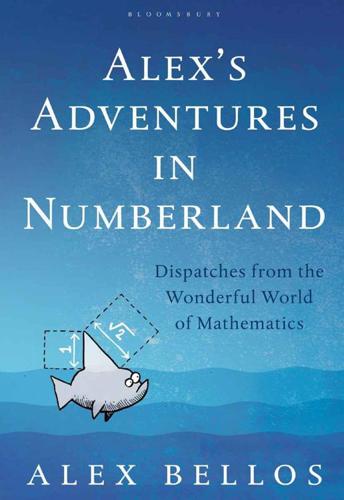
Alex's Adventures in Numberland
by
Alex Bellos
Published 3 Apr 2011
In retrospect, it is easy to see how ranking traits – such as intelligence or racial purity – can lead to discrimination and bigotry. Since the bell curve appears when human features are measured, the curve has become synonymous with attempts to classify some humans as intrinsically better than others. The highest-profile example of this was the publication in 1994 of The Bell Curve by Richard J. Herrnstein and Charles Murray, one of the most fiercely debated books of recent years. The book, which owes its name to the distribution of IQ scores, argues that IQ differences between racial groups are evidence of biological differences. Galton wrote that the bell curve reigned with ‘serenity and in complete self-effacement’.
…
The first person to recognize the pattern produced by this kind of measurement error was the German mathematician Carl Friedrich Gauss. The pattern is described by the following curve, called the bell curve: Gauss’s graph needs some explaining. The horizontal axis describes a set of outcomes, for instance the weight of baguettes or the distance of stars. The vertical axis is the probability of those outcomes. A curve plotted on a graph with these parameters is known as a distribution. It shows us the spread of outcomes and how likely each is. There are lots of different types of distribution, but the most basic type is described by the curve opposite. The bell curve is also known as the normal distribution, or the Gaussian distribution.
…
Originally, it was known as the curve of error, although because of its distinctive shape, the term bell curve has become much more common. The bell curve has an average value, which I have marked X, called the mean. The mean is the most likely outcome. The further you go from the mean, the less likely the outcome will be. When you take two measurements of the same thing and the process has been subject to random error you tend not to get the same result. Yet the more measurements you take, the more the distribution of outcomes begins to look like the bell curve. The outcomes cluster symmetrically around a mean value. Of course, a graph of measurements won’t give you a continuous curve – it will give you (as we saw with my baguettes) a jagged landscape of fixed amounts.
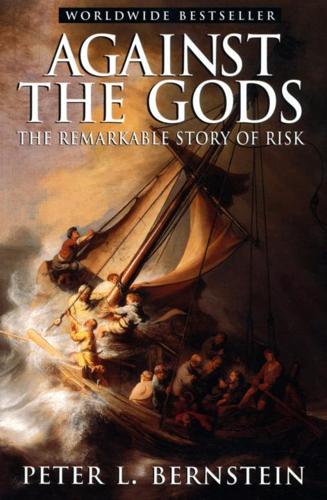
Against the Gods: The Remarkable Story of Risk
by
Peter L. Bernstein
Published 23 Aug 1996
The process begins with the bell curve, the main purpose of which is to indicate not accuracy but error. If every estimate we made were a precisely correct measurement of what we were measuring, that would be the end of the story. If every human being, elephant, orchid, and razor-billed auk were precisely like all the others of its species, life on this earth would be very different from what it is. But life is a collection of similarities rather than identities; no single observation is a perfect example of generality. By revealing the normal distribution, the bell curve transforms this jumble into order.
…
With so much of this damaging evidence generated in psychology laboratories, in experiments with young students, in hypothetical situations where the penalties for error are minimal, how can we have any confidence that the findings are realistic, reliable, or relevant to the way people behave when they have to make decisions? The question is an important one. There is a sharp contrast between generalizations based on theory and generalizations based on experiments. De Moivre first conceived of the bell curve by writing equations on a piece of paper, not, like Quetelet, by measuring the dimensions of soldiers. But Galton conceived of regression to the mean-a powerful concept that makes the bell curve operational in many instances-by studying sweetpeas and generational change in human beings; he came up with the theory after looking at the facts. Alvin Roth, an expert on experimental economics, has observed that Nicholas Bernoulli conducted the first known psychological experiment more than 250 years ago: he proposed the coin-tossing game between Peter and Paul that guided his uncle Daniel to the discovery of utility.26 Experiments conducted by von Neumann and Morgenstern led them to conclude that the results "are not so good as might be hoped, but their general direction is correct."'-' The progression from experiment to theory has a distinguished and respectable history.
…
.* Leibniz's admonition-"but only for the most part"-was more profound than he may have realized, for he provided the key to why there is such a thing as risk in the first place: without that qualification, everything would be predictable, and in a world where every event is identical to a previous event no change would ever occur. In 1730, Abraham de Moivre suggested the structure of the normal distribution-also known as the bell curve-and discovered the concept of standard deviation. Together, these two concepts make up what is popularly known as the Law of Averages and are essential ingredients of modern techniques for quantifying risk. Eight years later, Daniel Bernoulli, Jacob's nephew and an equally distinguished mathematician and scientist, first defined the systematic process by which most people make choices and reach decisions.

Apollo
by
Charles Murray
and
Catherine Bly Cox
Published 1 Jan 1989
About the Authors Catherine Bly Cox and Charles Murray were born and raised in Newton, Iowa, six years and three blocks apart. She was educated at William and Mary, Oxford, and Yale, and was a professor of English literature when she and Murray re-met in their thirties and married. He was educated at Harvard and the Massachusetts Institute of Technology, and has made his career as a writer about public policy. Since 1990, he has been a fellow at the American Enterprise Institute. Among his other books are Losing Ground, The Bell Curve (with Richard J. Herrnstein), and Human Accomplishment. Cox and Murray already shared a long-standing fascination with the exploration of space when they took Jack Trombka’s astrophysics course in 1983 and decided to write a book about the people on the ground.
…
—Charles Petit, San Francisco Chronicle “Murray and Cox’s description of the final moments of lunar lander Eagle’s descent is tension defined.” —Philadelphia Inquirer “An excellent new history. . . , an epic ‘captured in miniature.’” —Thomas Mallon, Wall Street Journal “Mission accomplished.” —Peter Spotts, The Christian Science Monitor “This book is a ‘GO.’” —Walter J. Boyne, Chicago Tribune APOLLO Charles Murray & Catherine Bly Cox Originally published as Apollo: The Race To the Moon Copyright © 1989 by Cox and Murray, Inc. Published by Simon & Schuster 2004 edition copyright © 2004 by Cox and Murray, Inc. Published by South Mountain Books Ebook edition copyright © 2010 by Cox and Murray, Inc.
…
Now try to imagine a nation beginning a space program on that day with forty-five people, no launch vehicle, no spacecraft, no launch facilities, no experience with manned space flight—and landing on the moon this morning. What the people of Apollo accomplished is already hard to believe. In a few decades, it will be almost beyond imagining. Welcome to their world. Catherine Bly Cox & Charles Murray Burkittsville, Maryland 2 July 2004 Acknowledgments The idea for Apollo came from Jack Trombka, who told us fascinating stories about life in Building 30. Then, after we had written a précis but decided we didn’t have time to do the book, Apollo survived because Amanda Urban, our agent, refused to take us seriously—and worked out a way that gave us time after all.

The Working Poor: Invisible in America
by
David K. Shipler
Published 12 Nov 2008
Class is a factor: At school age, children from highly stressed families of low socio-economic status display “poorer emotional adjustment and increased school problems” than those from upper-income families who are also highly stressed.15 Causal connections are hard to trace, and IQ has been seen as more cause than effect by some researchers, most notably Richard J. Herrnstein and Charles Murray, whose 1994 volume, The Bell Curve: Intelligence and Class Structure in American Life, argues that intelligence is overwhelmingly inherited. In their view, people with lower IQs naturally do less well in life, gravitate to lower socio-economic levels, and tend to have lower-IQ chil-dren who repeat the pattern.
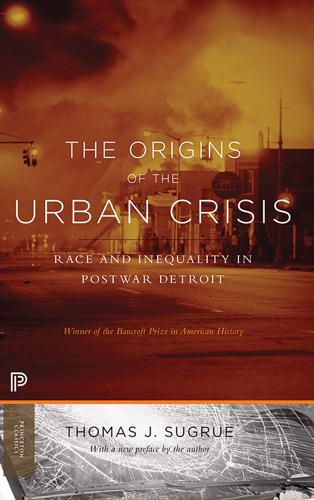
The Origins of the Urban Crisis
by
Sugrue, Thomas J.
Katz, The Price of Citizenship: Redefining the American Welfare State (New York: Metropolitan Books, 2001). The most influential conservative book on race is Stephan Thernstrom and Abigail Thernstrom, America in Black and White: One Nation, Indivisible (New York: Simon and Schuster, 1997). The most influential conservative tract on race and intelligence is Richard J. Herrnstein and Charles Murray, The Bell Curve: Intelligence and Class Structure in American Life (New York: Free Press, 1996). For a powerful rejoinder to racial conservatives of all stripes, see Michael K. Brown et al., Whitewashing Race: The Myth of a Color-Blind Society (Berkeley: University of California Press, 2003). 5.
…
Franklin Frazier, The Negro Family in the United States (Chicago: University of Chicago Press, 1939); Lee Rainwater and William L. Yancey, eds., The Moynihan Report and the Politics of Controversy (Cambridge, Mass.: MIT Press, 1967). More recent works include George Gilder, Wealth and Poverty (New York: Basic Books, 1981); Charles Murray, Losing Ground: American Social Policy, 1950–1980 (New York: Basic Books, 1984); Myron Magnet, The Nightmare and the Dream: The Sixties Legacy to the Underclass (New York: William Morrow, 1993); Lawrence Mead, The New Politics of Poverty (New York: Basic Books, 1992). Many liberal authors have picked up these themes as well.

Equality
by
Darrin M. McMahon
Published 14 Nov 2023
Daniel Markovits, The Meritocracy Trap: How America’s Foundational Myth Feeds Inequality, Dismantles the Middle Class, and Devours the Elite (New York: Penguin, 2019), 27; Sandel, Tyranny of Merit; Adrian Wooldridge, The Aristocracy of Talent: How Meritocracy Made the Modern World (London: Allen Lane, 2021), 7–8. 21. See, for example, the work and response to Kathryn Paige Harden, The Genetic Lottery: Why DNA Matters for Social Equality (Princeton, NJ: Princeton University Press, 2021); Richard J. Herrnstein and Charles Murray, The Bell Curve: Intelligence and Class Structure in American Life (New York: Free Press, 1996). 22. Walter Scheidel, The Great Leveler: Violence and the History of Inequality from the Stone Age to the Twenty-First Century (Princeton, NJ: Princeton University Press, 2017), 424–444. 23.

Against the Web: A Cosmopolitan Answer to the New Right
by
Michael Brooks
Published 23 Apr 2020
Meanwhile, in areas from housing to policing to economic austerity, right-wing and neoliberal policies have done a lot to re-enforce the disparities. As such, their continued existence is pretty unsurprising. Seems pretty straightforward, right? Well, an alternative explanation is given in Charles Murray and Richard Hernstein’s 1994 book The Bell Curve. The larger thesis of the book is that economic inequality in general is largely attributable to genetically innate differences in IQ. In the most controversial chapter, Murray and Hernstein extend this thesis to economic inequality between the races. It says a lot about the dismal political environment of America in the 1990s that this was the part of the book in which Murray and Hernstein were perceived as having crossed the line.
…
It says a lot about the dismal political environment of America in the 1990s that this was the part of the book in which Murray and Hernstein were perceived as having crossed the line. Their larger claims about poor and working-class people of all races didn’t cause nearly as much commotion. While in what follows I’ll talk about the debate as it’s played out, which has focused on the racial dimension, it’s worth underlining that The Bell Curve attempts to justify extreme inequality of all kinds as a result of natural forces. The book is in many respects the ultimate example of the intellectually limiting and morally damaging effects of naturalizing instead of historicizing. Far from having some well-worked-out objection to the obvious explanation of disparate racial outcomes, Murray has dismissed this explanation in remarkably vapid ways.
…
One should never do what some politically motivated critics often do, which is to say, ‘This is so politically obnoxious that it cannot be true.’ DENNETT: Oh, yes. DAWKINS: Which is a different— DENNETT: Which is a different thing entirely. No, no. HITCHENS: It would be like discovering that you thought the bell curve on black and white intelligence was a correct interpretation of IQ. You could say, ‘Now what am I going to do?’ Fortunately, these questions don’t, in fact, present themselves that way. Harris speaks next. Instead of challenging Hitchens on this point, he redirects the conversation to the comfortable terrain of Islam-bashing.

Basic Economics
by
Thomas Sowell
Published 1 Jan 2000
{324} “The Economic Role of Women,” Economic Report of the President, 1973 (Washington: U.S. Government Printing Office, 1973), p. 105. {325} Diana Furchtgott-Roth and Christine Stolba, Women’s Figures: An Illustrated Guide to the Economic Progress of Women in America (Washington: The A.E.I. Press, 1999), p. 15. {326} Ibid., p. 33. {327} Richard J. Herrnstein and Charles Murray, The Bell Curve: Intelligence and Class Structure in American Life (New York: The Free Press, 1994), p. 323. {328} David Green, Poverty and Benefit Dependency, p. 43. {329} Merle Lipton, Capitalism and Apartheid: South Africa, 1910–84 (Aldershot, Hants, England: Gower, 1985), pp. 152, 153
…
Trewartha, Japan: A Geography (Madison: University of Wisconsin Press, 1965), p. 78. {876} Yasuo Wakatsuki, “Japanese Emigration to the United States 1866–1924: A Monograph,” Perspectives in American History, edited by Donald Fleming (Cambridge, MA: Harvard University Press, 1979), Volume XII, pp. 414, 415. {877} Charles Murray, Human Accomplishment: The Pursuit of Excellence in the Arts and Sciences, 800 B.C. to 1950 (New York: Harper Collins, 2003), pp. 355–361. {878} Fernand Braudel, The Mediterranean and the Mediterranean World in the Age of Philip II, translated by Siân Reynolds (Berkeley: University of California Press, 1995), Vol.
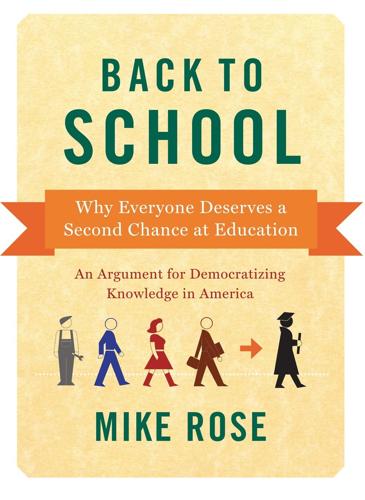
Back to School: Why Everyone Deserves a Second Chance at Education
by
Mike Rose
Published 17 Sep 2012
.”: Samuel Orton, “The ‘Sight Reading’ Method of Teaching Reading as a Source of Reading Disability,” Journal of Educational Psychology, vol. 20, 1929, 135–143. “. . . 1930 textbook on written . . .”: Alfred Lang, Modern Methods in Written Examinations (Boston: Houghton Mifflin, 1930), 38. “Witness The Bell Curve. . .”: Richard J. Hernstein and Charles Murray, The Bell Curve. “But . . . remedial education has worked for some students . . .” Paul Attewell et al., “New Evidence on College Remediation,” Journal of Higher Education, vol. 77, 2006, 886–924. “This is the kind of thing that captivated me . . .”: Rose, The Mind at Work. “In The Republic Plato . . .”: Plato, The Republic of Plato, trans.
…
One way to account for unequal opportunity is to claim that intelligence is a factor and that the families and their children at the lower end of things are there because they’re not that bright— so various compensatory programs, in fact, won’t help that much. You’ll certainly hear this kind of talk in private, and a few bold pundits like Charles Murray, of The Bell Curve fame, say it in public. But scientifically it doesn’t hold water, and it is so politically unpalatable that few politicians would risk uttering it. In various ways, a number of the chapters in Back to School address this issue of social class and intelligence. Another way to explain away inequality—one that has a long history in the United States and is still very much with us—is the moral argument.
…
“Recent studies . . . parental income . . .”: “Ever Higher Society, Ever Harder to Ascend,” Economist, January 1, 2005. “A report from the Pell Institute . . .”: “Developing 20/20 Vision on the 2020 Degree Attainment Goal,” (Washington, DC: Pell Institute, May 2011). Richard J. Hernstein and Charles Murray, The Bell Curve: Intelligence and Class Structure in American Life (New York: Free Press, 1994). 199 NOTES 24 27 29 “Not many boys can expect . . .”: Fink, Ragged Dick and Mark, the Match Boy, 30. “A particularly trenchant critique . . .”: Gordon Lafer, The Job Training Charade (Ithaca, NY: Cornell University Press, 2002).
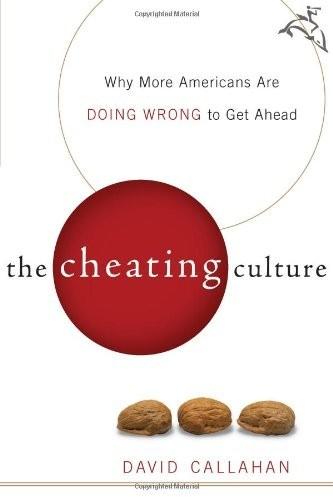
The Cheating Culture: Why More Americans Are Doing Wrong to Get Ahead
by
David Callahan
Published 1 Jan 2004
They are on AEI's board because their companies are among the dozens that donate handsomely to AEI, funding a steady stream of highbrow studies that trash government regulation, advocate repealing taxes on corporations and the rich, propose ways to dismantle America's social safety net—and even seek to rehabilitate social Darwinist ideas about the innate superiority of some groups of human beings over others, as AEI did when it supported Charles Murray's research for his controversial book on human intelligence, The Bell Curve. "Corporations provide important input to AEI on a wide variety of issues," admits AEI's annual report. Yet what serious think tank would want input from entities designed solely to maximize shareholder value? Self-interest is why so many corporations give money to AEI—over $5 million a year—but self-interest is antithetical to what sound scholarship is all about.
…
See materialsm Moral Compass, The (Bennett), [>] Moral Foundations of Trust, The (Uslaner), [>], [>] morality: laissez-faire economics and, [>] Lakoff on, [>]–[>] and social values, [>]–[>], [>]–[>] Turiel on development of, [>]–[>] and unequal punishment, [>]–[>] Morze, Mark, [>]–[>] Mount Holyoke College, [>] multilevel marketing: by doctors, [>]–[>], [>]–[>] Municipal Credit Union: ATM fraud at, [>]–[>], [>]–[>], [>] Murray, Charles: The Bell Curve, [>]–[>] Losing Ground, [>] and racism, [>] music piracy, [>], [>], [>]–[>], [>] Napster, [>]–[>] National Association of Securities Dealers: inadequate disciplinary standards, [>]–[>] National College Athletic Association: and media contracts, [>], [>]–[>] National Food Service Security Council, [>] National Football League, [>] Neal, Randy: on résumé cheating, [>]–[>] Neurontin: marketing scandal, [>], [>]–[>], [>] New Republic: and Stephen Glass, [>], [>]–[>], [>] New White Nationalism, The (Swain), [>] New York Times:on bribery of doctors, [>] and Jayson Blair, [>]–[>], [>]–[>] Olasky, Marvin, [>] O'Leary, George: lies on résumé, [>], [>], [>] On the Origin of Species (Darwin), [>]–[>] Orange County, California: bankruptcy of, [>] Overspent American, The (Schor), [>] Pai, Lou, [>]–[>] Paine, Lynn Sharp, [>] Papows, Jeff: lies on résumé, [>] parents: encourage student cheating, [>]–[>] Parke-Davis: evades clinical trials, [>]–[>] and Neurontin marketing scandal, [>]–[>], [>] Parker, Tom: on college admissions cheating, [>], [>] Partnoy, Frank: Infectious Greed, [>], [>]–[>], [>]–[>] Paulino, Rolando: and Little League cheating scandal, [>] "Pay Hall of Shame," [>] Pepperdine University: corporate ethics program, [>]–[>] Peters, Charles, [>] Petersen, Tom: on athletic corruption, [>] Pew Center, [>] Pfizer: and Neurontin marketing scandal, [>], [>] pharmaceutical: advertising by, [>] bribe doctors, [>], [>], [>], [>], [>]–[>], [>]–[>], [>] and FDA, [>]–[>] inadequate prosecution of, [>]–[>] Pitt, Harvey, [>] politics: and campaign finance, [>], [>]–[>], [>], [>] effect of wealth on, [>]–[>], [>], [>], [>] moral and religious issues in, [>] and new social contract, [>]–[>] and special interest groups, [>]–[>] Primary Colors (Klein), [>] Princeton University: breaks into Yale computers, viii "principled conscience," [>]–[>] Prudential Securities, [>], [>] Public Citizen, [>] Public Oversight Board, [>] punishment, inequality of: and "country club prisons," [>]–[>] and fines, [>]–[>] morality and, [>]–[>] wealth and, [>]–[>], [>], [>]–[>] in white-collar crime, [>]–[>], [>]–[>] Putnam, Robert: and decline of civic life, [>], [>] Quart, Alissa: Branded, [>] Qwest Communications, [>]–[>], [>] race: and social contract, [>]–[>] racism: Murray and, [>] Rand, Ayn: The Virtue of Selfishness, [>] "rank and yank" personnel management, [>]–[>] Reagan, Ronald, [>] deregulation program, [>] on wealth, [>]–[>] Recording Industry of America: fights music piracy, [>] Resolution Trust Corporation: victim of overbilling, [>] résumés: cheating on, [>]–[>], [>]–[>] Retin-A: marketing scandal, [>] Rich, Ken, [>]–[>] Rigas, John, [>] Roche, James M., [>] Rodriguez, Alex, [>] Ronan, Monica, [>] Rossotti, Charles: on inadequate IRS resources, [>], [>] Rubin, Jerry, [>] Rutgers University, [>] cheating at, [>] Safran, Ronald, [>]–[>] Salomon Smith Barney: and WorldCom, [>], [>] Sandan, Ronah, [>]–[>] San Francisco Giants, [>]–[>] Sarbanes-Oxley Act, [>], [>] savings and loan failures, [>] accounting firms and, [>] Scaife, Richard Mellon, [>] Schaeffer, Esther: on character education programs, [>] Schilling, Curt: on drug use in sports, [>] Schiltz, Patrick J., [>]–[>], [>] Scholastic Aptitude Test: cheating on, [>]–[>], [>]–[>], [>] Schor, Juliet: The Overspent American, [>] Sears Automotive: encourages fraud by mechanics, [>]–[>], [>]–[>], [>] investigations of, [>]–[>] Securities and Commodities Fraud Task Force, [>]–[>] Segraves, Donald: on automobile insurance fraud, [>]–[>] self-interest: individualism and, [>]–[>] Seniors Coalition, [>] Shad, John: and corporate ethics programs, [>] as head of SEC, [>]–[>] Shalit, Ruth, [>] Sherman, Scott: and corporate ethics program, [>]–[>] shoplifting, vii, [>] "Short Happy Life of the American Yuppie, The" (Hertzberg), [>] Siciliano, Thomas, [>]–[>] Silicon Valley: corruption in, [>]–[>] Silverado Savings and Loan, [>], [>]–[>] Silverman, Jeffrey, [>]–[>] Simon, David, [>]–[>] Simpson, O.
…
While liberal ideas emphasized the harsh vicissitudes of a capitalist system—where not everyone could always find work, or work that afforded them basic life necessities like food, housing, and health care—conservatives emphasized the downside of trying to correct for the market's shortcomings. Charles Murray's bestselling attack on welfare, Losing Ground, exemplified this line of logic.12 More generally, conservatives equated unfettered economic competition with virtue. They took issue with the antimaterialist values of the '60s. A focus on making money wasn't bad, but exactly the opposite: Wealth was the reward for those who worked hard and competed successfully.

Good Prose: The Art of Nonfiction
by
Tracy Kidder
and
Richard Todd
Published 15 Jan 2013
When he invokes his professional status it is to wonder how he would treat the news if he himself failed to measure up to the profession’s highest standards: If we … discovered that I am one of the worst, the answer would be easy: I’d turn in my scalpel. But what if I were a B–? Working as I do in a city that’s mobbed with surgeons, how could I justify putting patients under the knife? I could tell myself, Someone’s got to be average. If the bell curve is a fact, then so is the reality that most doctors are going to be average. There is no shame in being one of them, right? Except, of course, there is. “The Bell Curve” is of general worth for the issue it raises, and it also has great value for a writer of essays. In discovering the right place to stand in relation to his subject, Gawande accomplishes what every writer must accomplish.
…
But then again, we are members of a generation that hears a stern voice in the ear enforcing the old rule. It is a weak defense to point out that the voice belongs to a woman who was teaching sixth grade. Other solutions have been proposed. The conservative writer Charles Murray has an idea that is simplicity itself: use the pronoun appropriate to your own sex. (Jane says everyone/her; John says everyone/his. Unfortunately no one seems to recognize this rule except Charles Murray, and it costs him nothing to follow it since he is a man. The language has yet to come up with a universally acceptable solution. In most cases it’s possible to write around the problem, by making the subject plural or changing the sentence structure in some other way
…
White and Didion may represent extremes, each admirable, in the essayist’s use of the self. Atul Gawande offers an equally admirable example of the use of the professional self. Gawande is a surgeon and professor of medicine at Harvard, and he has published several books of essays on medical subjects. In “The Bell Curve,” he contemplates a simple fact that most doctors find hard to discuss: that some of them are better than others. Gawande reports that the differences have become quantifiable and can be expressed in a bell curve, and he ponders the effects on patients and doctors alike. Though it is plain that Gawande writes with an implicit authority (and no doubt with special access) because of his professional identity, he never pulls rank on the reader.
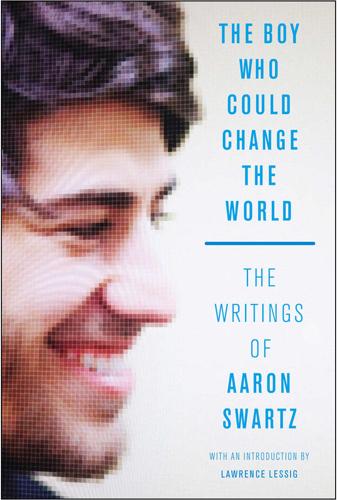
The Boy Who Could Change the World: The Writings of Aaron Swartz
by
Aaron Swartz
and
Lawrence Lessig
Published 5 Jan 2016
There’s no way that doesn’t unfairly skew the public debate. * Greg Robinson, “Why the Media Should Stop Paying Attention to the New Book that Defends Japanese Internment,” History News Network, 9-9-2004. Endorsing Racism: The Story of The Bell Curve http://www.aaronsw.com/weblog/shifting3 June 8, 2006 Age 19 If you have any doubt about the power of the think tanks, look no further than the story of The Bell Curve. Written by Charles Murray, who received over $1.2 million from right-wing foundations for his work, the book claimed that IQ tests revealed black people to be genetically less intelligent than whites, thus explaining their low place in society.
…
It’s going to make them feel better about things they already think but do not know how to say.”‡ That’s certainly what The Bell Curve did, replacing a debate over how to improve black achievement with one about whether such improvement was even possible. There was just one problem: none of this stuff was accurate. As Professor Michael Nunley wrote in a special issue of the American Behavioral Scientist on The Bell Curve, after a series of scientific articles debunked all the book’s major claims: “I believe this book is a fraud, that its authors must have known it was a fraud when they were writing it, and that Charles Murray must still know it’s a fraud as he goes around defending it. . . .
…
The Attraction of the Center The Conservative Nanny State Political Entrepreneurs and Lunatics with Money Postscript by Henry Farrell Media Introduction by Cory Doctorow The Book That Changed My Life The Invention of Objectivity Shifting the Terms of Debate: How Big Business Covered Up Global Warming Making Noise: How Right-wing Think Tanks Get the Word Out Endorsing Racism: The Story of The Bell Curve Spreading Lies: How Think Tanks Ignore the Facts Saving Business: The Origins of Right-wing Think Tanks Hurting Seniors: The Attack on Social Security Fighting Back: Responses to the Mainstream Media What Journalists Don’t: Lessons from the Times Rachel Carson: Mass Murderer? Is Undercover Over?

Surveillance Valley: The Rise of the Military-Digital Complex
by
Yasha Levine
Published 6 Feb 2018
In many of our key domestic programs, especially those directed at disadvantaged sub-cultures, the methodological problems are similar to those described in this proposal,” reads the project’s proposal. “The application of the Thai findings at home constitutes a potentially most significant project contribution.”68 That’s exactly what happened. After the war, researchers, including a young Charles Murray (author of The Bell Curve), who had worked on counterinsurgency programs for ARPA in Southeast Asia, returned to the United States and began to apply the pacification ideas they developed in the jungles to the thorny domestic issues of class, race, and economic inequality.69 The effects were just as disastrous at home as they were overseas, giving a modern scientific veneer to public policies that reinforced racism and structural poverty.70 As the AIR proposal had not so subtly hinted, ARPA’s behavioral science programs in Southeast Asia went hand in hand with a bloodier and more traditional counterinsurgency policy: covert programs of murder, terror, and torture that collectively came to be known as the Phoenix Program.
…
So, Murray advised the opposite: harsher prison terms and punitive zero-tolerance measures to deter crime as well as abolishing all government social programs, including food stamps, welfare, and the Social Security pension system (“Prison Called Best Treatment for Juvenile Offenders,” Associated Press, November 1, 1979, https://surveillancevalley.com/content/citations /prison-best-treatment-for-juvenile-offenders-associated-press-1-november-1979.png; Charles A. Murray and Louis A. Cox Jr., Juvenile Corrections and the Chronic Delinquent [Washington, DC: American Institutes for Research, March 1979]). Today, Murray is a libertarian political scientist and one of the most influential ideological architects of the post-Reagan era. He is best known for The Bell Curve, a controversial best seller that promoted racial eugenics theories, claiming among other things that whites and Asians are genetically superior in intelligence to blacks and Latinos.
…
Banning Garrett, “The Dominoization of Thailand,” Ramparts, November 1970, http://www.unz.org/Pub/Ramparts-1970nov-00007. 68. Ibid. 69. Jennifer S. Light, From Warfare to Welfare: Defense Intellectuals and Urban Problems in Cold War America (Baltimore, MD: Johns Hopkins University Press, 2005). 70. Take Charles Murray, a young researcher who worked on ARPA’s counterinsurgency programs for the American Institutes for Research in Thailand (Eric Wakin, Anthropology Goes to War: Professional Ethics and Counterinsurgency in Thailand [Madison, WI: Center for Southeast Asian Studies, 1998]). His experience among the rebellions of Thai peasants marked his thinking for life.

The Quiet Coup: Neoliberalism and the Looting of America
by
Mehrsa Baradaran
Published 7 May 2024
Sowell’s explanation for racial disparities is simple: a gap in IQ between Black and white communities, an explanation that lands much closer to the Nazis’ line of reasoning than those pointing to systemic racism. Ironically, systemic racism is now how some on the right describe American society. Charles Murray, the author of The Bell Curve and a notable proponent of the racial IQ thesis, lauded the man he dubbed “the Immortal Sowell” by noting that “in a reasonable world, Thomas Sowell’s life would be celebrated in the same way we honor Frederick Douglass, George Washington Carver, and Marian Anderson—as a black hero, born into a genuinely systemically racist America, who not only endured but prevailed.”36 IN A RELIGION that renders the profiteer and the loan shark immune from divine judgment, someone has to be a sinner.
…
P., 4, 198, 254, 291, 351 Morgan Stanley, 267, 268, 290 Morrison, Alan, 106–7, 113 mortgage-backed securities, 262–63, 268, 275, 343 mortgage loans, 15, 17, 19, 64, 69, 122, 199–201, 212, 216, 249, 250, 275–76, 288, 293, 300, 307–8, 316, 343, 358, 364 Mossadegh, Mohammad, 47, 60, 61 motherhood penalty, 327 Mothers in Harlem, 202 Mott, Charles, 77 Mott, Stuart, 77 Mozambique, 39 MSNBC, 141 Murray, Charles, 89, 362 The Bell Curve, 216 Musk, Elon, 326–29, 331 Myrdal, Alva, 40 Myrdal, Gunnar, 31–33, 38, 40, 59, 60, 69, 144, 235 An American Dilemma, 12–13, 32 Monetary Equilibrium, 32 Nabisco, 271 Nader, Ralph, 76–77, 86, 106–8, 113 Unsafe at Any Speed, 76 Naderites, 87, 107 Nader’s Raiders, 76–77 Nakamoto, Satoshi, 333 Nasdaq, 300 National Aeronautics and Space Administration (NASA), 44, 236, 327 National Association for the Advancement of Colored People (NAACP), 120, 126, 144 National Bank Act (1863) (NBA), 263–64 National Bureau of Economic Research, 168 national deficit, 236, 238 National Economic Council, 301 National Guard, 5 National Health Service, 57, 92 nationalism, 180, 318 National Review, The, 26–27, 56, 109, 185, 188, 191, 230 National Security Agency (NSA), xxiv national sovereignty.
…
The Bradley brothers felt persecuted by both the federal government and their ungrateful employees, which led them to political activism.33 They used their father’s fortune to support a right-wing, antigovernment ideological program in universities, dedicating more than $370 million to right-wing groups, including the Federalist Society, that have had a significant effect on law and policy. The Bradley Foundation’s eponymous prize gives $250,000 yearly to individuals whose ideas “advance freedom.” Past winners include Fox News Chairman Roger Ailes; John Bolton, who served briefly as Trump’s National Security Adviser; race IQ proponent Charles Murray; and neoliberal economists Gary Becker, Thomas Sowell, and Richard Epstein.34 John Olin was apparently appalled by the Black student protests in 1969 at his alma mater, Cornell University, which spurred him to direct his foundation’s philanthropy to fight the alleged liberal takeover of universities.
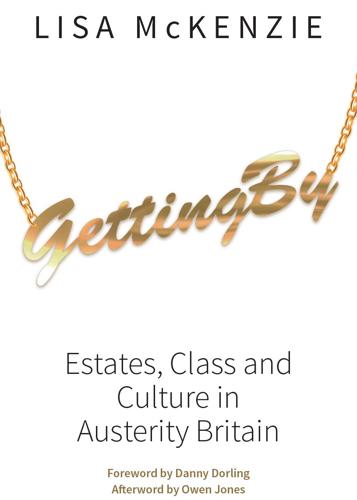
Getting By: Estates, Class and Culture in Austerity Britain
by
Lisa McKenzie
Published 14 Jan 2015
Haylett, C. (2003) Culture, class and urban policy: Reconsidering inequality, Oxford: Blackwell Publishing. Hebidge D. (1979) Subculture: The meaning of style, London: Methuen. Hebidge, D. (1983) ‘“Ska tissue”: the rise and fall of two tone’, in S. Davis and P. Simon (eds) Reggae international, London: Thames & Hudson. Herrnstein, R.J. and Murray, C. (1994) The bell curve: Intelligence and class structure in American life, New York: Free Press. Hewitt, R. (1986) White talk, black talk: Inter-racial friendship and communication amongst adolescents, Cambridge: Cambridge University Press. Hewitt, R. (2005) The white backlash: The politics of multi-culturalism, Cambridge: Cambridge University Press.
…
‘Broken’ Britain Symbolic violence has been visited on the poor for many generations in the UK, often through the language of the ‘underclass’ and the negative connotations attributed to those that it describes. The language, which demeans the poor, is powerful and has been with us for many generations, and political parties both left and right have used it in gaining political capital among the electorate, when needed. Margaret Thatcher, in the 1980s, along with Charles Murray, who later became the co-author of the notorious Bell curve (Herrnstein and Murray, 1994), spoke clearly of the problems the ‘underclass’ caused with their ‘cycle of poverty’, while the Blair government used the language of exclusion and ‘the excluded’ (Welshman, 2007, pp 4-6). The Cameron Conservatives commissioned a report by the right-wing think tank, the Centre for Social Justice, in 2006 to look at welfare in the UK.
…
What Lewis described is a defensive value system created within this poor neighbourhood in order for that community to survive the extremes of social inequalities at that particular time in that particular place. However, Lewis’ theory of the ‘culture of poverty’ was misused by the UK Conservative government and the US neoliberal and right-wing social commentator Charles Murray in the 1980s in order to create their own theory of ‘the cycle of deprivation’ – the supposed perverse effects of welfare dependency – to implement neoliberal policies by rolling back welfare and state benefits and focusing on the family rather than the structural or societal causes of inequality.

Model Thinker: What You Need to Know to Make Data Work for You
by
Scott E. Page
Published 27 Nov 2018
Library of Congress Control Number: 2018942802 ISBNs: 978-0-465-09462-2 (hardcover); 978-0-465-09463-9 (ebook) E3-20181019-JV-PC CONTENTS Cover Title Page Copyright Dedication Epigraph Prologue 1 The Many-Model Thinker 2 Why Model? 3 The Science of Many Models 4 Modeling Human Actors 5 Normal Distributions: The Bell Curve 6 Power-Law Distributions: Long Tails 7 Linear Models 8 Concavity and Convexity 9 Models of Value and Power 10 Network Models 11 Broadcast, Diffusion, and Contagion 12 Entropy: Modeling Uncertainty 13 Random Walks 14 Path Dependence 15 Local Interaction Models 16 Lyapunov Functions and Equilibria 17 Markov Models 18 Systems Dynamics Models 19 Threshold Models with Feedbacks 20 Spatial and Hedonic Choice 21 Game Theory Models Times Three 22 Models of Cooperation 23 Collective Action Problems 24 Mechanism Design 25 Signaling Models 26 Learning Models 27 Multi-Armed Bandit Problems 28 Rugged-Landscape Models 29 Opioids, Inequality, and Humility About the Author Notes Bibliography Index To Michael D.
…
We must maintain modest expectations. People are diverse, purposive, adaptive, biased, and socially influenced, and we possess a degree of agency. How can we not expect any single model of human behavior to be wrong? It must be. Our aim is to construct many models that as an ensemble will be useful. 5. Normal Distributions: The Bell Curve I couldn’t claim that I was smarter than sixty-five other guys—but the average of sixty-five other guys, certainly. —Richard Feynman Distributions constitute part of the core knowledge base for any modeler. Later, we use distributions to construct and analyze models of path dependence, random walks, Markov processes, search, and learning.
…
See Smith 2002. 22 See Arthur 1994. 23 See Lucas 1976 and Campbell 1976. 24 See de Marchi 2005 for a discussion of how models illuminate what could happen. See Gilboa and Schmiedler 1995 and Bednar and Page 2007, 2018 for equation- and rule-based models in which actors apply behaviors in similar games. Chapter 5: Normal Distributions: The Bell Curve 1 Given a set of data {xi,…, xN}, the variance equals the average squared distance to the mean, μ, which is written as: The standard deviation equals the square root of the average squared distance to the mean, μ: 2 Any of several conditions are sufficient. One of the more common, the Lindeberg condition, requires that the proportion of the total variation that comes from any one variable will converge to zero as the number of variables grows large. 3 See Lango et al. 2010. 4 For the general case, assuming independent random variables, we have the following expressions: Setting σi = σ for all i gives 5 Wainer 2009 provides a more thorough analysis of the policy choices involved. 6 The threshold of two standard deviations (5% significance) is a convention open to criticism, but it is what social scientists generally use.

The Meritocracy Trap: How America's Foundational Myth Feeds Inequality, Dismantles the Middle Class, and Devours the Elite
by
Daniel Markovits
Published 14 Sep 2019
utm_term=.2e8e2e0ce30c, and Ugne Saltenyte, “One Quarter of the World’s Educated Population Resides in Just 100 Cities,” Euromonitor International, July 15, 2014, accessed July 19, 2018, https://blog.euromonitor.com/2014/07/one-quarter-of-the-worlds-educated-population-resides-in-just-100-cities.html. zip codes in the top 1 percent: See Murray, Coming Apart, 78, 82, 87, and Appendix B. See also Charles Murray, “Charles Murray, Author of Coming Apart, Examines Demographic Shifts in This New Decade,” Debate This Book, April 25, 2013, accessed July 19, 2018, http://debatethisbook.com/2013/04/25/charles-murray-author-of-coming-apart-examines-demographic-shifts-in-this-new-decade/. high school degrees only: A longitudinal study based on data from the years between 1979 and 1996 found that 19.2 percent of young adults with just a high school education moved states, while 36.6 percent of college graduates and 45.0 percent of people with more than a college education moved to a different state.
…
by income and education: See Murray, Coming Apart, 72–73. most educated 5 percent of zip codes: See Chapter 3. Elite professional school graduates: See Murray, Coming Apart, 78, 82, 8, 315–20. See also Charles Murray, “Charles Murray, Author of Coming Apart, Examines Demographic Shifts in This New Decade,” Debate This Book, April 25, 2013, http://debatethisbook.com/2013/04/25/charles-murray-author-of-coming-apart-examines-demographic-shifts-in-this-new-decade/. more political clout: See Moretti, The New Geography of Jobs. See also Moretti, “America’s Great Divergence.” inequality of dollar income: See Rebecca Diamond, “The Determinants and Welfare-Implications of U.S.
…
See John Edwards, “Vice Presidential Nomination Speech,” Democratic National Convention, Wells Fargo Center, Philadelphia, Pennsylvania, July 28, 2004, and John Edwards, “Two Americas” (speech), Reno Town Hall, June 23, 2007. is coming apart: Coming Apart is the title of a recent book by the conservative political scientist Charles Murray. See Charles Murray, Coming Apart: The State of White America, 1960–2010 (New York: Random House, 2013). Hereafter cited as Murray, Coming Apart. not seen since the Black Death: See Simon Szreter and Anne Hardy, “Urban Fertility and Mortality Patterns,” in The Cambridge Urban History of Britain, 1840–1950, ed.

The Second Machine Age: Work, Progress, and Prosperity in a Time of Brilliant Technologies
by
Erik Brynjolfsson
and
Andrew McAfee
Published 20 Jan 2014
When revenues are roughly proportional to absolute performance, as in the example of the bricklayer, the earnings distribution is likely to roughly match the distribution of aptitude and effort. For many characteristics, humans fall roughly along a normal distribution, also known as the Gaussian distribution or the bell curve. That’s the approximate distribution for height, strength, speed, general IQ, and in all likelihood many other characteristics such as emotional intelligence, management savvy, and even diligence. Normal distributions are very common (hence the name), and they have an intuitive pattern. As you move further and further into either tail, the number of participants drops precipitously.
…
A neighborhood in which people are poor but employed is different from a neighborhood in which many people are poor and jobless. Many of today’s problems in the inner-city ghetto neighborhoods—crime, family dissolution, welfare, low levels of social organization, and so on—are fundamentally a consequence of the disappearance of work.11 In his 2012 book Coming Apart, social researcher Charles Murray put numbers to the problems Wilson described and also showed that they weren’t confined to inner cities or largely minority neighborhoods. Instead, they were squarely part of mainstream white America. Murray identified two groups. The first comprises Americans with at least a college education and a professional or managerial job; these are dubbed residents of the hypothetical town ‘Belmont,’ named after a prosperous suburb of Boston.
…
Don Peck, “How a New Jobless Era Will Transform America,” The Atlantic, March 2010, http://www.theatlantic.com/magazine/archive/2010/03/how-a-new-jobless-era-will-transform-america/307919/?single_page=true. 10. Jim Clifton, The Coming Jobs War (New York: Gallup Press, 2011). 11. William Julius Wilson, When Work Disappears: The World of the New Urban Poor, 1st ed. (New York: Vintage, 1997). 12. Charles Murray, Coming Apart: The State of White America, 1960–2010 (New York: Crown Forum, 2013, repr.). 13. Murray argues that harmful changes in values are the most important explanatory factor. As he writes, “The deterioration of social capital in lower-class white America strips the people who live there of one of the main resources through which Americans have pursued happiness.
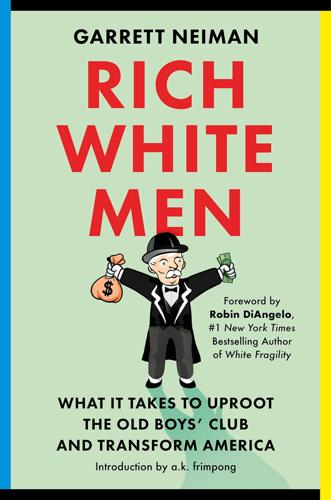
Rich White Men: What It Takes to Uproot the Old Boys' Club and Transform America
by
Garrett Neiman
Published 19 Jun 2023
Scott Trubey and Bill Torpy, “At Reynolds Plantation, a Vision Comes Together, Then Falls Apart,” May 25, 2011, Atlanta Journal-Constitution, https://www.ajc.com/lifestyles/home—garden/reynolds-plantation-vision-comes-together-then-falls-apart/LAJCmOBbXXJV0v893furWP/. 2. “Charles Murray,” Southern Poverty Law Center, accessed July 22, 2022, https://www.splcenter.org/fighting-hate/extremist-files/individual/charles-murray. 3. Ian Wilhelm, “Ripples from a Protest Past,” Chronicle of Higher Education, April 17, 2016, https://www.chronicle.com/article/ripples-from-a-protest-past/. 4. “Ed Whitfield,” Community-Wealth.org, January 14, 2015, https://community-wealth.org/content/ed-whitfield. 5.
…
Murray is an academic sociologist whom the Southern Poverty Law Center has labeled a white nationalist for wielding racist pseudoscience and misleading statistics to argue that genetic inferiority explains the plight of marginalized communities.2 According to Murray, wealth and social power naturally accrue to a “cognitive elite” made up of high-IQ individuals—who are overwhelmingly rich, white, and male—while those on the lower end of the bell curve form an “underclass” crippled by their low intelligence. “The United States is on a trend to becoming more race blind in its policies,” Ernie insisted. “I think that’s the right thing.” It was a troubling exchange. While I had presumed that most white people drawn to criminal justice reform aimed to combat racial injustice, Ernie didn’t seem to think systemic racism was a problem.
…
So I was curious to get his perspective about the role of race in American inequality. I thought we’d have a lively exchange. However, he seemed taken aback when I asked, as if the question didn’t even warrant discussion. “I don’t think race is the divider today,” Ernie told me. “It’s socioeconomic. I agree with Charles Murray’s argument that it’s a wealthy-versus-middle-class divide.” I was surprised, and disturbed, that Ernie had relied on Murray’s analysis. Murray is an academic sociologist whom the Southern Poverty Law Center has labeled a white nationalist for wielding racist pseudoscience and misleading statistics to argue that genetic inferiority explains the plight of marginalized communities.2 According to Murray, wealth and social power naturally accrue to a “cognitive elite” made up of high-IQ individuals—who are overwhelmingly rich, white, and male—while those on the lower end of the bell curve form an “underclass” crippled by their low intelligence.
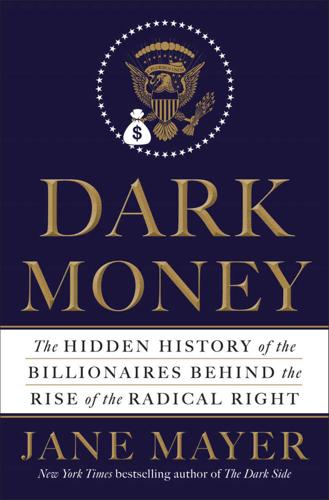
Dark Money: The Hidden History of the Billionaires Behind the Rise of the Radical Right
by
Jane Mayer
Published 19 Jan 2016
“Typically, it was not just the same university but the same department, and in some cases, the same scholar,” Bruce Murphy wrote in Milwaukee Magazine, charging that this led to a kind of “intellectual cronyism.” The anointed scholars were good ideological warriors but “rarely great scholars,” he wrote. For instance, Joyce stuck with Murray in the face of growing controversy over his 1994 book, The Bell Curve, which correlated race and low IQ scores to argue that blacks were less likely than whites to join the “cognitive elite,” and was loudly and convincingly discredited. The Manhattan Institute fired Murray over the controversial project. “They didn’t want the grief,” says Murray. But Joyce reportedly kept an estimated $1 million in grants flowing to Murray, who decamped to the American Enterprise Institute.
…
At least two-thirds: According to James Barnes, “Banker with a Cause,” National Journal, March 6, 1993, 564–65, well over two-thirds of the $20 million that the Bradley Foundation doled out each year went to “conservative intellectual” support. Continuing the strategic emphasis: Katherine M. Skiba, “Bradley Philanthropy,” Milwaukee Journal Sentinel, Sept. 17, 1995. “Typically, it was not just”: According to Bruce Murphy, Joyce spent $1 million subsidizing Murray’s writing of The Bell Curve. Murphy, “When We Were Soldier-Scholars,” Milwaukee Magazine, March 9, 2006. “the chief operating officer”: Neal Freeman, “The Godfather Retires,” National Review, April 18, 2001. “package for public consumption”: “The Bradley Foundation and the Art of (Intellectual) War,” Autumn 1999, was a twenty-page confidential memo prepared for the foundation’s November 1999 board meeting, a copy of which was obtained by the author.
…
Caught drinking off campus with some local girls in his senior year, in violation of Deerfield’s rules, he almost didn’t graduate. Scaife recalls that his parents hastily donated funds for a new dormitory for the school in order to assure his diploma. Years later, he would nonetheless help fund the social critic Charles Murray, a leading proponent of the theory that a superior work ethic and moral codes account for much of the success among the affluent. Despite having barely squeaked through prep school, Scaife was accepted at his father’s college, Yale, from which he was soon expelled following several drunken benders.

Chavs: The Demonization of the Working Class
by
Owen Jones
Published 14 Jul 2011
It certainly showcases some of the Tories' least constructive attitudes to working-class people. Many of the Tories' ideas about social inequality-such as blaming people for their circumstances-have a firmly Thatcherite pedigree. But they can also be traced back to a right-wing pseudo-political scientist, the American Charles Murray. Murray is perhaps most famous for his controversial (to say the least) 1994 book, The Bell Curve, which suggested that inherent racial differences had an impact on IQ levels. Like today's Tories, Murray claimed that family breakdown had triggered the rise of an 'underclass' in British society. He argued 'that the family in the dominant economic class-a-call it the upper middle class-s-is in better shape than most people think, and is likely to get better.
…
The Daily Express appeared to find no contradiction in claiming that 'we have bred feckless, lawless males who pass on to their own children the same mistakes' and, in another paragraph, that 'fatherlessness is the single most destructive factor in modern society'. It smacked of the arguments of US right-wing pseudo-sociologist Charles Murray, who claimed that rising illegitimacy among the 'lower classes' had produced a 'New Rabble'. This was classic demonizarion, reducing complex social problems to supposed individual failings and behavioural faults. Pervading the backlash was the talk of a 'feral underclass'. This was the idea of the Victorian 'undeserving poor' taken to a new level: the rioters and their families weren't just undeserving, they were barely human.

Fair Shot: Rethinking Inequality and How We Earn
by
Chris Hughes
Published 20 Feb 2018
I had read The New Republic off and on, mostly online, since college, but I did not have a deep appreciation for the historical moment that it was born into in 1914, or for the values of its founding editors. It had been acerbic and contrarian in its recent past, publishing shameful articles like Charles Murray’s “The Bell Curve” and cheerleading George W. Bush’s decision to invade Iraq. But for most of its history, I came to understand, it was more in line with values I shared. Confidently liberal and market-oriented, it pressed the need for a strong central government to guarantee the rights and freedoms that the Progressive Era—from which it had emerged—had fought for.

The Road to Ruin: The Global Elites' Secret Plan for the Next Financial Crisis
by
James Rickards
Published 15 Nov 2016
Regulators, knowing that the institutions used these models, also slept soundly. Lurking behind the models, however, was a colossal conceptual error: the belief that risk is randomly distributed and that each event has no bearing on the next event in a sequence. … Such systems are represented in the bell curve, which makes clear that events of the type we have witnessed lately are so statistically improbable as to be practically impossible. This is why markets are taken by surprise when they occur. But what if markets are not like coin tosses? … What if new events are profoundly affected by what went before?
…
The fatal flaw in equilibrium models is that the degree distribution of market price movements is assumed to be shaped in a bell curve, or so-called normal distribution. The difference between a bell curve system and the alternative power curve system is not just a dusty academic debate over the shapes of two curves. The curves themselves are merely graphical representations of what goes on in each system. The bell curve represents an equilibrium system with a mean-reverting nature. The power curve represents a complex system with an open-ended capacity for extreme events. Empirical data reveal that market prices and extreme events are distributed along a power curve. The normal distribution is a fantasy. Apple and the Cat General equilibrium, rational expectations, and efficient markets are not the only fallen pillars of the elite edifice.
…
It is more efficient for the state to pay the worker $30,000. The net to the worker is the same, and an inefficient pretense of private salaries and public taxation is eliminated. Schumpeter’s suggestion has found new life in policy proposals for a Basic Guaranteed Income championed in various forms by Bernie Sanders on the left and Charles Murray on the right. The expansion of food stamps, disability payments, Obamacare, Medicare, and the earned income credit are all forms of government income maintenance, evidence of a movement toward true socialism. Schumpeter said democracy was not an ideology in which the will of the people was fulfilled.

Our Kids: The American Dream in Crisis
by
Robert D. Putnam
Published 10 Mar 2015
Coleman et al., Equality of Educational Opportunity (Washington, DC: U.S. Department of Health, Education & Welfare, Office of Education, OE-38001, and supplement, 1966), 325; Gary Orfield and Susan E. Eaton, Dismantling Desegregation (New York: New Press, 1996); Claude S. Fischer et al., Inequality by Design: Cracking the Bell Curve Myth (Princeton: Princeton University Press, 1996); Richard D. Kahlenberg, “Economic School Integration,” in The End of Desegregation, eds. Stephen J. Caldas and Carl L. Bankston III (Hauppauge, NY: Nova Science, 2003), esp. 153–55; Russell W. Rumberger and Gregory J. Palardy, “Does Segregation Still Matter?
…
For emphasis on other “behavioral” explanations, including differences in sexual initiation, use of contraception, self-efficacy, and the ability to self-regulate, see England, McClintock, and Shafer, “Birth Control Use and Early, Unintended Births.” 54. For the argument that the pre-1996 welfare system encouraged family breakup, see Charles Murray, Losing Ground: American Social Policy, 1950–1980 (New York: Basic Books, 1984); National Research Council, Robert A. Moffitt, ed., Welfare, the Family, and Reproductive Behavior: Research Perspectives (Washington, DC: National Academies Press, 1998); and McLanahan and Percheski, “Family Structure and the Reproduction of Inequalities,” 263–64.
…
For a useful synthesis of approaches to the problem of the opportunity gap, see Lane Kenworthy, “It’s Hard to Make It in America: How the United States Stopped Being the Land of Opportunity,” Foreign Affairs 91 (November 2012): 103–9. I am especially indebted to Tom Sander for a thorough review of policy options to address the opportunity gap. 30. For a treatment of the growing class gap that often coincides with my account descriptively, but that offers a quite different diagnosis, see Charles Murray, Coming Apart: The State of White America, 1960–2010 (New York: Crown Forum, 2012). 31. For evidence of the powerful influence of religious communities on the attitudes and behavior of their members, see Robert D. Putnam and David E. Campbell, American Grace: How Religion Divides and Unites Us (New York: Simon & Schuster, 2010), especially chapter 13. 32.
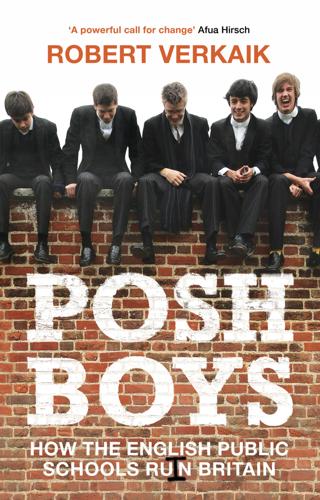
Posh Boys: How English Public Schools Ruin Britain
by
Robert Verkaik
Published 14 Apr 2018
But when anyone ceases to recognise the system that controls their lives they will look for ways to protest, undermine or abstain from the political life of the country. Segregated and divided societies are tinder boxes that can explode at the touch of a spark, as they did in the London riots of 2011. This violent social upheaval was presaged in the late 1980s by the American right-wing sociologist Charles Murray, famous for his controversial book The Bell Curve, who identified Britain’s own underclass. He found parallels with America’s excluded urban communities, pinpointing a surge in the number of families without resident fathers who relied on social benefits. Murray predicted that in British inner cities this would lead to communities adopting counter-culture value systems outside mainstream society.
…
INDEX Abbott, Diane 181 Abromovich, Roman 197 abuse 207–20, 254 Adams’ Grammar School 172–3, 184 Addrison, John 210 Adonis, Andrew 240–1, 333 Africa 53–4, 314–15 Ahmad, Muhammad 37, 38–9 Aitken, Jonathan 255 Aldridge, Sir Rod 318 Alexander, Danny 148 Alfred the Great, King 14 Allan, Tim 169 Alpha Plus 316–18 Ametistova, Ekaterina 200–1 Ampleforth College 219, 237, 250–1 Anderson, Bruce 146 Andersdon, Dr Eric 105, 106, 115, 137 Anne, HRH Princess 110 Anthony, Vivian 108–9 Apostles Club 306 aristocracy 18, 22, 28 Arkwright, Richard 32 Arnold, Matthew 66 Arnold, Thomas 31, 67 Aspinall, John 156 Asquith, Herbert 64 al-Assad, Bashar 128, 196, 202 Attlee, Clement 87, 88, 89, 99, 180 Augustine, St 13–14 Australia 283 Baddiel, David 263–5 Bailey, Mark 227 Balfour, Arthur 33 Ball, Peter 216–19 banking 295–9 Banks, Arron 163, 164, 165 Bannon, Steve 164, 282 Barrington, Robert 202 Barton, Laura 305 Barttelot, Sir Brian 38, 40–1 Barttelot, Maj Edmund Musgrave 38–40 Barttelot, Sir Walter 40–1, 60–1 Bash camps 212–13, 216 BBC 298–300 beatings 21, 30, 211, 213–14, 215 Beckett, Andy 304–5 Bedales 182–3 Beefsteak Club 291–2 Bellak, Benjamin 138 Benn, Melissa 255, 268, 323–4, 339 Benn, Tony 96–7, 174, 175, 176, 180, 255–6 Bennett, Alan 1, 336–7 Bentham, Jeremy 66 Berezovsky, Boris 199 Beveridge, William 89 Blackadder Goes Forth (TV show) 62 Blair, Tony 103–6, 107, 109, 111, 179, 180–1 Blunkett, David 106–8, 109, 111 Blunt, Anthony 133 Bo Xilai 198 Board of Education 68–9, 69 ‘Boarding School Syndrome’ 270–1 Boarding Schools Corporation 98 Boer War 40, 52–4 Bonar Law, Andrew 64 Borwick, Tom 165 Bracken, Brendan 85–6 Brexit 127, 151, 161–3, 164–70; see also Farage, Nigel Bridgeman, Luke 292–3 British Army 36, 40–2, 55–64, 72–3, 224, 225 British Empire 30, 32, 33–5, 36–7, 38–40, 42–3, 44–5 and Second World War 74–5 British Expeditionary Force (BEF) 52 Brodie, Stanley 116 Brooke, Rupert 62 Brook’s 291 Brooks, Charlie 147 Brougham, Henry 29 Brown, Gordon 107, 287 Bruce, Charles 136 Brunel, Isambard Kingdom 32 Bryant, Chris 128 Buchanan, Mike 119 Buffet, Warren 329 Bullingdon Club 137, 141–2, 306 bullying 271, 273 Burgess, Guy 133 bursaries 226–35, 321–2, 332 Butler, Rab 77, 78–9, 81, 82 Butler, Robin, Lord 193 Byers, Stephen 107–8 Cable, Vince 167 Caldicott prep school 209–10, 215, 219 Callaghan, James 99, 180 Cambridge Analytica (CA) 164–6 Cambridge, HRH Catherine, Duchess of 191 Cambridge Spy Ring 133 Cambridge University 1, 25 Cameron, David 6, 105, 133–8, 139, 140, 274 and ‘big society’ 313, 315 and Conservative Party 143, 144–8 and Eton 119, 190 and EU Referendum 127, 161, 162, 166–7, 169, 170 and government 148–54 and Oxford 141–2, 143 and psychology 271, 273 and Russia 132 camps 212–16 Canning, George 33 Card, Tim 61 Cardigan, James Brudenell, 7th Earl of 56 Carey, George, Lord 217 Carpenter, John 17 Carswell, Douglas 161 Cash, Bill 161 Castle House Preparatory School 172 Catling, Susan 95, 96 Chakrabarti, Shami 181–3 Chamberlain, Neville 72 chantry schools 15, 24, 26 Charitable Uses Act (1601) 109 Charities Act (2006) 114–16, 223 charity 17, 47, 88–9, 114–21, 341 and law 109–10, 111 Charles, HRH Prince of Wales 105, 110, 143, 216, 217, 283 Charterhouse School 19–20, 195–6, 233, 257 China 197–8, 200, 203, 204 Christianity 13–14, 15, 24, 215–16 and muscular 35–8, 44, 67, 211 church, the 2, 13–15, 24, 211–19 Churchill, Winston 40, 72, 74, 78, 84, 286 and Bracken 86 and Eden 91 and Harrow 33, 77, 82–3 City, the 4, 292–3, 295–7 City of London School 17, 181 Clarendon, George Villiers, 4th Earl of 48, 49–51 Clark, Alan 62 Clark, Ross 194 Clarke, Kenneth 146, 147 class 22, 65–6, 86–7, 95, 237–8, 315–16 and the army 55–6 and government 91–3 and grammar schools 67–8 and the media 298–300 classics 30–1 Clegg, Nick 147–8, 181, 209–10, 327–8 Clifford, Adm Sir Augustus 34 Clive, Robert 42–3 Comenius, John 27 comprehensive schools 94–5, 255–6 Conrad, Joseph 39–40 conscription 52–3 Conservative Party 69, 86, 90, 92, 99–100, 101–2 and Cameron 143, 144–8 Cook, Henry 169 Cooke, Alistair 143 Coombs, Mark 163 Corbet, Richard 23 Corbyn, Ben 178 Corbyn, Jeremy 17, 121, 171–5, 176–80, 186, 314 Corbyn, Sebastian 178 corporal punishment 21 Cranmer, Thomas 11–12, 14 Crawford, David Lindsay, 27th Earl of 59–60 Crimean War 56 Cromwell, Oliver 27 Crosland, Anthony 95–6, 97, 255 Cruz, Ted 164 Cumberbatch, Benedict 252 Cummings, Dominic 165–6 Cust, Sir Lionel Henry 222 Czerin, Peter 144 Dacre, Paul 147 Daffarn, Edward 318 Dalton, Hugh 180 Damasio, Antonio 276 D’Ancona, Matthew 144 Darwin, Charles 30–1 Davidson, Jim 261–3, 266–7 Davison, Dick 108 De Carvalho, Alexander 168–9 De Freitas, Geoffrey 89 Deakin, Chloe 157, 158 Dean, Victoria 169 Debrett’s 289 Derham, Patrick 120 Dimbleby, David 149, 251 Disraeli, Benjamin 42 Doggart, Simon 215 donations 228–9 Dorries, Nadine 250–1 Dowding, Hugh 83 Duff, Grant 47–9, 50 Duffell, Nick 271, 272–3, 276–7, 284 Dulwich College 90, 156–61, 181–2, 192, 248, 330–1 and overseas franchises 203, 204 and sponsorships 239–42 Duncan, Alan 167 Eden, Anthony 64, 90–2 Edinburgh Academy 47 Edmiston, Robert, Lord 163 education 11–12, 13–15, 27, 321–4, 327–9 and Ragged Schools 37 and reforms 65–6 and rights 337–8 and Scotland 43–4 see also grammar schools; public schools; state schools Education Acts: 1902: 69 1918: 65 1944: 82, 87, 93 Education Review Group 117 Edward III, King 16 Edward IV, King 26 11-plus exam 82, 93 Elizabeth I, Queen 18, 19 Elizabeth II, Queen 133 Elliott, Matthew 165 Emms, David 157 employment 341–3 End of the ‘Old School Tie’, The (Worsley) 75–6 Endowed Schools Commission 50 English Civil War 27 entry requirements 18–19 Establishment, the 125–6 Eton College 3, 17, 19, 22, 204, 278–9 and admission 189–90 and alumni 33, 140–1 and bursaries 228–9, 230 and Cameron 119, 136–8, 140 and charity 99, 115, 221–3, 235–6 and Eden 91, 92 and exams 257 and fees 113, 188–9, 227 and foundation boys 50 and Goldsmith 155 and government 134 and grants 238 and international students 198–9 and Leggatt 293 and masters 46–7 and Oxbridge 25, 301 and poor boys 28–9 and Putin 127–32 and reforms 26–7 and Rifles 52, 53, 59 and sponsorships 242 and sport 35 and town 187–8 and Wellington 33, 41–2 see also Old Etonians EU Referendum 127, 150–1, 161–3, 164–70 Evans, Chris 298–9 exams 82, 93, 257, 267–8 Fabian Society 180 fagging 22, 29, 98, 104 faith schools 180–1 Fallon, Michael 62 Faraday, Michael 32 Farage, Nigel 156–9, 160–1, 162, 163, 167, 169, 248 and the establishment 283 and psychology 273 and Trump 282 Farr, Clarissa 278 Farron, Tim 153 fascism 157, 158 federations 238 fees 13, 19, 67, 69, 111–13, 194 and Eton 188–9 and subsidies 221–2, 224–35, 245–9 and university 260–1 Fettes College 103–6, 211 Finkelstein, Daniel 146 Finland 268, 344 First World War 54–64, 65–6 Fisher, Herbert 68–9 Fleming, David Pinkerton, Lord 79–81, 90 Fletcher, David 200, 201 Fletcher, Frank 68, 69 Foot, Michael 106, 180 Fox, Edward 156 Fox, Laurence 252–3 France 268–9 Fraser, Giles 211, 216 free scholars 16, 17, 18, 23, 50–1 Freemasons 193 French, John 61 French Revolution 28 Freud, Matthew 147 Gaitskell, Hugh 180 Galsworthy, John 66–7 Gascoigne, Michael 104 Gates, Bill 329 Geelong Grammar School 283 GEMS Education 111, 113–14, 204–6 gender pay gap 298, 299 gentlemen’s clubs 143–4, 169, 291–2 Germany 196, 268–9, 344 Ghosh, Helen 149 Gibb, Dame Moira 217, 218 Gill, Ameet 168 Girls’ Public Days School Trust 68 girls’ schools 229 Girls’ Schools Association 108 Gladstone, William 33, 37, 48 Goldsmith, James 155–6 Goodall, Lewis 298–9 Goodhart, David 320–1 Gordon, Gen Charles 36–8, 53 Gordonstoun 110, 211 Goschen, Giles, Viscount 135–6 Gove, Michael 144, 149, 161, 282, 322 and Brexit 166, 168 and psychology 273 and sponsorships 238 and subsidies 247–9 government 4–5, 6, 148–54 Gracie, Carrie 298 grammar schools 14, 15, 24, 30, 44, 56–7 and grants 93–4, 100–1 and Labour 183–5 and reforms 49–50, 67–8 Granville, Granville George Leveson-Gower, 2nd Earl of 48 Gray, Herbert Branston 45 Grayling, Chris 161 Great Depression 69–70 Green, Francis 307 Green, Michael 145 Greenwood, David 208, 219 Gregory, Pope 13 Grenfell Tower 316, 317–19 Greville, Fulke 22 Guppy, Darius 289–90 Guru-Murthy, Krishnan 234–5 Haberdashers’ Aske’s 263–5, 300 Haig, Gen Douglas 61 Haileybury College 88, 89 Haldane, Richard Burdon 53 Halfon, Robert 249, 311, 333, 336 Halls, Andrew 194 Hammond, Richard 67 Hancock, Matt 342 Hannan, Daniel 161 Hanson, David 219 Harding, David 163, 168 Hardman, Robert 144 Hargreaves, Peter 163 Harman, Harriet 181 Harrison, Rupert 144, 153, 275 Harrow School 17, 23, 24, 29, 31–2, 68 and alumni 33, 34, 252–3 and bursaries 233–4 and Churchill 83 and foundation boys 50 and overseas franchises 203 and soldiers 52, 53 Hart, Basil Liddel 62 Hasan, Mehdi 327 Hastings, Max 277 Hastings, Warren 43 Haynes, Tim 227 Headmasters’ and Headmistresses’ Conference (HMC) 51, 119 Healey, Denis 175, 176 Heart of Darkness (Conrad) 39–40 Heath, Edward 99, 287 Heath, Lt Gen Sir Lewis ‘Piggy’ Macclesfield 74 Heatherdown 135–6 Henderson, Simon 235 Hendon County Grammar School 183–5 Henry, Hugh 210 Henry VI, King 19, 26, 221, 301 Henry VIII, King 18, 26 Henty, G.A. 53 Heseltine, Michael 145, 167 Higgins, Matthew James 46–7 Hillman, Nick 99, 100, 255, 302–3 Hilton, Steve 144, 153 Hitler, Adolf 3, 73 Hobsbawm, Eric 34 Hoey, Kate 161 Hogg, Charlotte 295–6 Hogg, Dame Mary 294 Hogg, Douglas 294–5 Hogg, Quintin 97, 294, 295 Hogg, Sarah 294–5 Holle, Arnold 196 homosexuality 35–6 Hong Chin 201 Hosking, Jeremy 163 Howard, Adam 283–4 Howard, Michael 146 Howard, Nicholas 152 Howe, Geoffrey 101–2 Howell, Steve 183–5 Hughes, Billy 90 Hughes, Thomas 35 Huhne, Chris 148 Hunt, Jeremy 271, 273 Hurtwood House 225 Hutton, Will 274 Huxley, Thomas 66 Ibori, James 201 immigration 156, 157, 162, 168, 264 imperialism 33–4, 53–4; see also British Empire Independent Inquiry into Child Abuse 210–11 Independent Schools Council (ISC) 110, 113, 116, 120, 288, 325–7 and charity 223, 224, 226 and sponsorships 238 India 42–3, 53 industrial revolution 32 inequality 306–12, 314–16, 321–4, 327–9 initiation ceremonies 21 international students 196–202 internships 341–2 Iremonger, William 91 Itoje, Maro 234 Iwerne Trust 212, 214 Jameson, James Sligo 39 Japan 73–4 Jardine, Cassandra 94–5 Johnson, Boris 6, 31, 128, 142, 150–1, 272 and Brexit 162, 166, 167, 168, 169 and bursaries 321–2 and the Establishment 125–6 and Eton 136, 190 and Guppy 289–90 and psychology 271, 273, 276–7 Johnson, Jo 149 Johnson, Stanley 292 Jones, Owen 274–5, 328 Jonson, Ben 23 journalism 274–5, 297–8 Journey’s End (Sherriff) 58 judiciary 5, 292–3 Keir Hardie, James 180 Kensington Aldridge Academy (KAA) 318–19 KGB 132, 133 King Edward’s School 68, 93–4 Kingston Grammar School 56, 57 Kinnock, Neil 180 Kipling, Rudyard 53, 64 Kitchener, Gen Herbert 54–5, 57 Korski, Daniel 168–9 Kynaston, David 328–9, 337 Labour Party 6, 69, 86–8, 99, 100–1 and Corbyn 171, 174–5, 176–80 and education 180–6, 328–9 see also New Labour Lammy, David 303–4, 343 Lamont, Norman 143, 145 Lampl, Sir Peter 116 Landale, James 150 language 20–1, 277 Lansman, Jon 175–6, 178–9 Lansman, Max 178 Latin 14, 30 Laws, David 148 Leach, Arthur 14, 27 Leach, Sir John 109–10 league tables 267–8 Leanders, Rocky 214–15 Leather, Suzi 114–15, 117 Leggatt, George 292–3 Lenon, Barnaby 226–7, 228, 233–4, 258–61, 279, 303, 325–7 Leonard, Richard 186 Leslie, Chris 179 Letwin, Oliver 148, 149, 271 Levellers 27 Lewis, Sir George 48–9 Li Wei Gao 201 Liddle, Rod 299–300 Lineker, Gary 195, 298–9 literacy 14, 15, 43 Little, Steven 231–2 Little, Tony 190, 193–4, 198, 199, 205–6, 278–9 and assisted places 226, 230, 235 and parents 256 Litvinenko, Alexander 128 Livingstone, David 43, 44 Llewellyn, Ed 144, 148, 152 Lloyd George, David 65 local education authorities (LEAs) 80–1, 89–90, 98 Lockwood, Chris 144 London 316–19, 334; see also City, the London Oratory 180–1 Loom of Youth, The (Waugh) 63, 70 Lyon, John 17 Macdonald, Ramsay 180 McDonnell, John 174–5, 178–9, 186 McGovern, Steph 298 McKenna, Alison 116 Maclean, Donald 133 Macmillan, Harold 92 McNeil, Rosamund 120 Madders, Justin 185, 311–12 Made in Chelsea (TV show) 325 Magnitsky, Sergei 128 Major, John 321 Major, Lee Elliott 305 Mallinckrodt, Edward 135 Manchester Grammar School 27–8, 68 Mandelson, Peter 88, 183 Marathon Asset Management 292–3 Marlborough College 52, 55, 79, 192, 232 Marshall, Patrick 209 Marshall, Sir Paul 167–8 Marxism 177–8 Mason, A.E.W. 53 Masonic lodges 145, 193 May, Theresa 69, 118–19, 121, 127, 129 and internships 341–2 and ‘shared society’ 313–14, 322–3 and sponsorships 243 Meacher, Michael 176 media 297–300 Mercer, Robert 163, 164 Merchant Taylors’ School 17, 21, 28, 42–3, 140, 300–1 Merivale, Charles 22–3 Middleton, Kate, see Cambridge, Duchess of Milburn, Alan 315, 336 Military Cross 59 Millar, Fiona 109, 185–6, 324 Millfield School 247–8 Milne, Seumas 17, 177–9 Milton, John 27 Mitchell, Andrew 237, 271 Momentum 175–7, 178–9 monasteries 14, 15, 18, 24, 25, 26–7 money-laundering 201–2 Montgomery, Bernard 83 Moore, Thomas 42 morality 273–4 Morrison, Herbert 88 Mosley, Oswald 143, 158, 159 Mount, Ferdinand 139, 143 Mount, Harry 328 Mulcaster, Richard 20 Mumsnet 258 Murdoch, Rupert 147, 282–3 Murray, Andrew 178–9 Murray, Charles 334 Murray, Laura 178 Nash, Eric ‘Bash’ 212–13 Nash, Paul 62 National Front 157, 158 Neile, Richard 23 Nelson, Lord Horatio 44 New Labour 105, 106–7, 111 New York Military Academy (NYMA) 280–2 Newbolt, Sir Henry 55 Newmark, Brooks 292 Newsom, Sir John 97, 246 Newsome, David 273 newspapers 46–7, 297–8 Nix, Alexander 164, 165 non-cognitive skills 276 North Foreland Lodge 110 north–south divide 310–11 Norwood, Cyril 67, 70 Notting Hill Prep 316–18 Nyachuru, Guide 215 Oakes, Alex 163, 164 Oakes, Nigel 163–4 O’Brien, James 237, 250–1 Odey, Crispin 163, 167, 193 O’Dowda, Brendan 198 Office of Fair Trading (OFT) 112, 113 Officer Training Corps (OTC) 52, 53, 55, 62 old boys’ networks 21–2, 289–91 Old Etonians (OEs) 136, 140–1, 149, 192, 224, 228–9 Oldfield, Bruce 68 oligarchs 129–30, 140, 194, 197, 199, 202 Olympic Games 36 Onyeama, Dillibe 254 Operation Winthorpe 209 Organ, Bill 111–12 Orwell, George 3, 74, 76, 77, 254 and democracy 286, 309 Osborne, George 6, 144, 146, 147, 148, 153 and Brexit 162 and politics 274–5 and psychology 273 overseas franchises 202–6, 329 Oxbridge 1–2, 5, 264–5, 279, 300–6, 342–3; see also Cambridge University; Oxford University Oxford University 2, 16, 17, 18, 25, 107 and Cameron 141–2 and Union 125–6 Pakenham, Frank 180 Palmerston, Lord 33, 48 parents 194–6, 251–6, 257–8, 261–3, 265–7 and failure 278 and rights 337–8 Parker, Peter 62–3 Parris, Matthew 306, 314–15 Pasha, Emin 39 Patel, Priti 162 Patrick, Andrew 277 Paxman, Jeremy 223–4, 273 pay 298–9, 306–7 Peasants’ Revolt 16 Peat, Sir Michael 205 Peel, Robert 33 Percival, Arthur Ernest 73–4 Perry, Tom 210 Philby, Kim 133 Piers Gaveston Club 137, 141, 142–3 Pitt the Elder, William 28 Plato 313 Pleming, Richard 195 politics 91–3, 271–3, 274–5, 303–5; see also Conservative Party; government; Labour Party poor, the 16–17, 19–20, 22, 24, 28–9 and subsidised places 221–2, 224–7 Portillo, Michael 146 Portland Communications 169 ‘posh bashing’ 252–3 Powell, Enoch 93, 156–7 Powell, Hugh 138–40 prefects 21 Price, Leolin 115–16 Priestley, J.B. 76–7 private education, see public schools Profumo, John 92 property 310 psychology 270–3, 275–7 Public School Lodges’ Council 145, 193 public schools 2–7, 66–7, 258–61, 286–9, 324–5 and abolition 336–44 and abuse 207–20 and actors 252–3 and alumni 1–2, 140 and assisted places 87–8, 90, 101, 321–2, 329–33 and beginnings 15–20 and Brexit 161–2, 163, 165–6, 167, 170 and British Empire 33–4, 41, 42–3, 44–5 and business rates 243–4 and charity 88–9, 107–11, 114–21, 221–35 and class 22–4 and criticism 46–7 and demand 70–1 and entitlement 283–5 and espionage 132–3 and Europe 268–9 and facilities 193–4 and fees 111–14, 245–9 and funding 68–70 and government 91–3 and inequality 306–9 and international students 196–202 and Labour Party 180–3, 185–6 and London 316–18 and the media 297–300 and networks 21–2, 191–3, 289–91 and overseas franchises 202–6 and Oxbridge 300–6 and parents 194–6, 251–2, 253–6, 257–8, 261–3, 265–7 and psychology 270–3, 275–7 and reforms 25–7, 29–32, 47–51, 79–82, 95–100 and revolts 27–9 and Second World War 75–9 and slang 20–1 and society 334–6 and soldiers 52–64 and state schools 236–43, 326–7 Public Schools Act (1868) 51 Public Schools Commission 97–100 Puritans 27 Putin, Vladimir 127–32, 133, 154 Pyper, Mark 110 Queen’s Scholarship 19 Raab, Dominic 322 racism 156, 157, 162 Rae, John 101, 274, 302 Ragged School movement 29, 37, 38 Ranger, Terence 34 Rawls, John 5 Ray, Christopher 115 Reay, Diane 268, 269, 284–5, 335 Reckless, Mark 161 Redwood, John 161 Rees-Mogg, Jacob 31, 154, 161, 193, 251, 282 Referendum Party 155, 156 Reform Act (1832) 47 Reformation, the 26 Remain Vote 162, 163, 166, 168 Renton, Alex 219–20, 254 Repton School 302–3 Reznikov, Peter 131 Rhodes, Cecil 33, 43 Rich, Richard 11–12, 14 Richards, Amy 169 Richardson, Ed 197 Ripon Grammar School 67–8 Roberts, Frederick, Field Marshal Lord 52–3 Rock, Patrick 151–2 Roman Empire 13 Romilly, Peter 135 Rooney, Wayne 191 Rothermere, Jonathan Harmsworth, Lord 147 royal family 133, 134 Royal Military Academy Sandhurst 36, 38, 40, 56 Royal Military Academy Woolwich 36, 56 Royal Navy 44, 73 rugby 35 Rugby School 28, 31, 52, 53, 73 Ruskin, John 66 Russia 127–34, 139–40, 199–200, 202 Ruston, Mark 214 Sainsbury, David 163 St Paul’s School 14, 17, 18, 209, 227 Sandel, Michael J. 315–16 Sandhurst, see Royal Military Academy Sandhurst Sansom-Mallett, David 209 Sassoon, Siegfried 62 Sawar, Anas 186 Schaverien, Joy 270–1 Schellenberg, Walter Friedrich 3 Schneider, James 17, 177 scholarships 226–8, 240 School Teachers Superannuation Act (1918) 68 science 30 Scotland 43–4, 47, 186, 211, 341 Second World War 3, 40–1, 72–9, 82–4, 86–7 secondary schools 82, 90, 94–5 Sedbergh School 85 segregation 316 Seldon, Sir Anthony 192, 230, 242, 261, 331–3 serfdom 15 Sevenoaks School 111–12 sexual assault 207–20 Shaw, George Bernard 66 Shawcross, Hartley 99 Shawcross, William 117 Sherborne School 55, 70 Sherriff, Robert 56–7, 58 Shevkunov, Father Tikhon 130–1 Shrewsbury School 21–2, 30, 58 Shrosbree, Colin 31 Sidney, Sir Philip 21–2 Singapore 73–5 Sked, Alan 155 Smith, Ian Duncan 146, 161 Smith, Zadie 328 Smyth, John 211–12, 213–15, 216, 219 Soames, Nicholas 167 social media 165, 166 social mobility 93–4, 196, 311, 315, 321–2, 330–3 and Commission 336 socialism 86–7, 88, 95–6, 177–8 Socrates 313 song schools 14, 15 Spence, Dr Joseph 159, 160, 204, 241–2, 330–1 Spencer, Charles, 9th Earl 317 Spencer, Herbert 66 Spender, Stephen 70 Spielman, Amanda 252 spies 132–3 sponsorships 238–43 sport 20, 35–6, 233–4, 236–8 Stanley, Henry Morton 39, 40 Starkie, James 169 state schools 2, 6, 68, 83–4, 149, 318–20 and business rates 244 and Europe 268–9 and exams 257 and funds 265, 267 and Oxbridge 301–2 and parents 255–6 and public schools 120, 236–43, 326–7 Stephenson, George 32 Stephenson, Paul 168 Stewart, Rory 292 Stoics Club 142 Stowe School 233 Strachey, Lytton 38 Strategic Communication Laboratories (SCL) 164 Sudan 37, 38–40 Suez Crisis 91–2 super-rich 196–7 Sutton, Thomas 19, 233 Sutton Trust 116, 287, 296, 297, 303 Sweden 344 Taunton Commission 50 Tawney, R.H. 66, 89 taxation 243, 244–7, 248–9, 338–9; see also VAT teachers 257, 340 Thatcher, Margaret 93, 100, 101–2, 136, 138–9, 323 Thorn, John 213, 214 Timothy, Nick 121, 326 Titus Trust 215–16 Tom Brown’s School Days (Hughes) 35 Trades Union Congress 81 Transparency International 201–2 Trump, Donald 127, 163, 164, 280–2, 329 Turner, Andrew 233 Uber 151 UK Independence Party (UKIP) 155, 156, 157, 161 Ukraine 127, 128, 139–40 Ummuna, Chuka 179 United States of America 84, 164, 229, 280–2, 329 universities 260–1, 306, 308, 342–3; see also Oxbridge Utley, Tom 265–6 Vaizey, Ed 99 VAT (value added tax) 69, 107, 121, 183, 243, 247 Vereker, John 72–3 Victoria Cross (VC) 58–9 Villiers, Barbara 91 Villiers, Theresa 161–2 Viner, Katharine 67 Vote Leave 161–3, 164–6, 167–8 Vunipola, Billy 234 Wade, Rebekah 147 Waldegrave, William 342 Wang Sicong 198 Warre, Edmond 53 Warre-Dymond, Capt Godfrey 58 Warren, Justice 116 Wasserman, Gordon, Lord 102 Waterloo, Battle of 33, 42 Watson, Andrew 213 Waugh, Alec 55, 58, 59, 63, 67, 70, 254 wealth gap 309–10 Webb, Sidney 66 Welby, Justin, Archbishiop of Canterbury 79, 193, 212, 214, 216 Weller, Paul 136, 251–2 Wellington, Arthur Wellesley, Duke of 33, 41–2, 53 Wellington College 242 Westminster, Gerald Grosvenor, 6th Duke of 254 Westminster School 17, 18–19, 23, 43, 204 and Oxbridge 300, 302 Whetstone, Rachel 144, 145 Whitehouse, Mary 212 White’s 143–4, 169 Whittingdale, John 161, 177 Who’s Who 289, 292 Wilkinson, Ellen 87–8, 90 Willetts, David 93–4, 307–8 Wilshaw, Sir Michael 120, 205, 240, 340 Wilson, Harold 25, 95, 99, 180, 287 Winchester College 15–17, 23, 28, 81, 257 and abuse 212–14, 215 and bursaries 229, 230–2 and fees 111–12, 113 and international students 199–200 and Oxford 25, 301 and soldiers 52, 53 Witheridge, Rev.
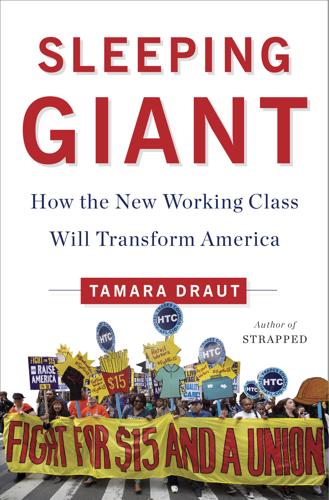
Sleeping Giant: How the New Working Class Will Transform America
by
Tamara Draut
Published 4 Apr 2016
Because Moynihan was a liberal and a Democrat, his report mainstreamed the idea that cultural breakdown causes poverty. Our social, cultural, and economic norms have long been set by the white upper-middle class, with any failure to conform to those norms seen as deviant. In 2014, Charles Murray, well known for his infamous book The Bell Curve, which argued that blacks were genetically intellectually inferior to whites, broadened Moynihan’s analysis to the white working class. In Coming Apart, Murray bemoans a white working class that has seemingly lost the hunger to work and is now engaging in all manner of activities similar to those of the “black underclass”: illegitimacy, crime, and drug use.
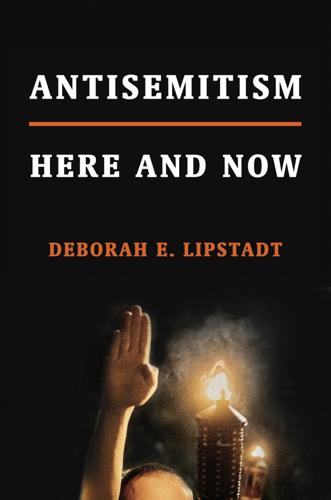
Antisemitism: Here and Now
by
Deborah E. Lipstadt
Published 29 Jan 2019
He and his wife resigned their faculty positions in September of that year and left the area.9 There are, however, times when university administrations take the necessary and appropriate action in these situations. In 2017, the American Enterprise Club, a conservative student group at Middlebury College, invited Charles Murray to speak on campus. His controversial 1994 book, The Bell Curve, implied that innate intelligence differences between the races, rather than discrimination, explained the disparity in the socioeconomic achievements of blacks and whites in America. When the book was published many people objected, myself included, to its implied racism.

Rise of the Robots: Technology and the Threat of a Jobless Future
by
Martin Ford
Published 4 May 2015
The combined population of India and China amounts to roughly 2.6 billion people—or over eight times the population of the United States. The top 5 percent in terms of cognitive ability amounts to about 130 million people—or over 40 percent of the entire US population. In other words, the inescapable reality of the bell-curve distribution stipulates that there are far more very smart people in India and China than in the United States. That will not necessarily be a cause for concern, of course, as long as the domestic economies in those countries are capable of creating opportunities for all those smart workers. The evidence so far, however, suggests otherwise.
…
Active income like wages from a job, self-employment income, or earnings from a small business either would not be means-tested at all or would occur at a much higher level. This should ensure a consistent incentive for everyone to work as hard as possible, given the opportunities available. A guaranteed income scheme would also be likely to create a number of more subtle incentives for both individuals and families. Conservative social scientist Charles Murray’s 2006 book In Our Hands: A Plan to Replace the Welfare State argues that a guaranteed income would be likely to make non-college-educated men more attractive marriage partners. This group has been the hardest hit by the impact of both technology and factory offshoring on the job market. A guaranteed income might help increase marriage rates among lower-income groups, while helping to reverse the trend toward more children being raised in single-parent households.
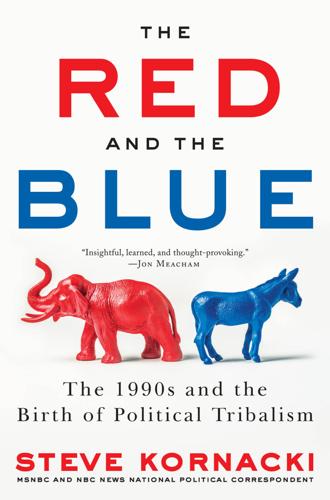
The Red and the Blue: The 1990s and the Birth of Political Tribalism
by
Steve Kornacki
Published 1 Oct 2018
Its organizers were all on Team Newt: the Heritage Foundation, a twenty-one-year-old conservative think tank that had provided grist for Gingrich’s Contract with America; and Empower America, an activist group launched the previous year by a trio of Gingrich allies. They’d lined up a murderers’ row of right-of-center attractions. William Bennett, the former education secretary and drug czar whose Book of Virtues had now been on the bestseller list for a year, would be speaking. So would Charles Murray, the conservative social scientist whose new tome, The Bell Curve, was stirring controversy with its exploration of the distribution of intelligence in American society. And Jeane Kirkpatrick, the Reagan-era U.N. ambassador who’d famously dubbed Democrats the “Blame America First” party. And Jack Kemp, and Ralph Reed of the Christian Coalition, and Paul Gigot from the Wall Street Journal, and on and on.
…
X., 158 Kemp, Jack, 32, 290 Kennedy, John F., 210 Kennedy, Ted, 52, 281, 318 Kerrey, Bob Clinton stimulus package, 239 election of 1992, 87, 90, 129, 139, 201 on election of 1994, 287 first Clinton budget, 246 Kilborn, Craig, 372 King, Coretta Scott, 55 King, Larry, 163–164, 165–166, 172, 199, 331, 411 King, Peter, 354 Kinsley, Michael, 155 Kirkpatrick, Jeane, 290 Koch, Ed, 17, 60–61, 99 Koppel, Ted, 117, 128–129, 383 Koresh, David, 311 Kramer, Marcia, 141 Kroft, Steve, 118–121 Kyl, John, 281 labor, 20, 136, 140 LaPierre, Wayne, 312 Largent, Steve, 354–355 Larry King Live, 163–164, 165–166, 331 Lauer, Matt, 368 Lazio, Rick, 417 Leach, Jim, 260, 355 Leavitt, Mike, 401 Lehrer, Jim, 205, 366–367 Leno, Jay, 368 Letterman, David, 422 Lewinsky, Monica, 364–376, 377–378 Lewis, Anthony, 253, 294–295 Lewis, Jerry, 77, 109–110 Lewis, John, 318, 344 liberalism backlash of “silent majority,” 33 Cuomo’s as old-style, 17–19, 21 domination of Washington since Roosevelt, Franklin D., 33 Lieberman, Joe, 373–374, 376, 418 Limbaugh, Rush, 261, 280, 291–292, 311, 375, 416 Livingston, Bob, 393, 394–395 Los Angeles Times, 65, 70, 121, 199, 248, 273, 320, 413 Lott, Trent, 39–40, 74 Lugar, Richard, 196 Lungren, Dan, 390–391 Luntz, Frank, 383 Mack, John, 70, 71 Madigan, Edward R., 77–78 Madison Guaranty, inquiry into, 256, 259, 260 The Man from Hope (television program), 210 Margolies-Mezvinsky, Marjorie, 244–245, 282 Marino, John, 93–94, 95–96, 98 Martin, Lynn, 77 McCain, John, 227, 404, 409, 415–416 McCarthy, Carolyn, 243 McCloskey, Frank, 42–43 McCurdy, Dave, 279 McCurry, Mike, 322 McDermott, Jim, 270 McDougal, James, 251, 257, 258 McDougal, Susan, 251 McGovern, George, 25, 29 McGrory, Mary, 21, 36, 66, 87, 256, 302–303 McInturff, Bill, 269 McIntyre, Richard, 42–43 McLaughlin, John, 151 The McLaughlin Group, 151 McVeigh, Timothy, 309–310, 311 Medicare, 315–319, 321–323, 325, 344, 350 Meet the Press, 295, 319, 412 Melendez, “Stuttering John,” 122 Metzenbaum, Howard, 86, 218, 279 Mfume, Kweisi, 298 Miami Herald, 50 Michel, Robert Bush taxes and, 104, 109, 214 characteristics, 34–35 Clinton taxes and, 242 elected Republican House leader, 74 election of 1984 in Bloody eight, 43–44 Gingrich and, 68, 74–76, 78–79, 249 O’Neill and, 41, 65 retirement, 248–249 taxes and, 237 Mills, David, 179 Minge, David, 245 Mintz, John, 169 Mitchell, George Bush taxes and, 103, 109 election of 1992 and, 82 health care reform and, 272, 273 lobbying reform bill and, 266 retirement, 279 Mitchell, Henry, 11 Mixner, David, 220–221 Moakley, Joe, 39–40 Mondale, Walter, 9, 20, 26, 55, 178 Moore, Carlos, 67 Moorer, Thomas, 223 Morris, Dick, 308, 348 Morton, Bruce, 281 Moynihan, Daniel Patrick, 99, 258, 303, 344, 392 Murray, Charles, 290 Murray, Patty, 391 Murtha, John P., 111 Myers, Dee Dee, 252 Nachman, Jerry, 115 Nader, Ralph, 421 NAFTA, 136 Nagourney, Adam, 89 National Gay and Lesbian Task Force, 221 National Rifle Association (NRA), 312–313, 399, 412 New Hampshire election of 1988, 54, 58 election of 1992, 95, 113–114, 117, 121, 125, 129, 131–133, 152, 155, 156–157 New Orleans Declaration (DLC), 85–86 The New Republic, 186–187 New York, election of 1992, 140 New York Daily News, 141, 325, 387, 410 New York Post, 98, 115 New York Times, 41, 47, 57, 59, 69, 70, 81, 93, 110, 113, 133, 146, 167, 185, 196, 215, 216, 217, 223, 224–225, 227, 238, 257, 259–260, 264, 270, 275, 288, 294–295, 361, 367, 372, 373, 377, 385–386, 392, 414–415 New York Times Magazine, 66 Newsday, 258 Newsweek, 364, 403–404 Nichols, Larry, 114–115 Nichols, Terry, 309–310 Nightline, 117, 128–129 Nixon, Richard Buchanan and, 149–150 Bush taxes and, 110 election of 1972, 29 impeachment hearings, 379 pardoning of, 30 on Perot, 162–163 “silent majority” and, 33 Vietnam War draft and, 125 North, Oliver, 340 Nunn, Sam background, 47 election of 1988, 47–48 election of 1992, 82 first Clinton budget, 246 homosexuals in armed forces, 226, 228, 229 reason for Democratic Leadership Council, 46 Nussbaum, Bernard, 256–257, 261 Nyhan, David, 137, 139 Oakar, Mary Rose, 67 Obey, David, 316 Oklahoma City bombing, 309–310, 311 O’Neill, Tip C-SPAN and, 37 described, 65 Diggs and, 34 retirement, 65–66 showdown with Gingrich and rebuke of, 38–41 on Wright, 72 Operation Desert Storm (Gulf War), 80, 81, 82, 84–85, 91, 137–138, 147–148 Page, Susan, 258 Panetta, Leon, 296, 305 Pappas, Mike, 391 Pataki, George E., 277–278, 402 PBS NewsHour, 366–367 Pelosi, Nancy, 93, 356, 369, 378 Permanent Democratic Congress, 33, 34, 70, 102, 105, 207, 211, 234, 280 Perot, Henry Ross African Americans and, 190 background, 163–164, 165, 170 campaign suspension, 191 characteristics, 168–169 debates, 200–203, 331 election of 1992, 162–163, 167, 169–171, 186–187, 189, 198–201, 208–209 election of 1996, 331–334, 351, 406 election of 2000, 405, 408, 412 first Clinton budget, 241 homosexuality as issue, 185–186, 188 on television, 163–164, 165–166, 185–186, 187–188, 207 Trump and, 6 use of private investigators by, 186–187, 188 Washington scandals, 168 Phelan, Richard J., 70 Phillips, Kevin, 229–230, 399–400 Powell, Colin L., 223–224, 225, 227 Price, Christina, 299–300 Pryor, David, 11 Quayle, Dan, 106, 195, 198, 404 race and racial politics election of 1984 and, 55, 57 Nixon’s southern strategy, 25 Reagan and states’ rights, 25 Reagan Democrats and, 58 of Reagan voters, 22 radio Limbaugh, 261, 280, 291–292, 311 WRC in Washington, D.C., 150 Rainbow Coalition, 175, 176–182 Rangel, Charlie, 61, 379 Rather, Dan, 1–2, 157, 196 Rayburn, Sam, 65 Reagan, Ronald AIDS crisis, 220 Clinton stimulus plan, 238 debt and, 101–102 election of 1980, 21, 145–146 election of 1984, 9, 13, 20, 22 on election of 1994, 286 government as problem, 211 on O’Neill, 65 states’ rights, 25 Reagan Democrats, 45, 58, 211 Reed, Ralph, 290 Reflections of a Public Man (Wright), 67–69 Reform Party, 6, 406–410, 411–415 Reid, Harry, 391 Renewing American Civilization, 353–356 Reno, Janet, 256, 258, 263, 311 A Republic, Not an Empire (Buchanan), 409 Republican Party.
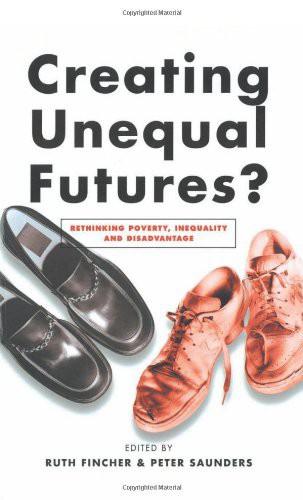
Creating Unequal Futures?: Rethinking Poverty, Inequality and Disadvantage
by
Ruth Fincher
and
Peter Saunders
Published 1 Jul 2001
A Study of Class Mobility in Industrial Societies, Clarendon Press, Oxford Esping-Andersen, G. 1990 The Three Worlds of Welfare Capitalism, Polity Press, Cambridge ——1994 After the Golden Age: welfare and employment in open economies, Synthesis paper for UN Social Summit, UNRISD Ettema, J.S. and Glasser, T.L. 1988 ‘Narrative form and moral force: the realization of innocence and guilt through investigative journalism’ Journal of Communication vol. 38, no. 3, pp. 8–26 European Academy of the Urban Environment 1998 New Industrial Arrangements in the Labour Market: Transitional Labour Markets as a New Full Employment Concept, The Academy, Berlin 234 PDF OUTPUT c: ALLEN & UNWIN r: DP2\BP4401W\MAIN p: (02) 6232 5991 f: (02) 6232 4995 36 DAGLISH STREET CURTIN ACT 2605 234 REFERENCES European Commission 1997 ‘Modernising and improving social protection in the European Union’ http://europa.eu.int/en/comm/dg05/ soc-prot/com97102/commuen.htm Eurostat 1990 Poverty in Figures, Europe in the Early 1980s, Statistical Office of the European Communities, Luxembourg Fagan, R.H. and Webber, M. 1994 Global Restructuring: The Australian Experience Oxford University Press, Melbourne Farley, R. 1996 ‘The age of extremes: a revisionist perspective’ Demography vol. 33, no. 4, pp. 417–20 Feldstein, M. 1998 Income Inequality and Poverty NBER Working Paper 6770, National Bureau of Economic Research, Cambridge, Mass http://www.nber.org/papers/w6770 Ferrante, A. and Loh, N. 1996 Crime and Justice Statistics for Western Australia: 1994, mimeo, Crime Research Centre, University of Western Australia, Perth Fincher, R. and Nieuwenhuysen, J. eds 1998 Australian Poverty: Then and Now, Melbourne University Press, Melbourne Fincher, R. and Wulff, M. 1998 ‘The locations of poverty and disadvantage’ Australian Poverty: Then and Now eds R. Fincher & J. Nieuwenhuysen, Melbourne University Press, Melbourne, pp. 144–64 Fischer, C. et al. 1996 Inequality by Design: Cracking the Bell Curve Myth, Princeton University Press, Princeton, New Jersey Fitchen, J.M. 1995 ‘Spatial redistribution of poverty through migration of poor people to depressed rural communities’ Rural Sociology vol. 60, no. 2, pp. 181–201 FNQ 2010 Regional Planning Project 1998 Strategic Directions and Regional Priorities for Far North Queensland draft for Consultation, Far North Queensland Regional Planning Advisory Committee for the Queensland Department of Local Government and Planning Forde, S. 1997 ‘A descriptive look at the public role of the Australian independent alternative press’ Asia-Pacific Media Educator no. 3, pp. 118–30 ——1998, ‘The development of the alternative press in Australia’ Media International Australia no. 87, pp. 114–33 Fraser, N. 1989 Unruly Practices: Power, Discourse and Gender in Contemporary Social Theory, University of Minnesota Press, Minneapolis Froud, J. et al. 1997 ‘From social settlement to household lottery’ Economy and Society vol. 26, no. 3, pp. 340–72 Froud, J. et al. 1998 ‘Accumulation based on inequality’: a Keynesian analysis of investment for shareholder value, Paper presented at the 20th Conference of the International Working Party on labour market segmentation, Arco (Trento), July ——1999 ‘The Third Way and the jammed economy’ Capital and Class no. 67, Spring, pp. 155–66 Fuchs, V. 1965 Toward a Theory of Poverty in the Concept of Poverty Task Force on Economic Growth and Opportunity, Chamber of Commerce of the United States, Washington Galbraith, J.K. 1992 Culture of Contentment, Sinclair-Stevenson, London 235 PDF OUTPUT c: ALLEN & UNWIN r: DP2\BP4401W\MAIN p: (02) 6232 5991 f: (02) 6232 4995 36 DAGLISH STREET CURTIN ACT 2605 235 CREATING UNEQUAL FUTURES?
…
But not everyone is agreed that welfare state interventions have been successful or desirable. In recent years there has been increasing concern that the provision of social assistance may lead to long-term dependence on social security payments. These concerns have been expressed most strongly in the United States by commentators such as Charles Murray, who, in his well-known book, Losing Ground, argued that the payment of welfare benefits has reduced incentives to work and has also created incentives for family breakdown (Murray 1984). From this perspective, the 40 PDF OUTPUT c: ALLEN & UNWIN r: DP2\BP4401W\MAIN p: (02) 6232 5991 f: (02) 6232 4995 36 DAGLISH STREET CURTIN ACT 2605 40 UNDERSTANDING POVERTY AND SOCIAL EXCLUSION welfare state itself is seen as the main cause of the poverty it is ostensibly designed to alleviate.
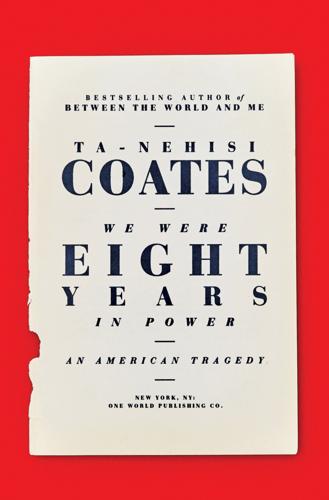
We Were Eight Years in Power: An American Tragedy
by
Ta-Nehisi Coates
Published 2 Oct 2017
The indictment continues: To their neoliberal economics, Democrats, and liberals at large, have married a condescending elitist affect that sneers at blue-collar culture and mocks white men as history’s greatest monster and prime time television’s biggest doofus. In this rendition, Donald Trump is not the product of white supremacy so much as the product of a backlash against contempt for white working people. “We so obviously despise them, we so obviously condescend to them,” Charles Murray, a conservative social scientist who co-wrote The Bell Curve, recently told The New Yorker’s George Packer. “The only slur you can use at a dinner party and get away with is to call somebody a redneck—that won’t give you any problems in Manhattan.” “The utter contempt with which privileged Eastern liberals such as myself discuss red-state, gun-country, working-class America as ridiculous and morons and rubes,” charged Anthony Bourdain, “is largely responsible for the upswell of rage and contempt and desire to pull down the temple that we’re seeing now.”

Global Spin: The Corporate Assault on Environmentalism
by
Sharon Beder
Published 1 Jan 1997
Edwin Feulner, the Foundation’s President, was appointed by Gingrich and Republican Senate Majority Leader Bob Dole as Vice Chairman of the National Commission on Economic Growth and Tax Reform.70 Traditionally, newly elected members of congress have attended Harvard’s Kennedy School of Government for their orientation programme, but now Republican congresspeople are flocking instead to a programme set up by the Heritage Foundation and Empower America to hear speeches from the likes of Charles Murray (of The Bell Curve fame) and Rush Limbaugh (right-wing radio talk-back host).71 Heritage employees claim that much of the Contract with America was shaped by them. Indeed some members of Congress admit that Foundation researchers were ‘key architects’ of some proposed legislation, including the plan to overhaul welfare.

On the Edge: The Art of Risking Everything
by
Nate Silver
Published 12 Aug 2024
Maybe Netflix Guy and Strip Club Guy aren’t even shopping at the same grocery store anymore; Netflix Guy moved to the country now that he doesn’t need to be in the office, and Strip Club Guy moved to Miami—and was probably playing against me in the poker tournament. I want to be careful here. In any statistical distribution, you’ll find some people on either end of the bell curve, and this book often focuses on people on the extreme right tail of risk. But risk-taking is an understudied personality trait, and the academic literature is divided over the extent some people are generally more risk-taking as opposed to taking risks within specific domains. My favorite example of a domain-specific risk-taker is Dr.
…
GO TO NOTE REFERENCE IN TEXT around 1 chance in 6: Matt Lott and John Stossel, “Election Betting Odds,” Election Betting Odds, November 7, 2016, web.archive.org/web/20161108000856/electionbettingodds.com. GO TO NOTE REFERENCE IN TEXT make billions of dollars: Alfred Charles and Joan Murray, “Seminole Tribe Announces Expanded Gambling Options—Craps, Roulette, Sports Betting—at All Florida Locations,” CBS News Miami, November 1, 2023, cbsnews.com/miami/news/seminole-tribe-announces-expanded-gambling-options-craps-roulette-sports-betting-at-all-florida-locations. GO TO NOTE REFERENCE IN TEXT 2000 presidential election: Jonathan N.

Rationality: From AI to Zombies
by
Eliezer Yudkowsky
Published 11 Mar 2015
Is there a limit to the market incentive to make video games more engaging? You might hope there’d be no incentive past the point where the players lose their jobs; after all, they must be able to pay their subscription fee. This would imply a “sweet spot” for the addictiveness of games, where the mode of the bell curve is having fun, and only a few unfortunate souls on the tail become addicted to the point of losing their jobs. As of 2007, playing World of Warcraft for 58 hours straight until you literally die is still the exception rather than the rule. But video game manufacturers compete against each other, and if you can make your game 5% more addictive, you may be able to steal 50% of your competitor’s customers.
…
London: John Murray, 1859. http://darwin-online.org.uk/content/frameset?viewtype=text&itemID=F373&pageseq=1. ———. The Descent of Man, and Selection in Relation to Sex. 2nd ed. London: John Murray, 1874. http://darwin-online.org.uk/content/frameset?itemID=F944&viewtype=text&pageseq=1. Darwin, Francis, ed. The Life and Letters of Charles Darwin. John Murray, 1887. Dawes, Robyn M. House of Cards: Psychology and Psychotherapy Built on Myth. Free Press, 1996. ———. Rational Choice in An Uncertain World. 1st ed. Edited by Jerome Kagan. San Diego, CA: Harcourt Brace Jovanovich, 1988. De Camp, Lyon Sprague, and Fletcher Pratt. The Incomplete Enchanter.